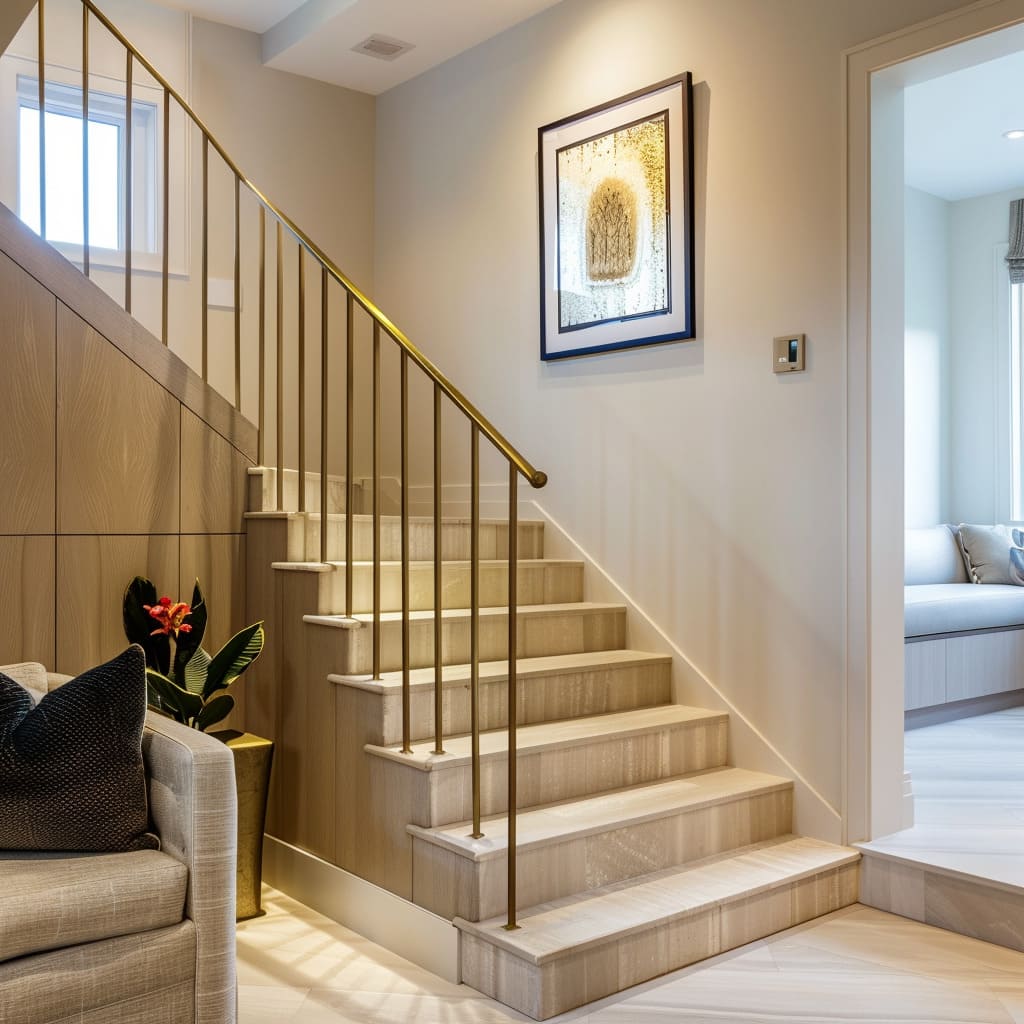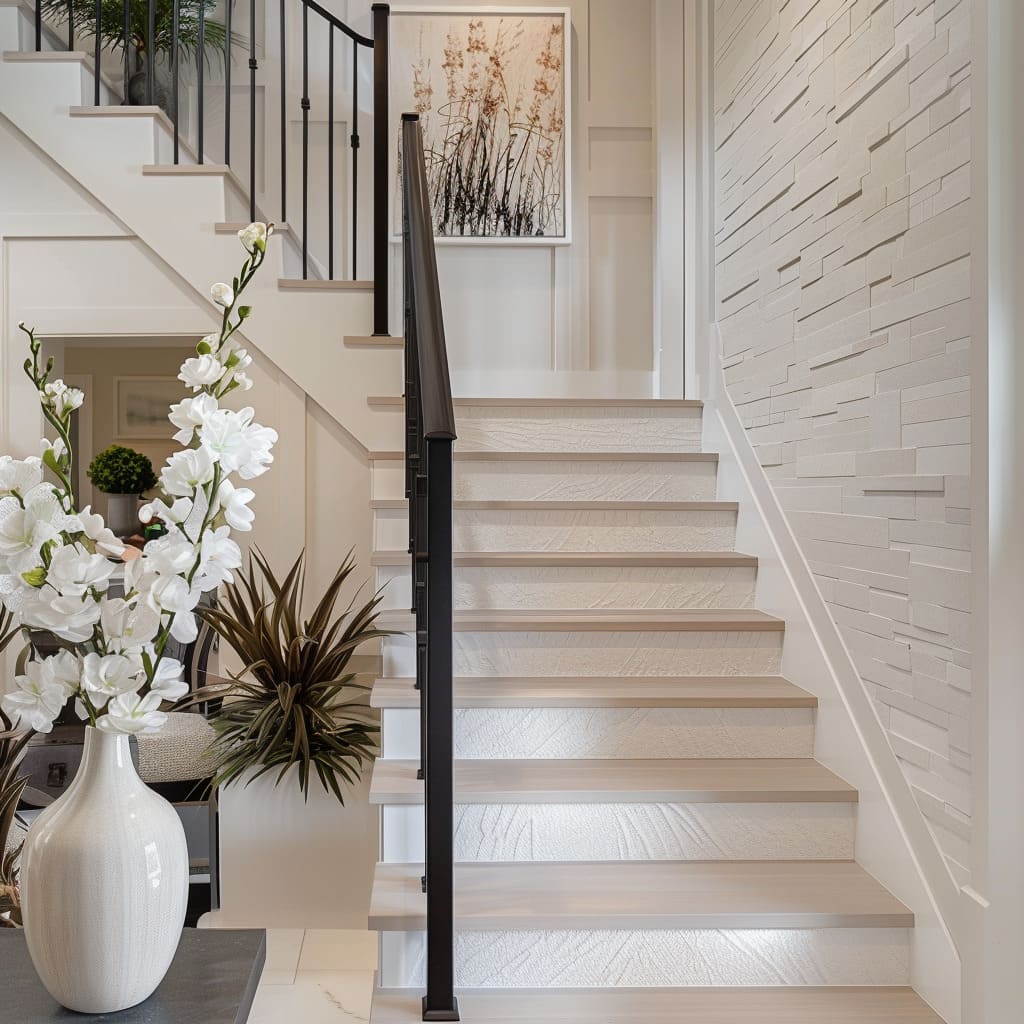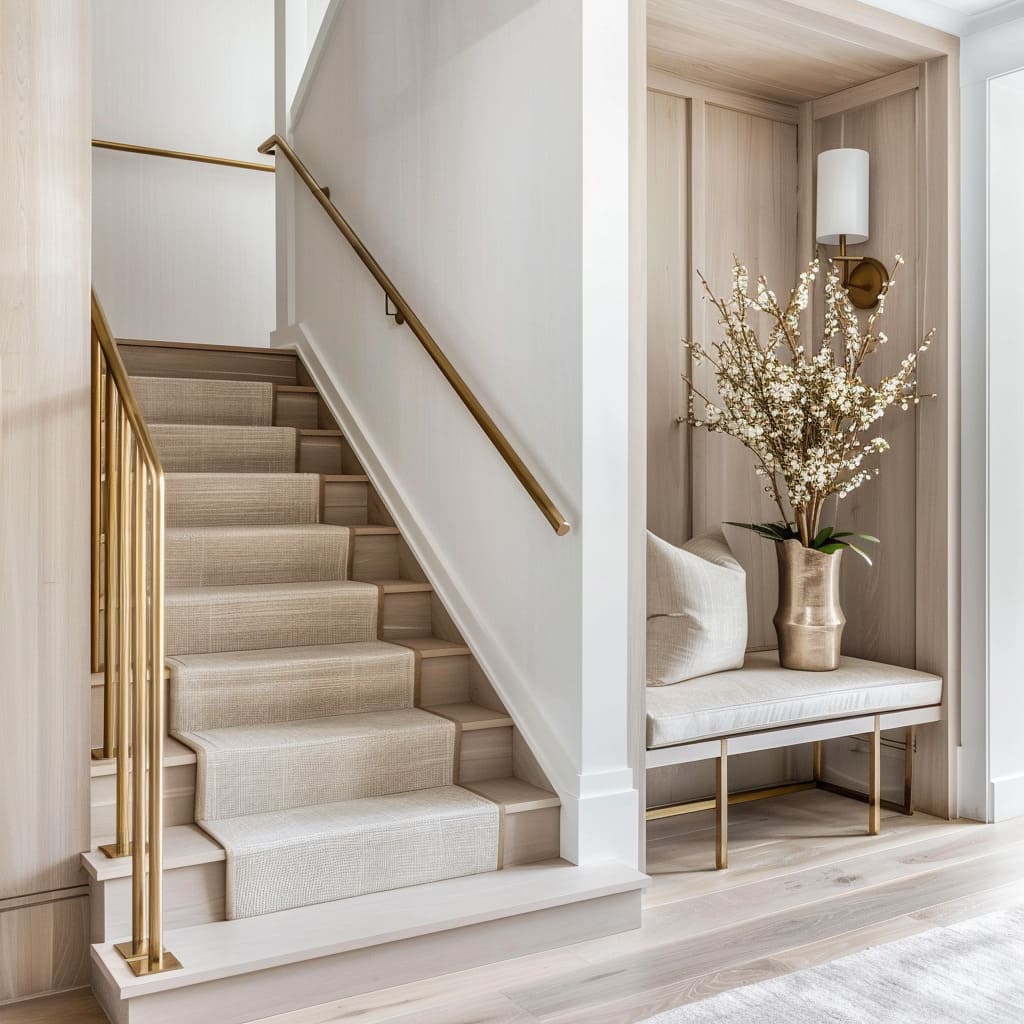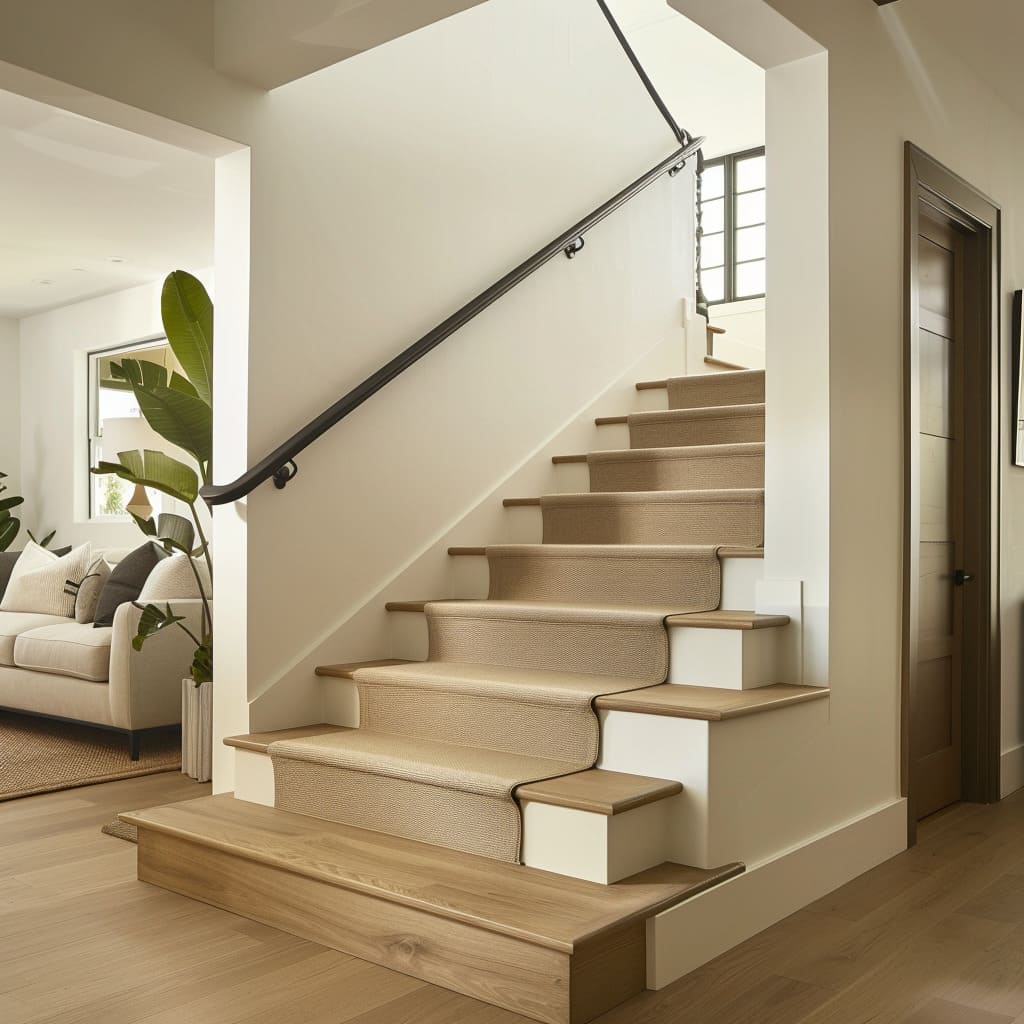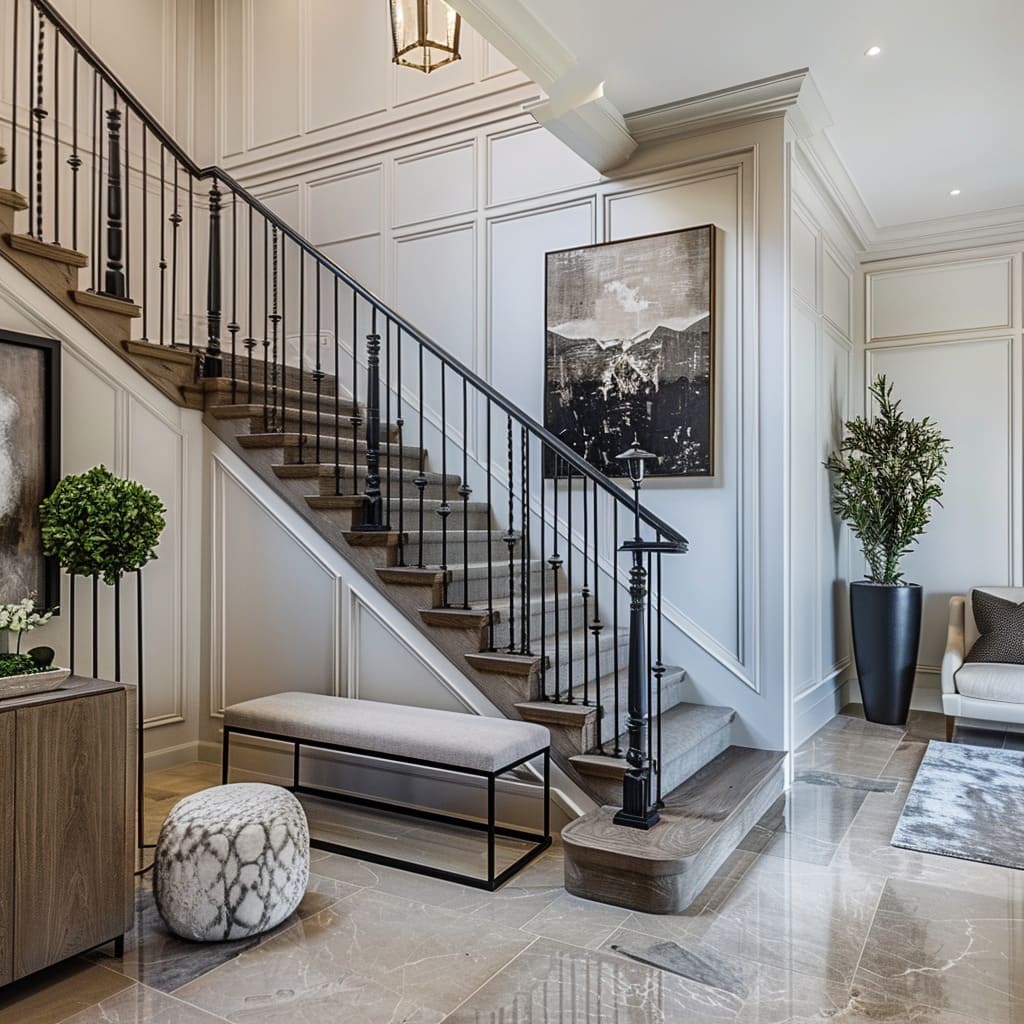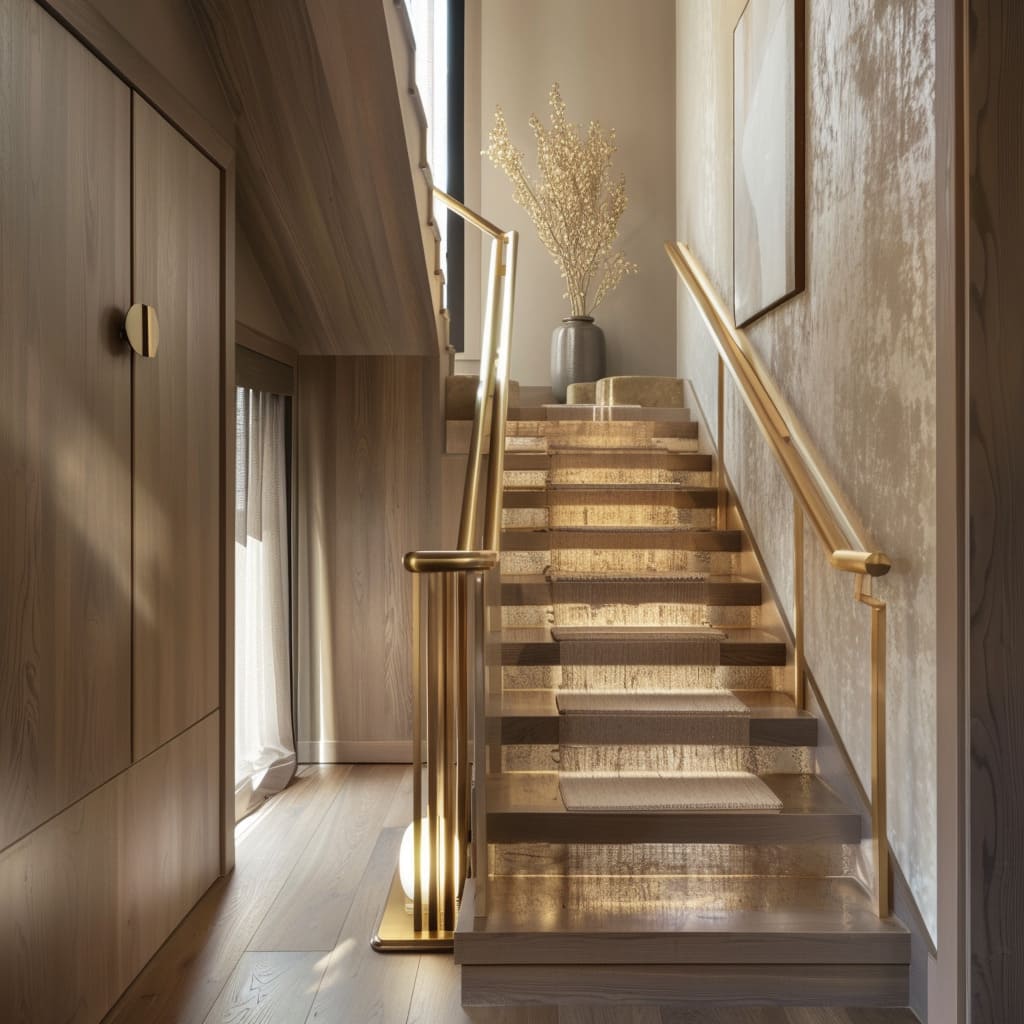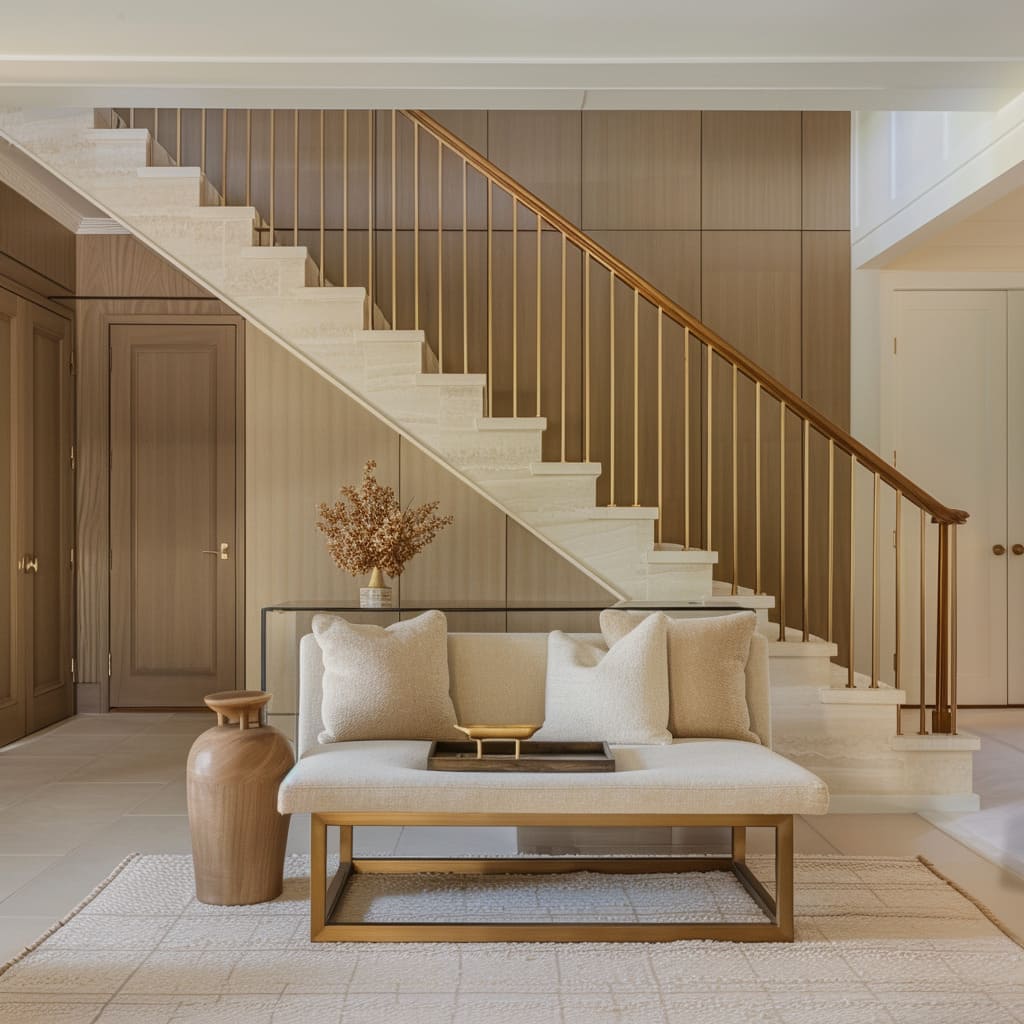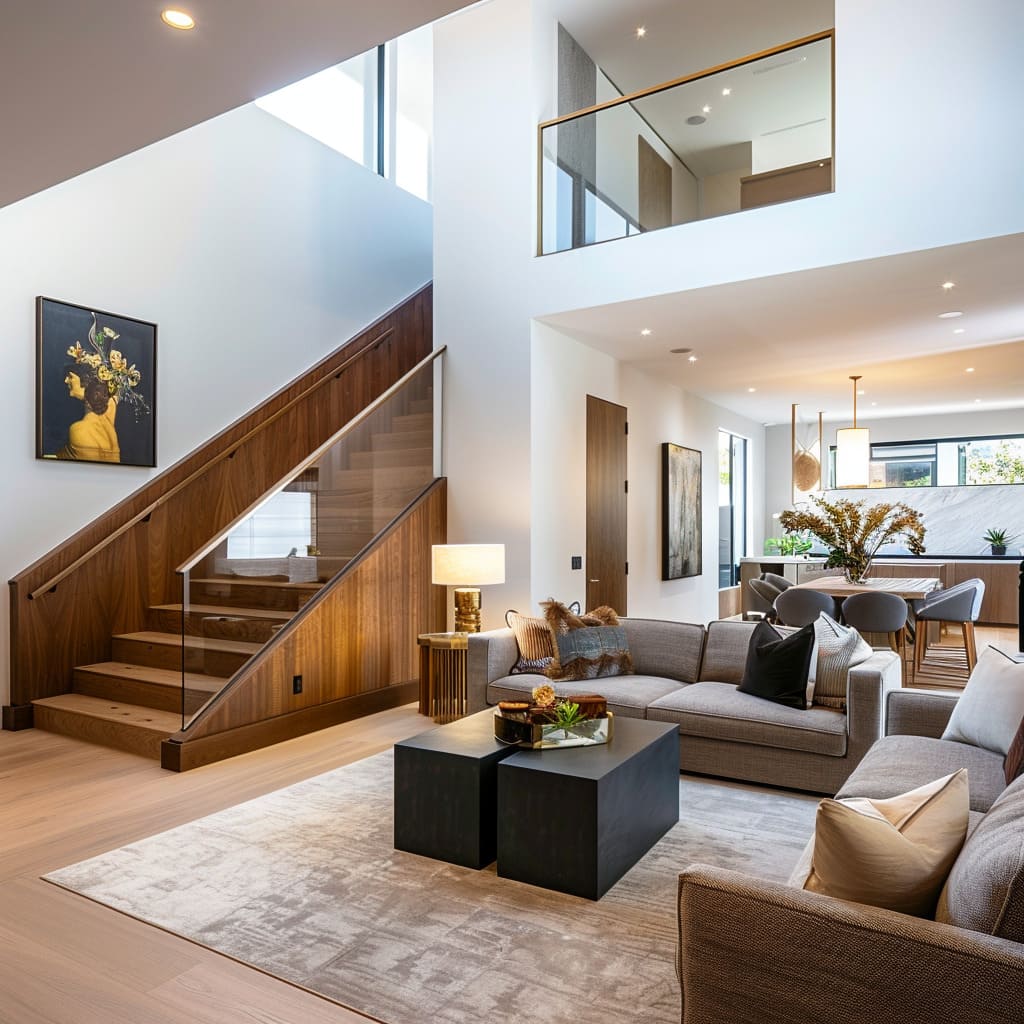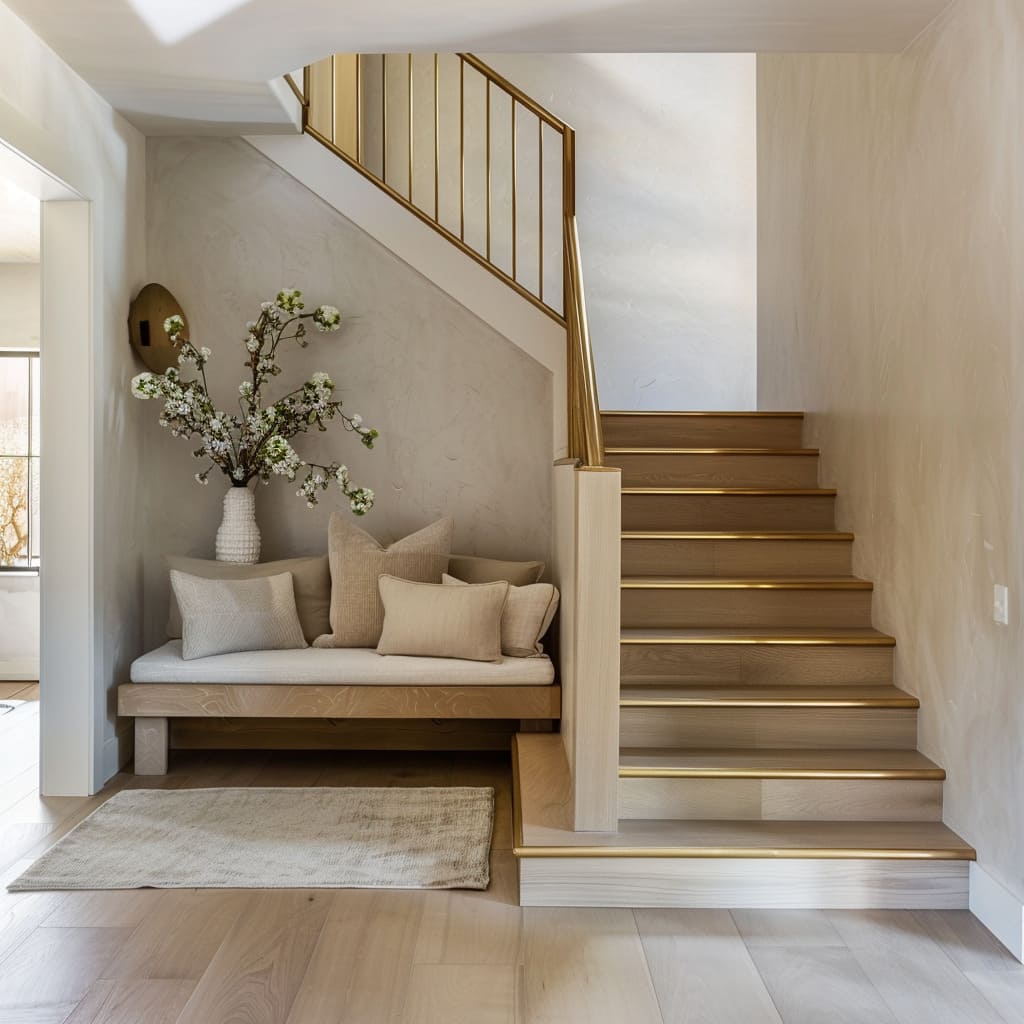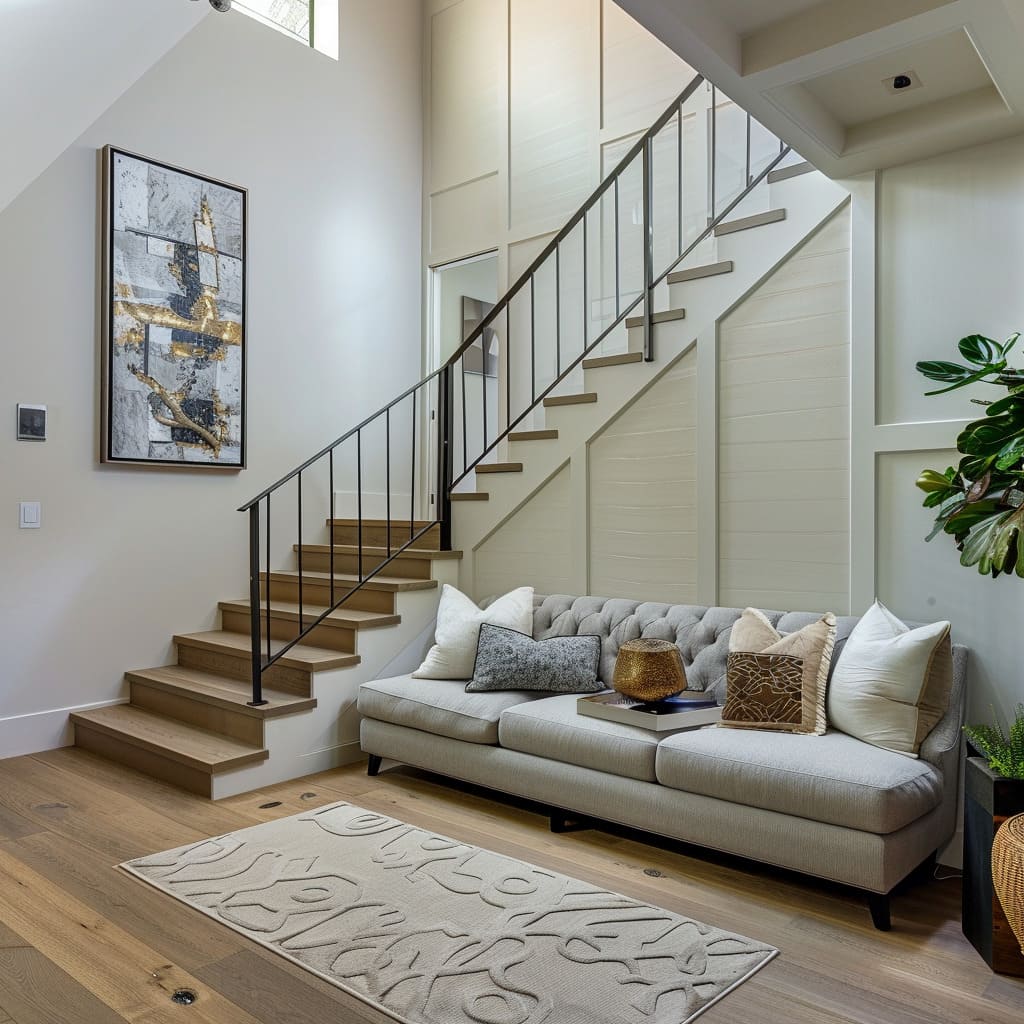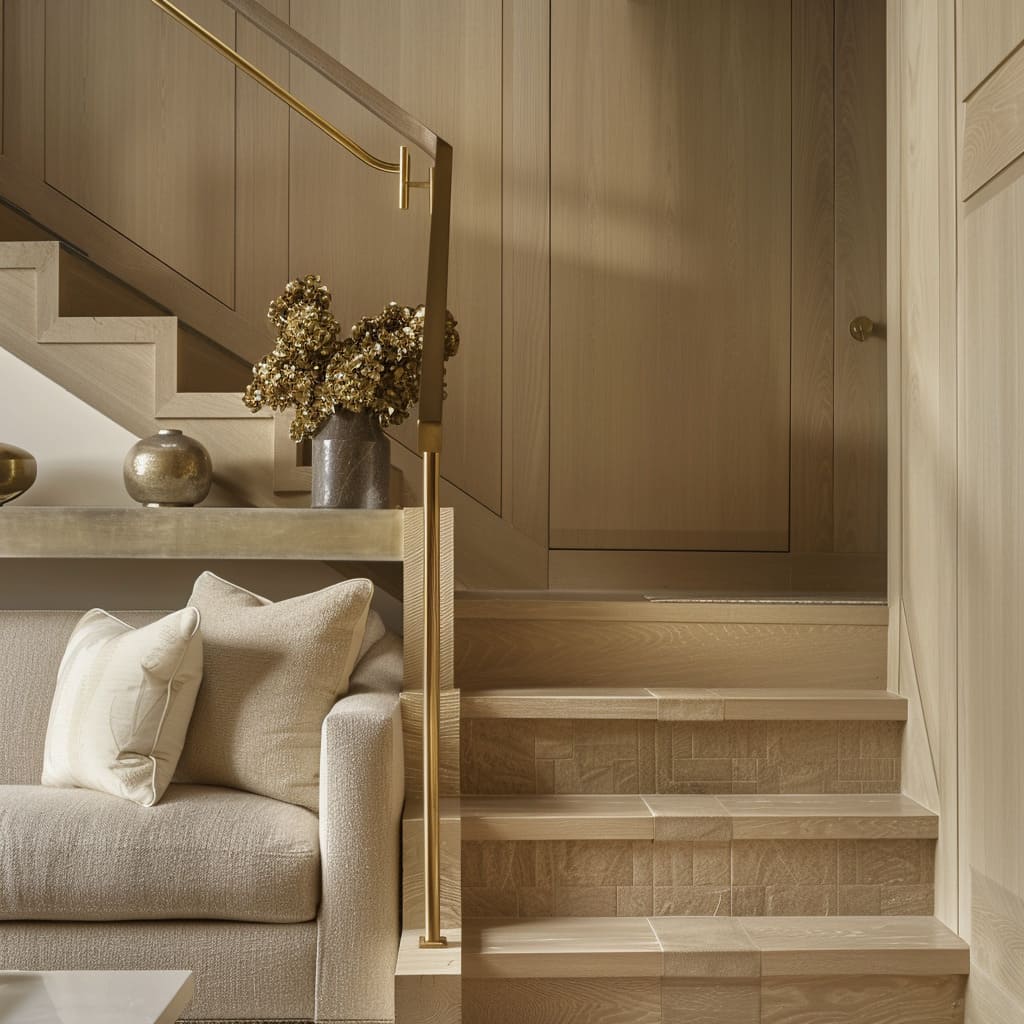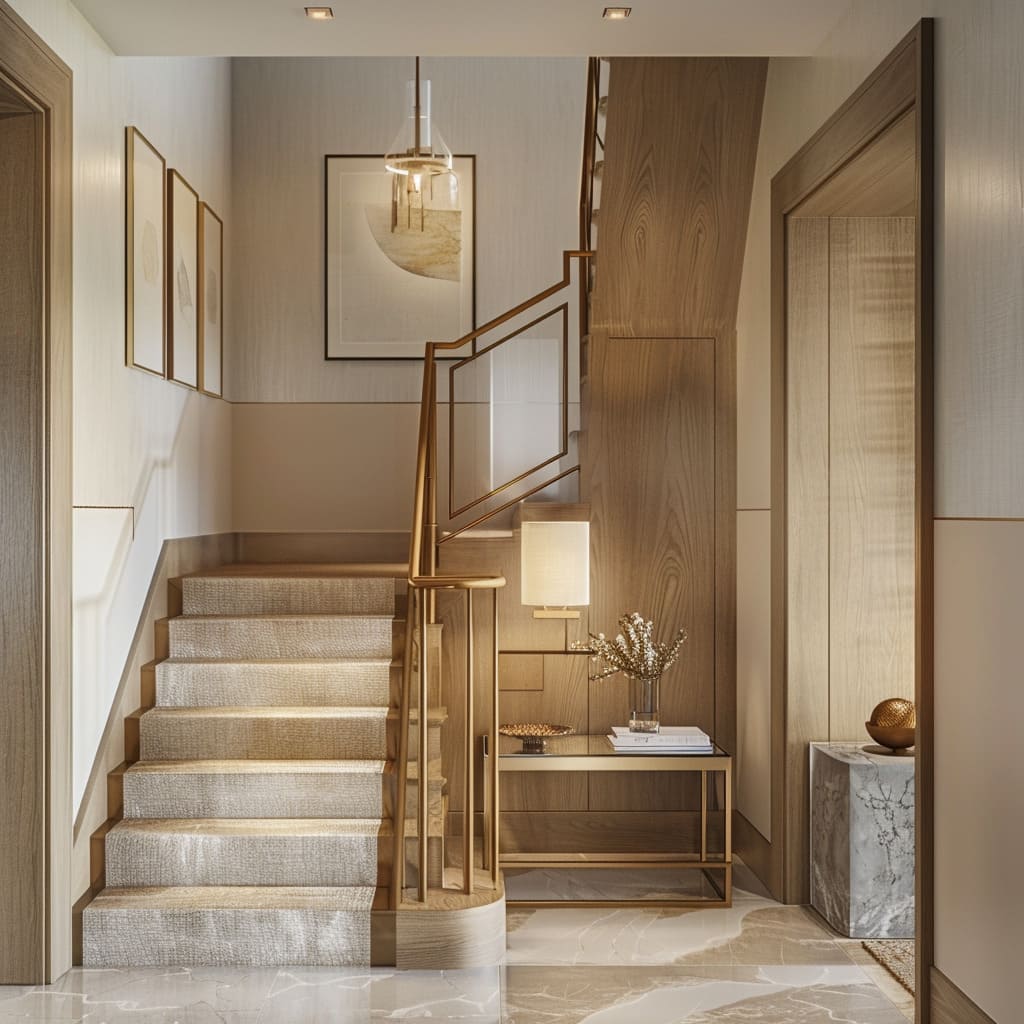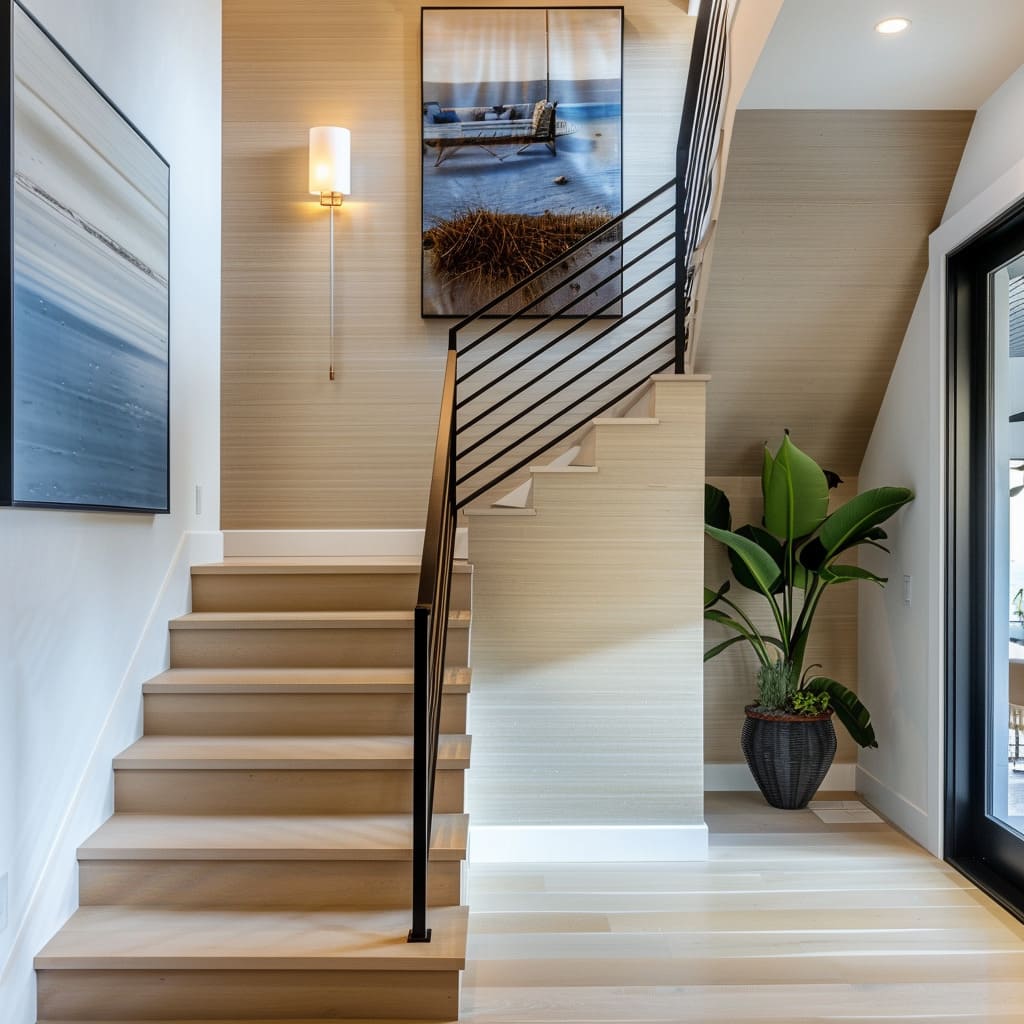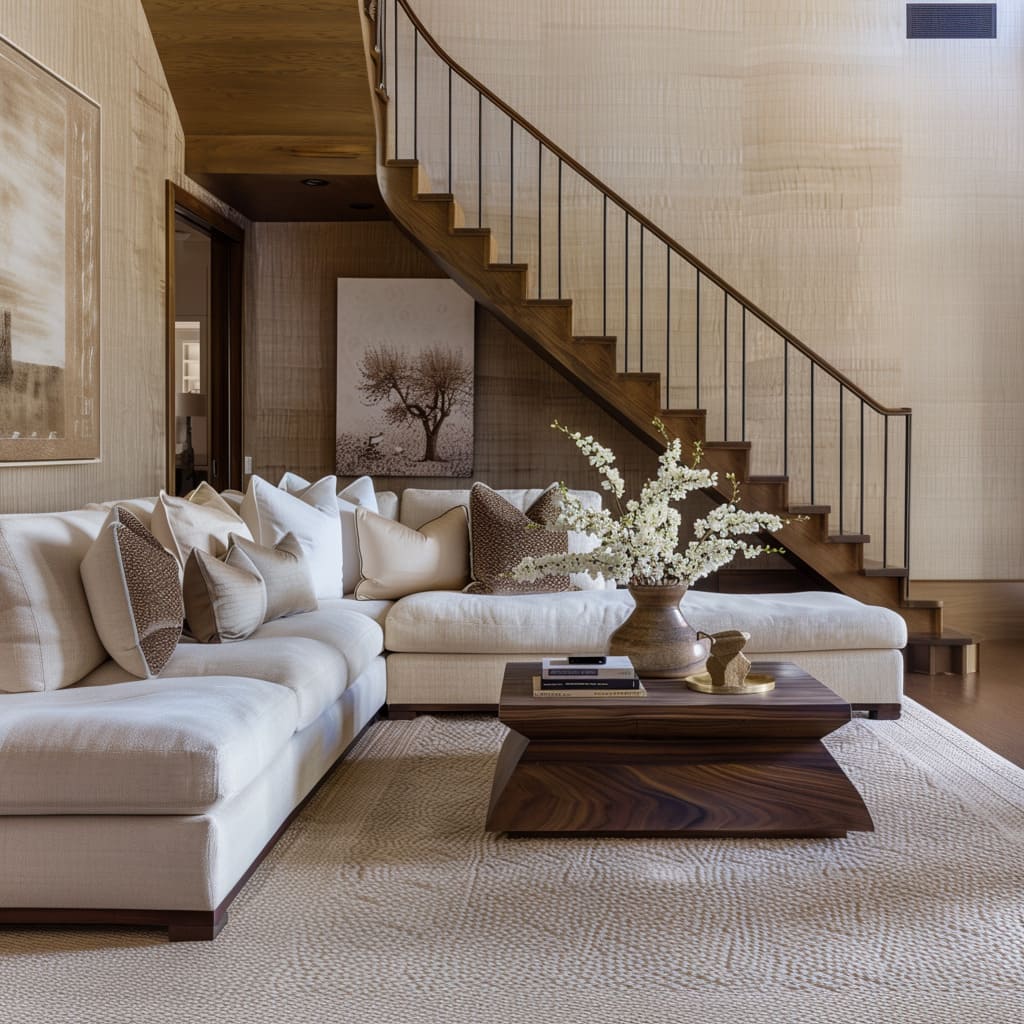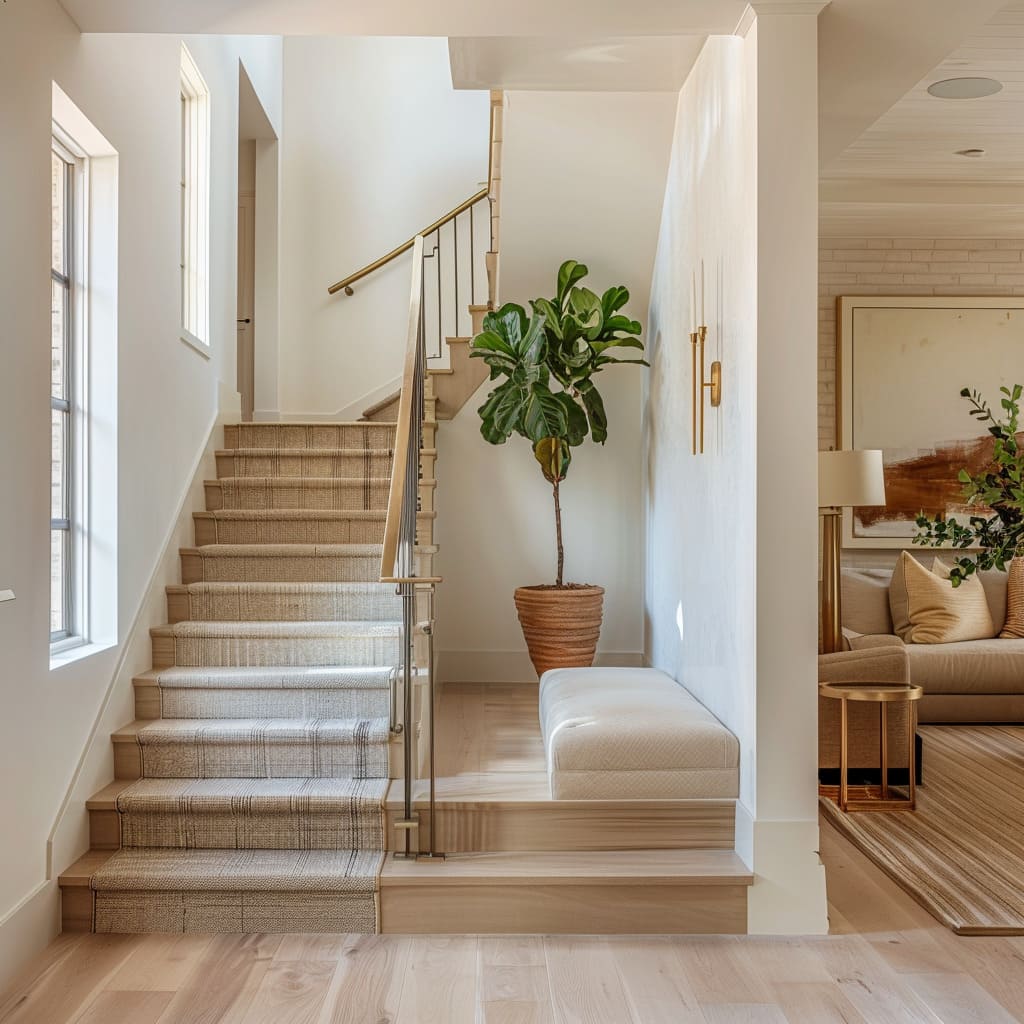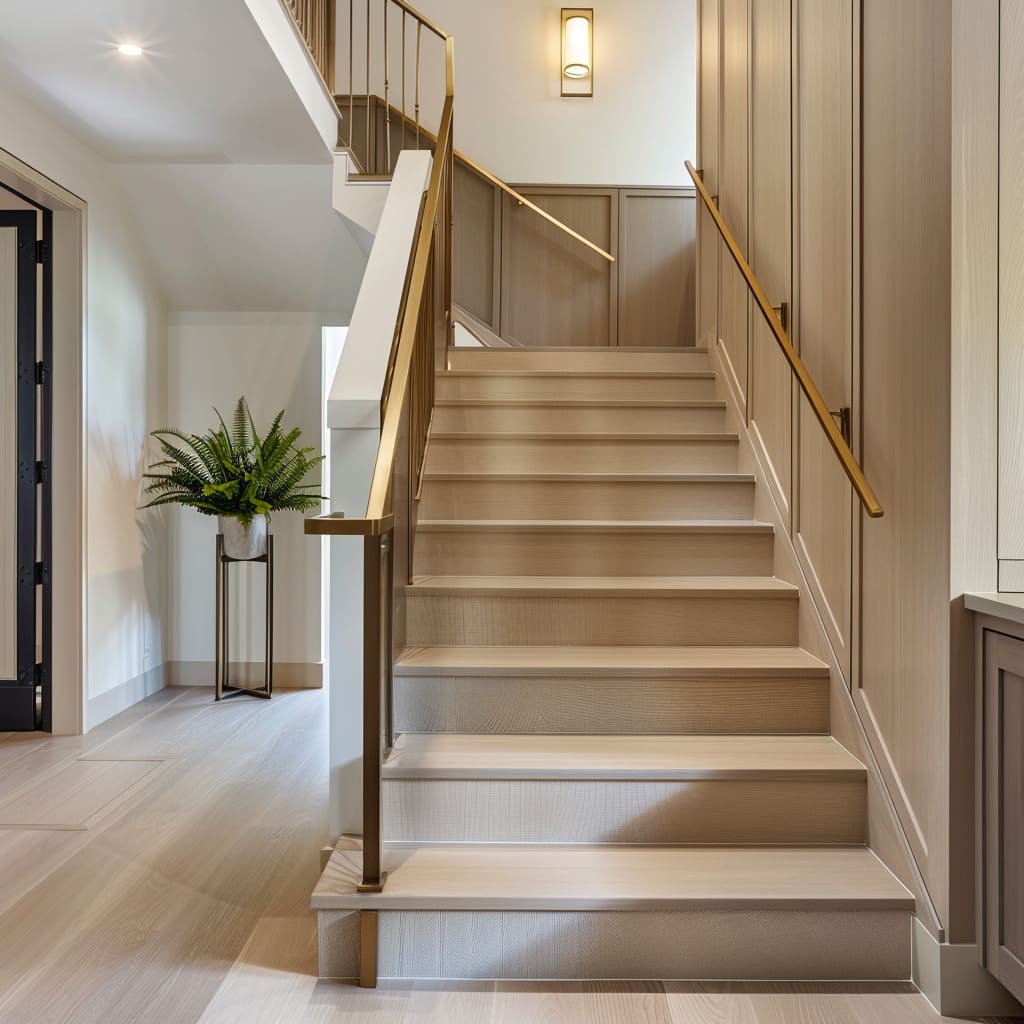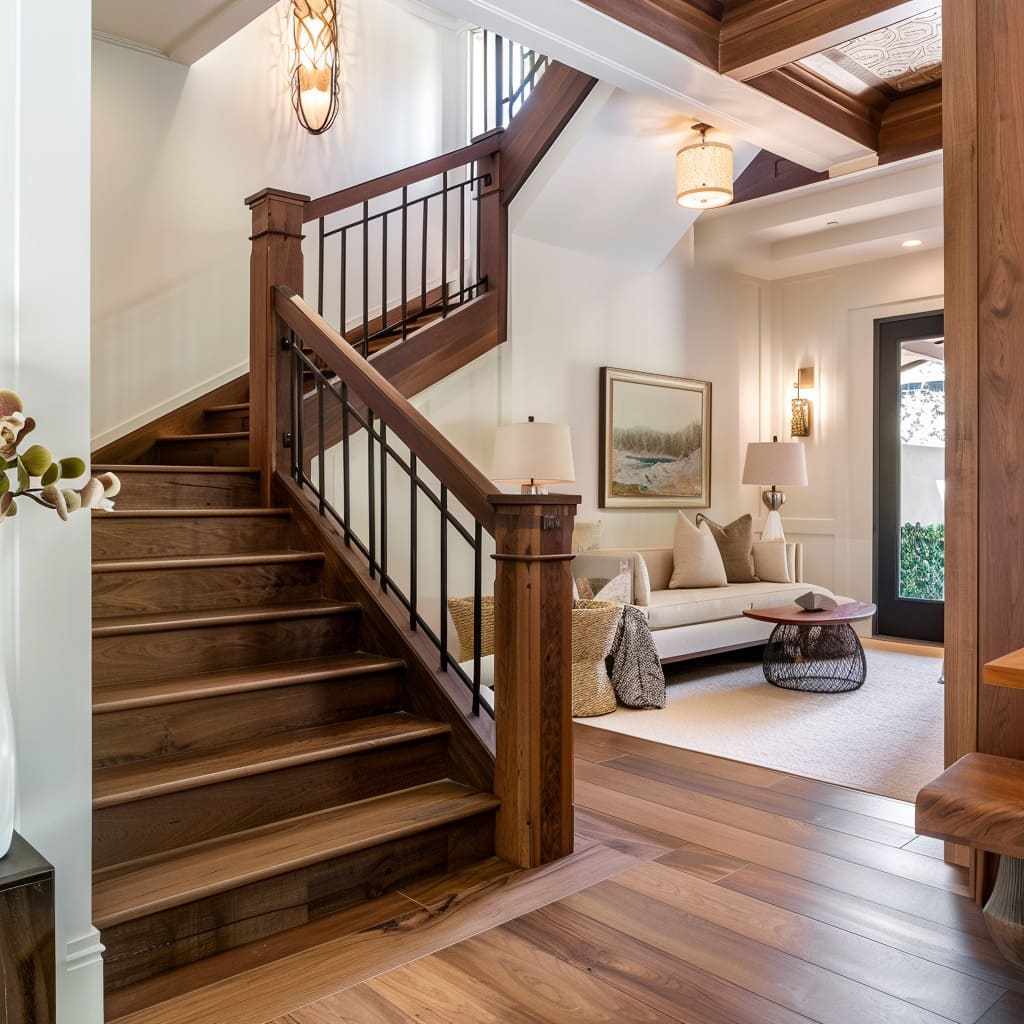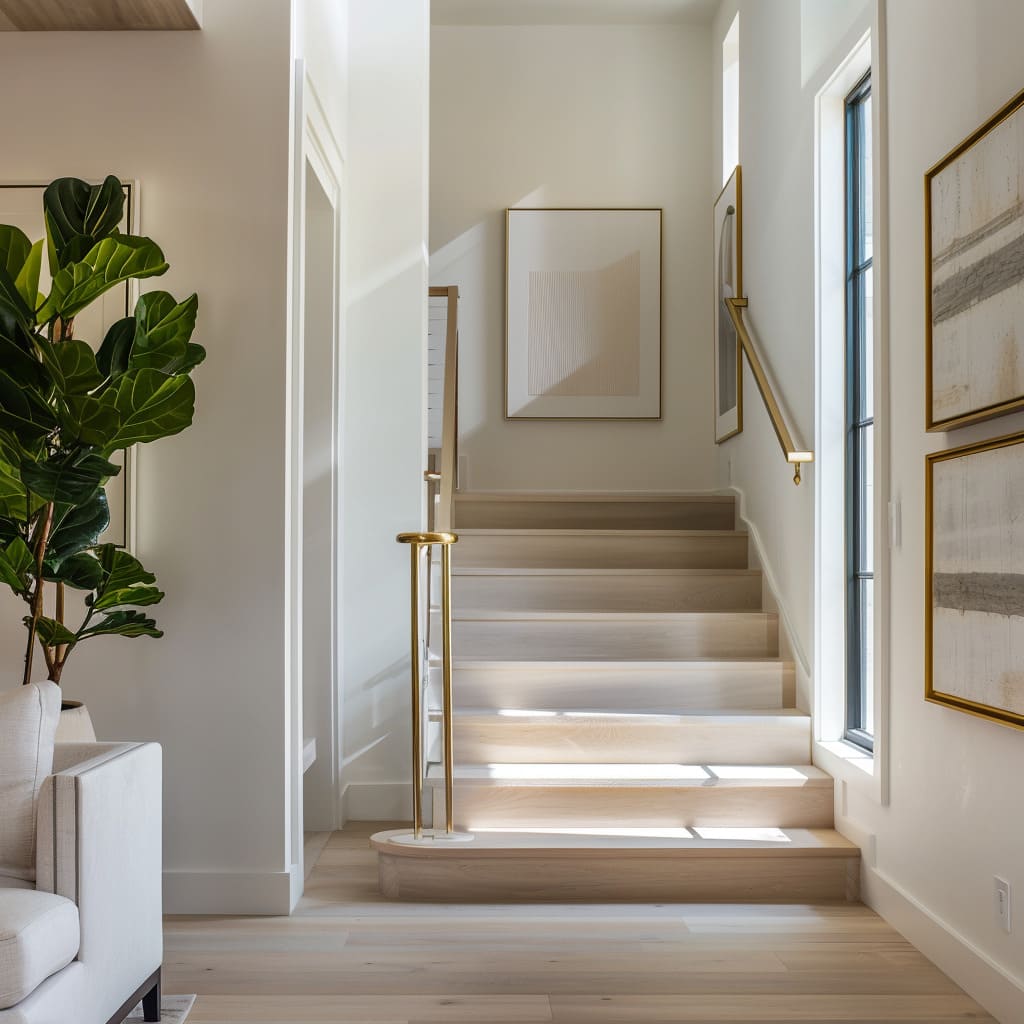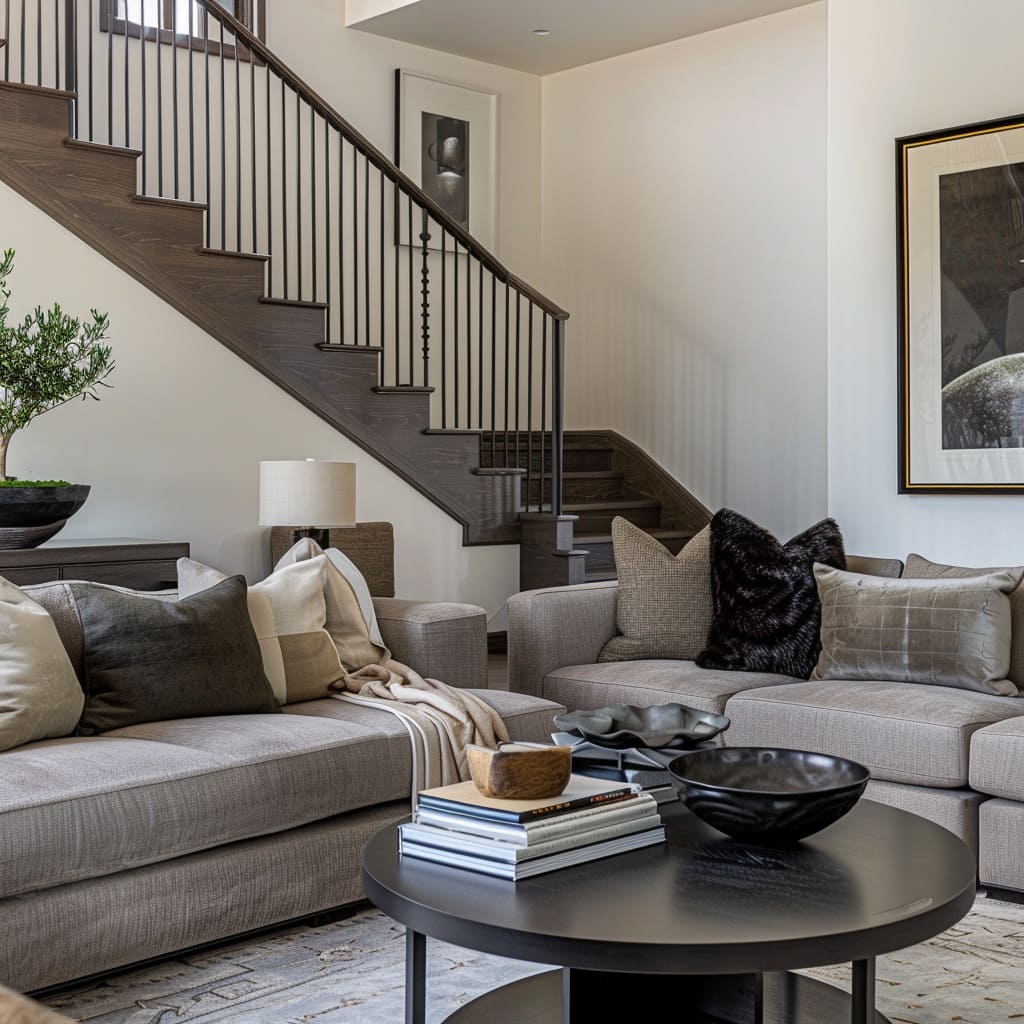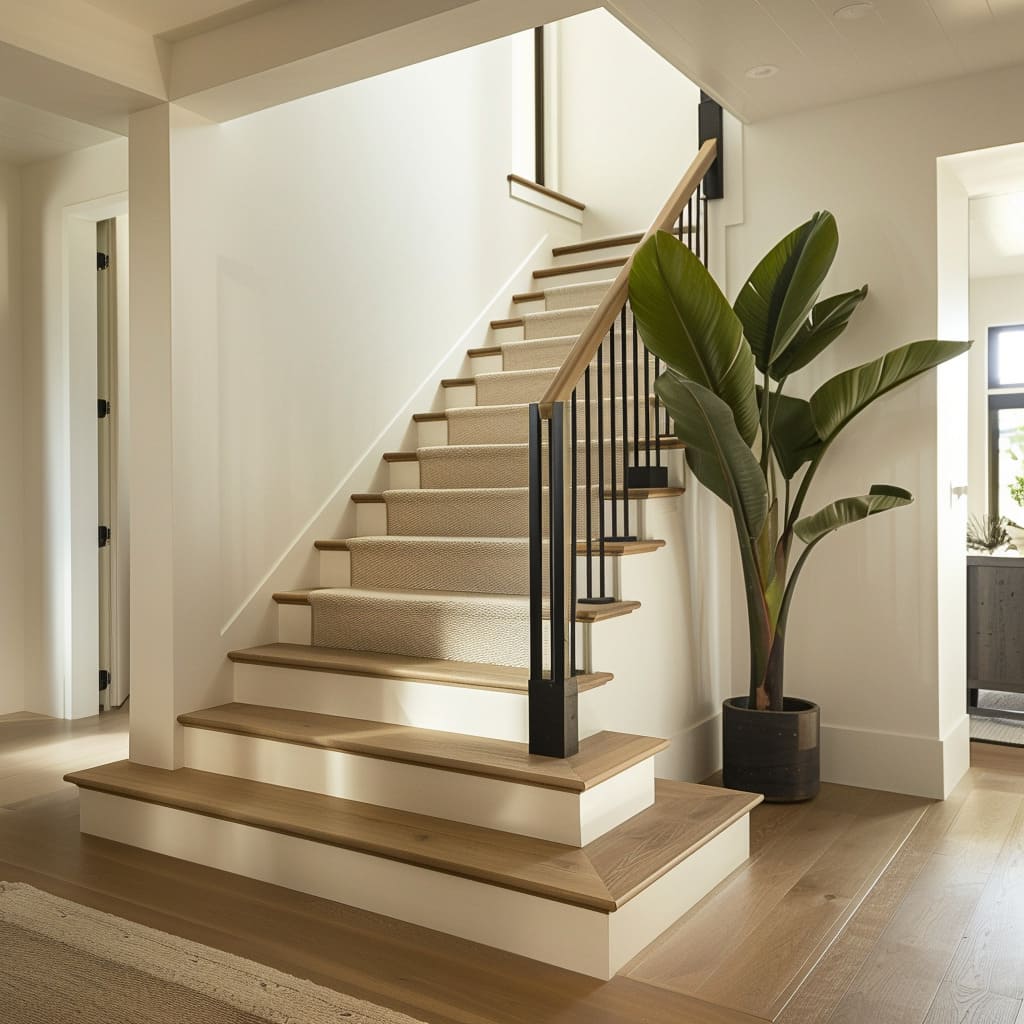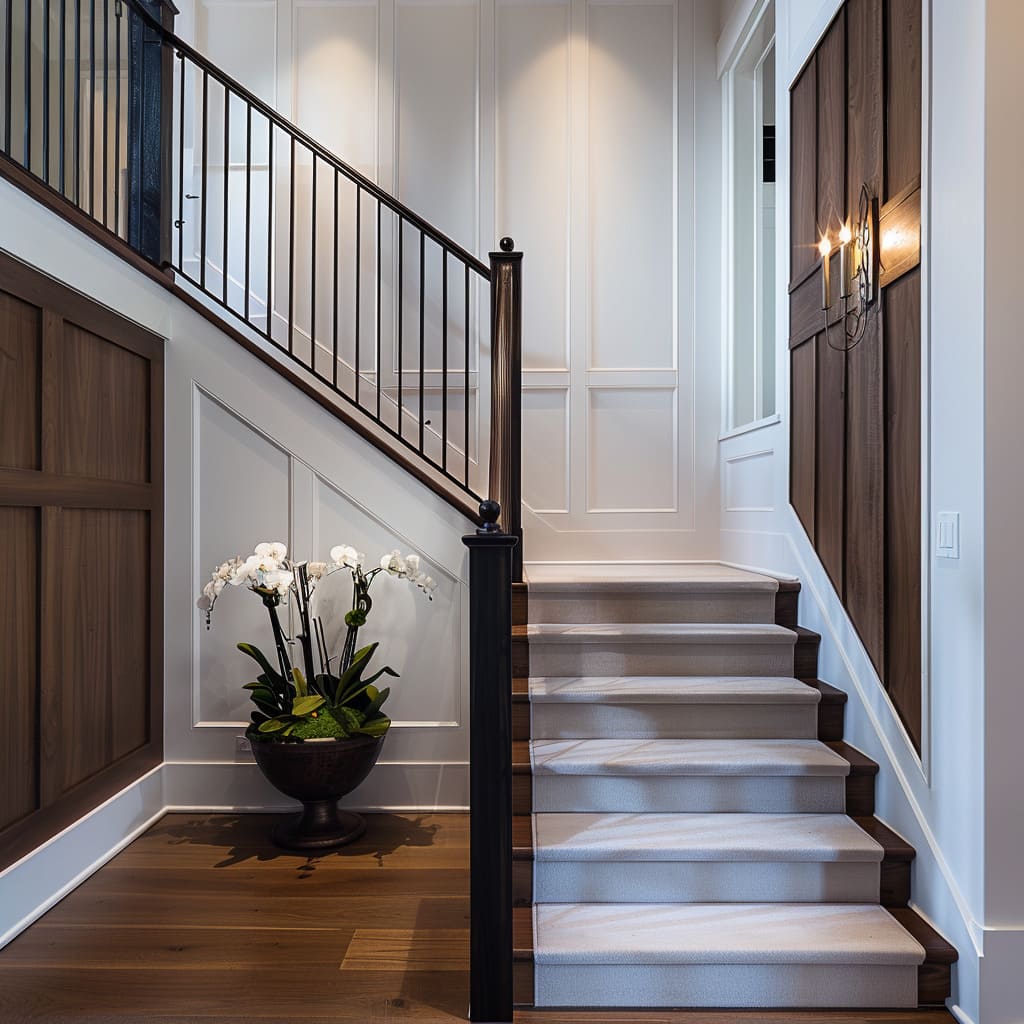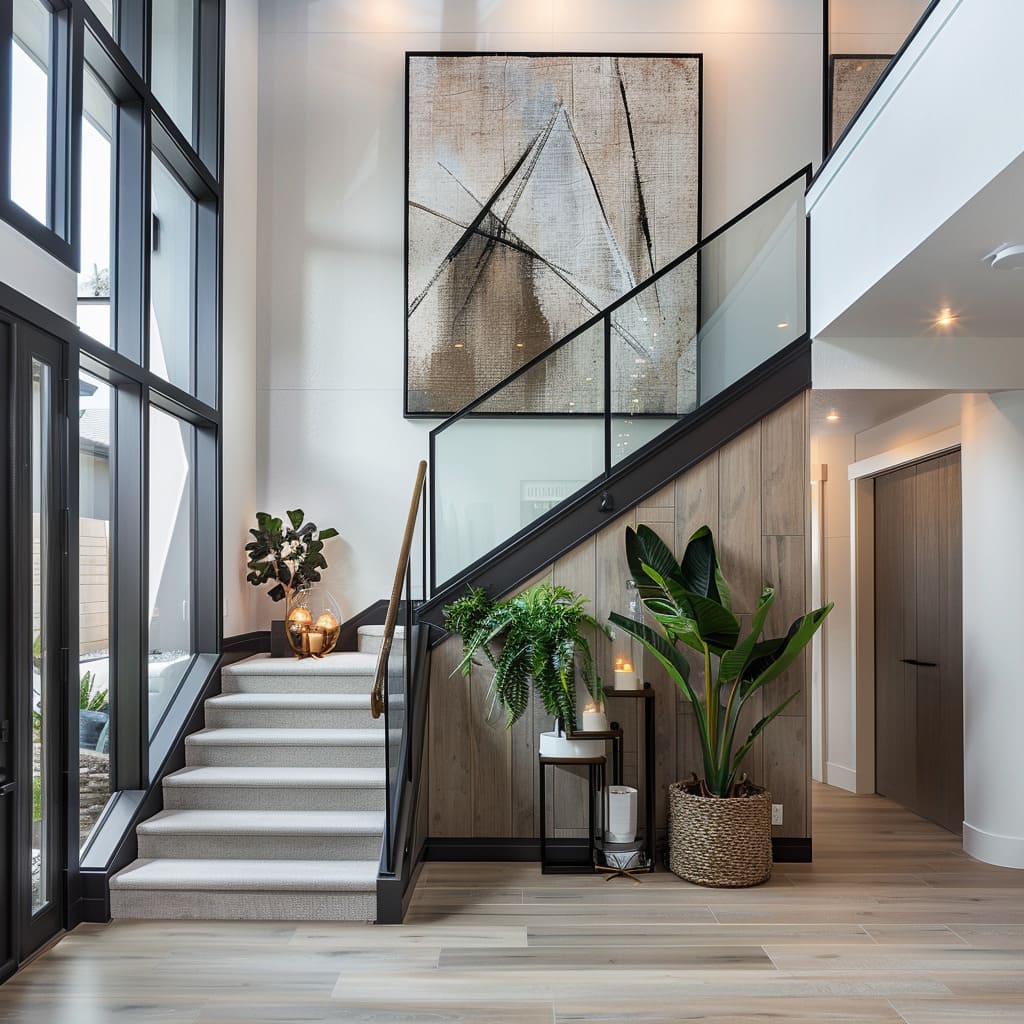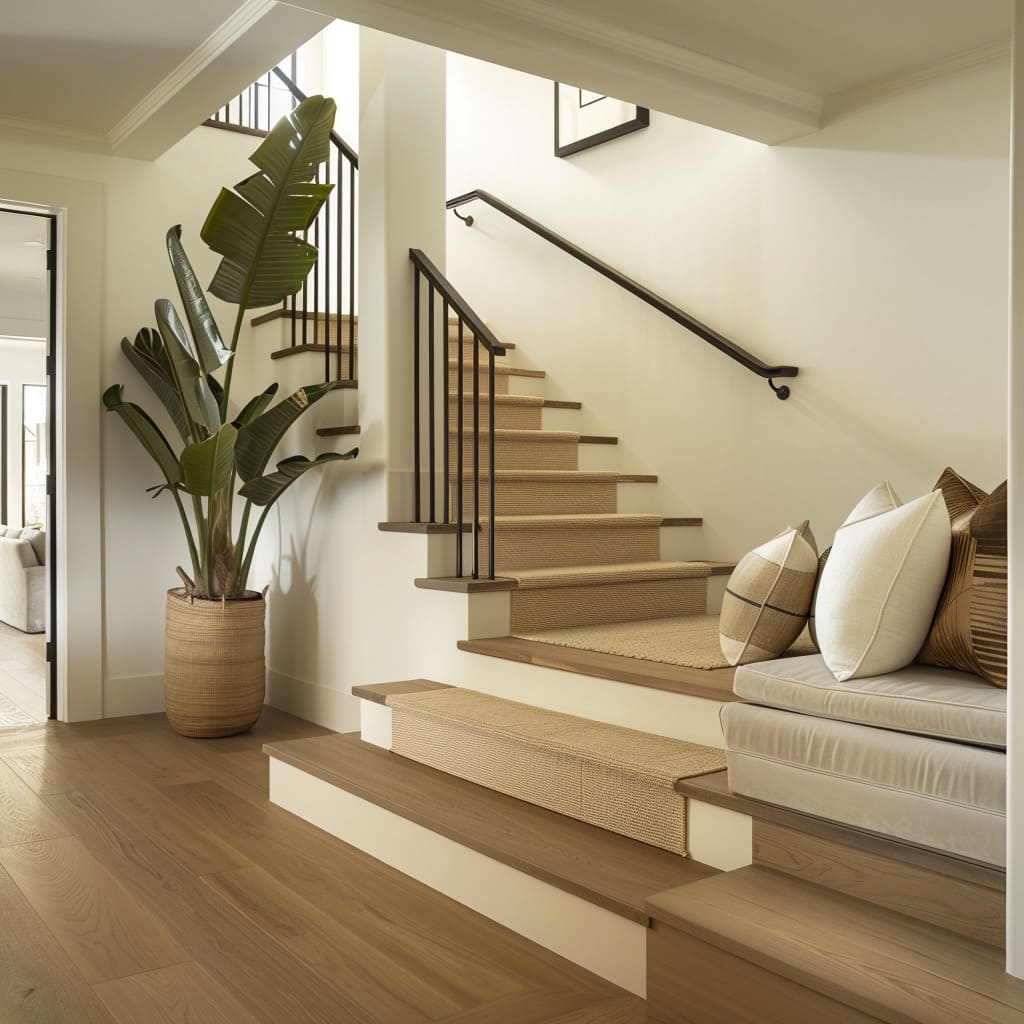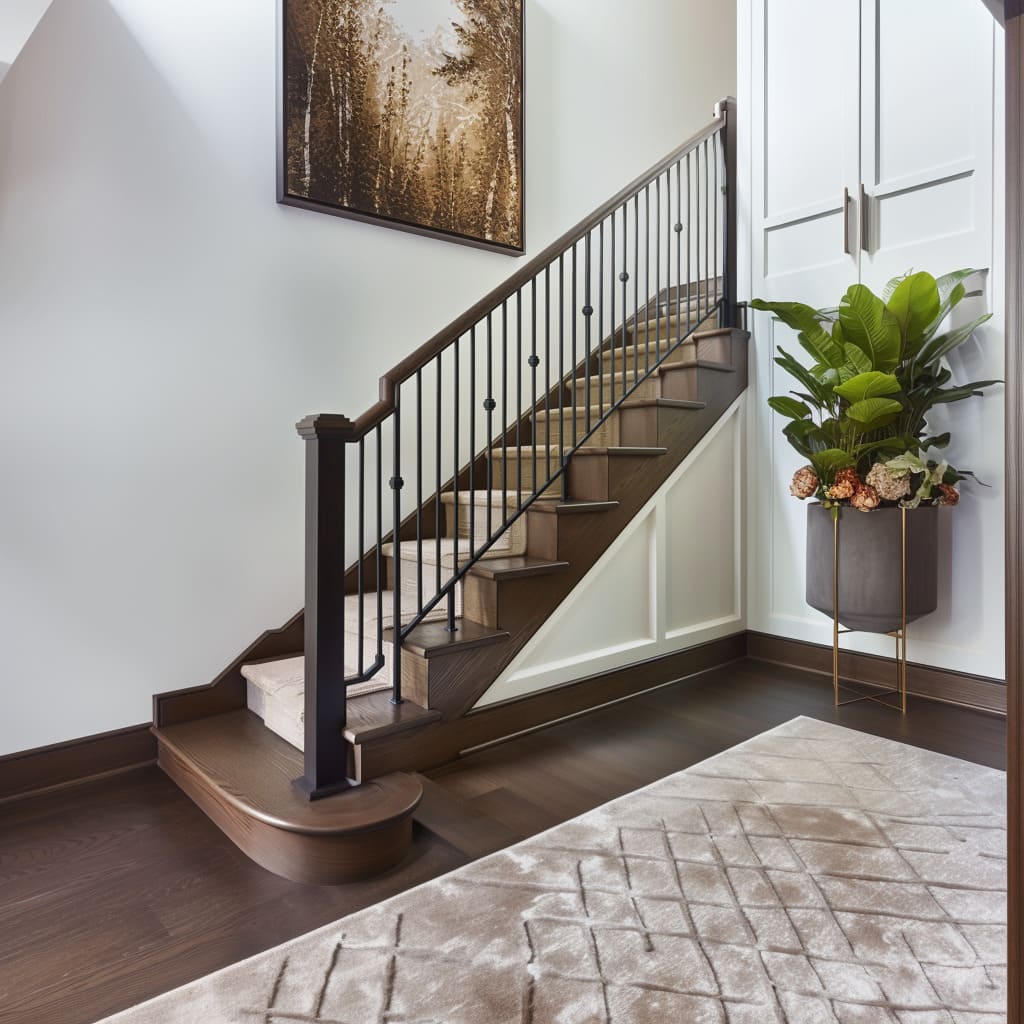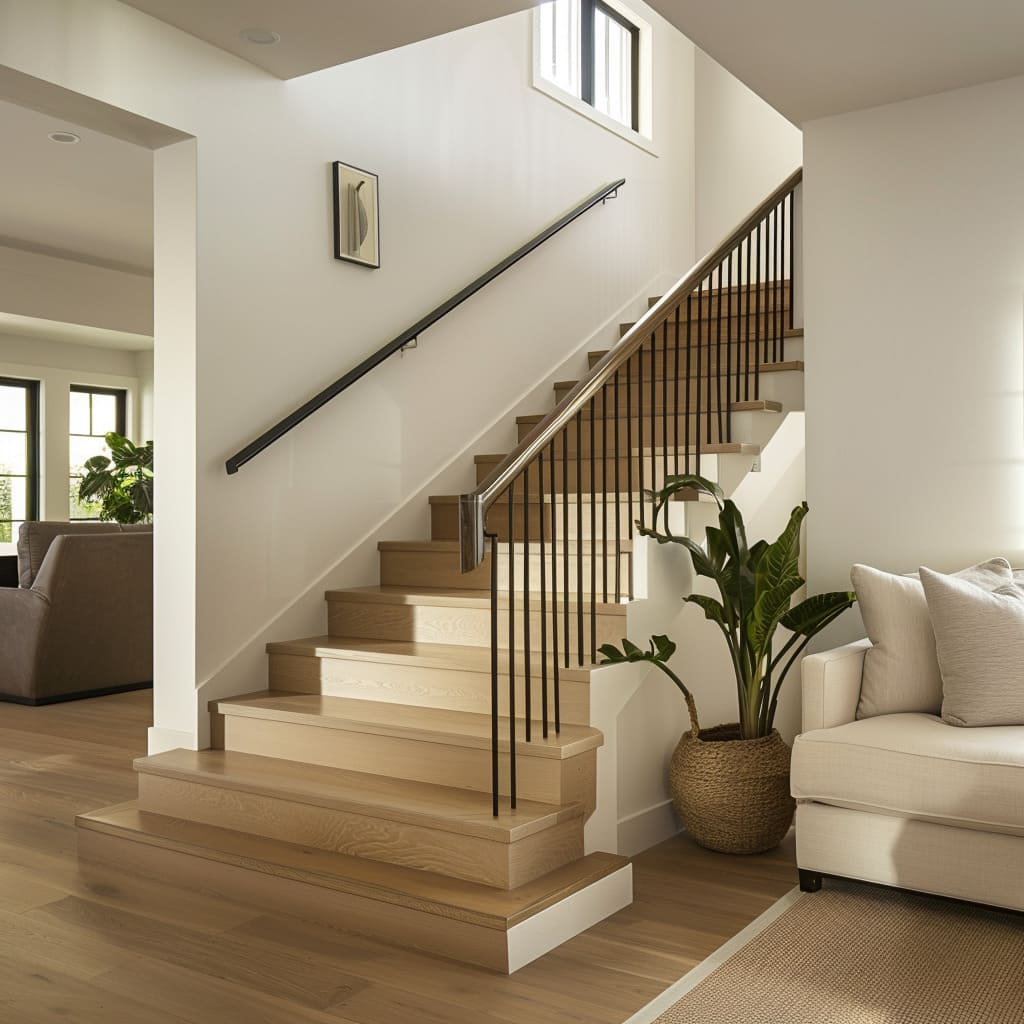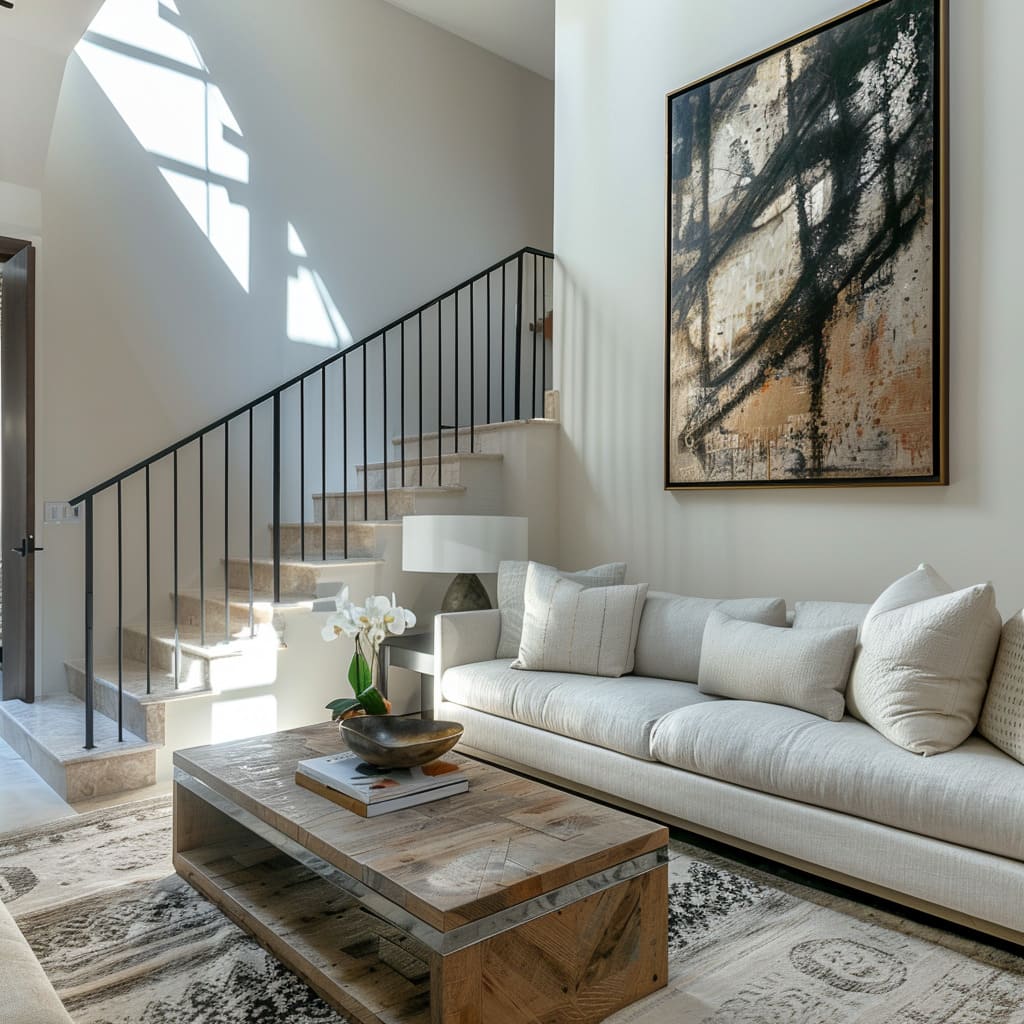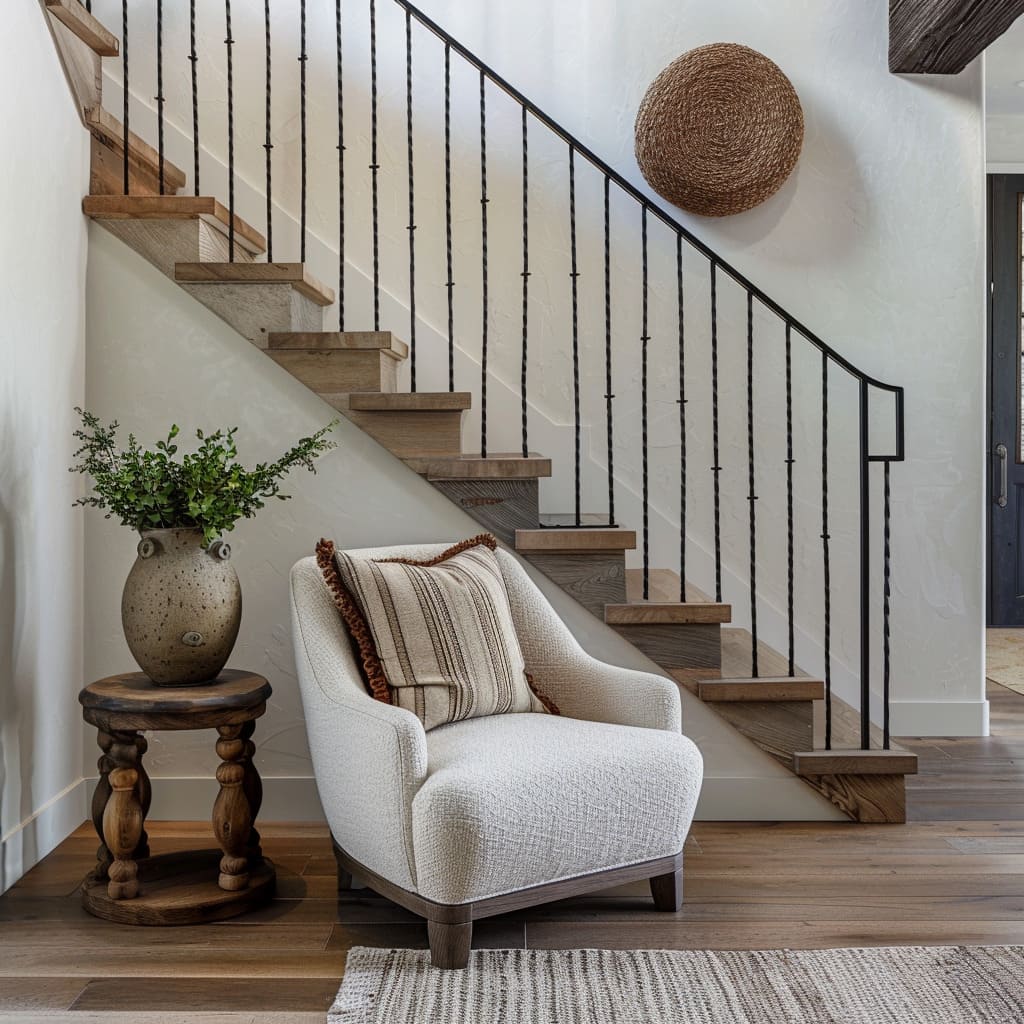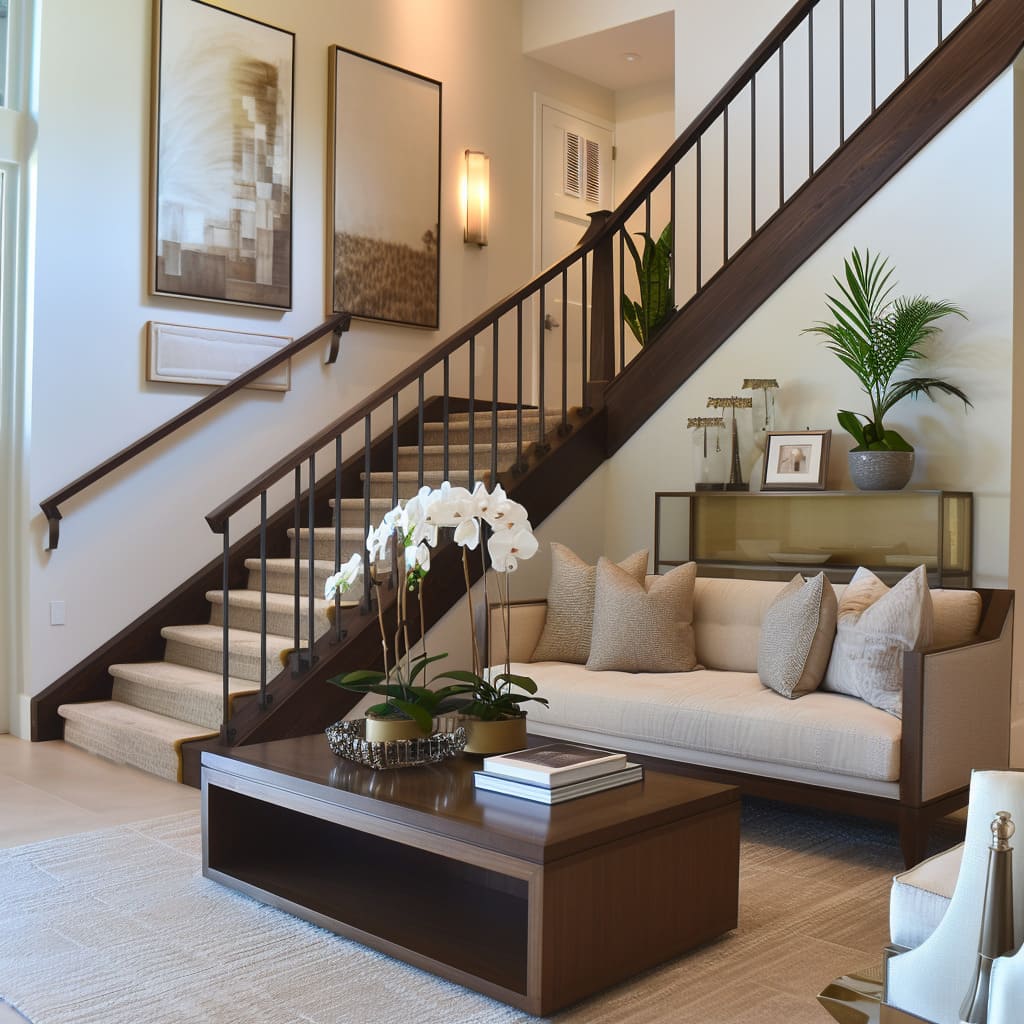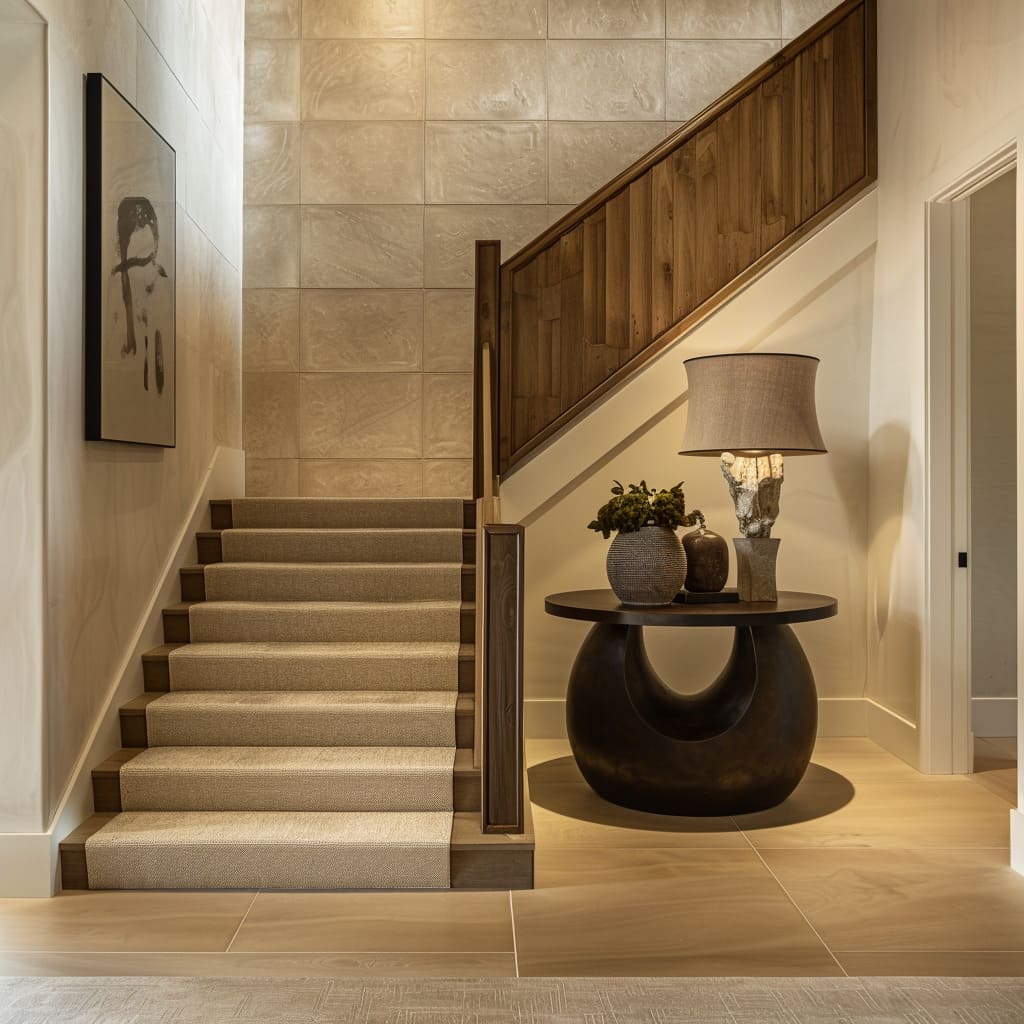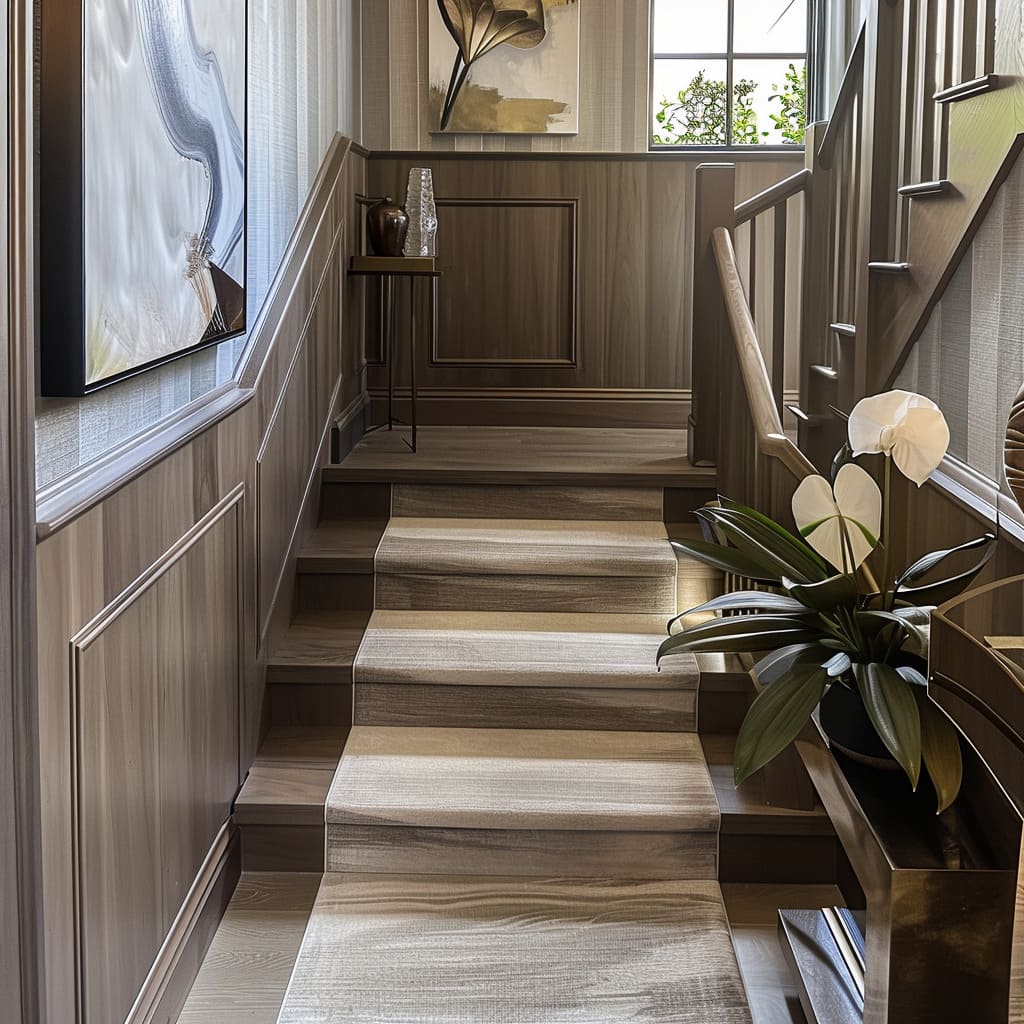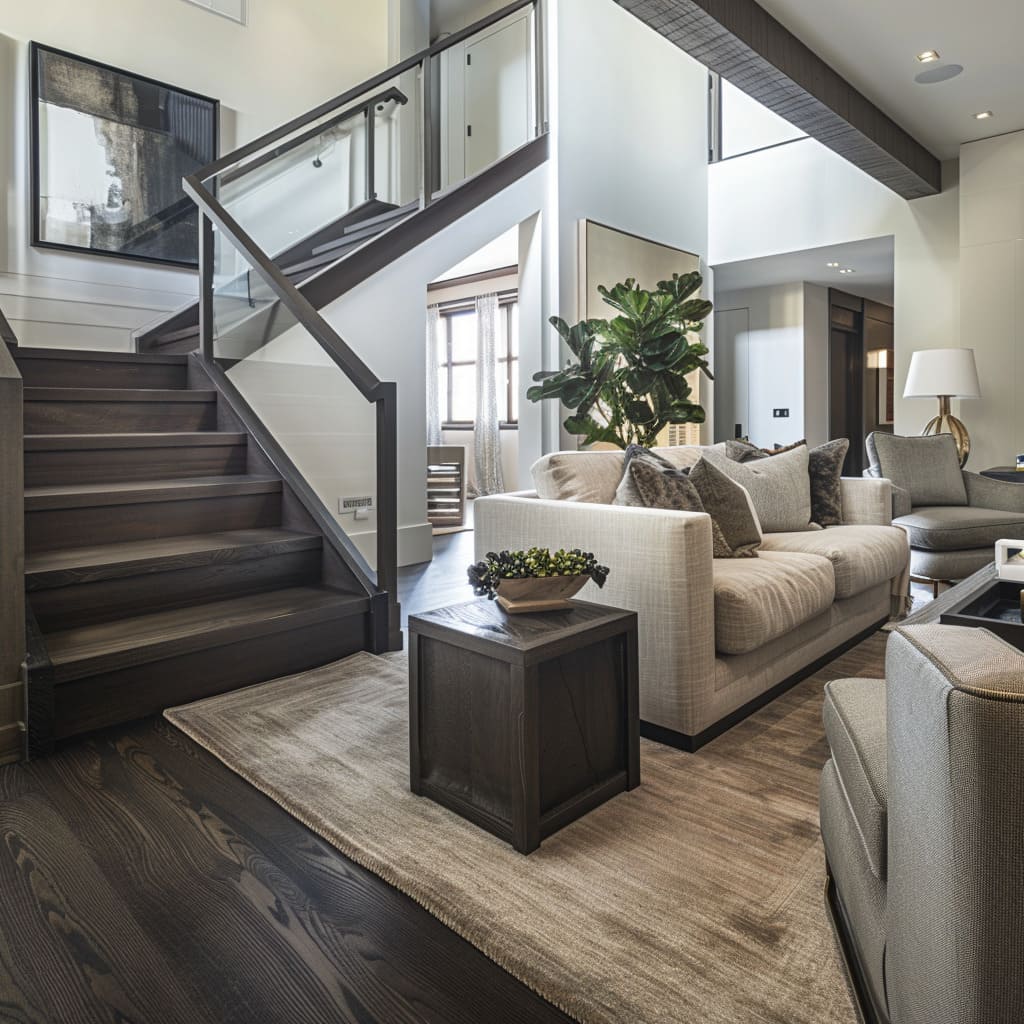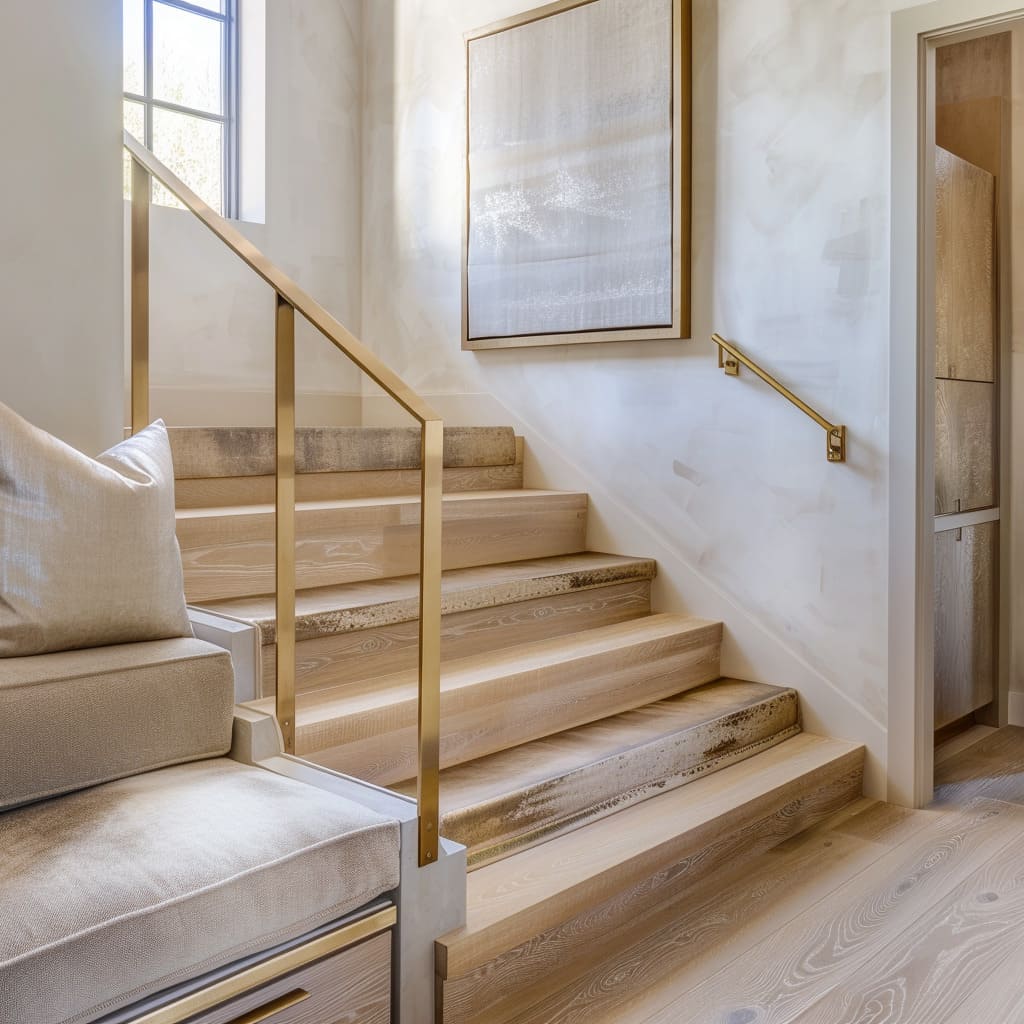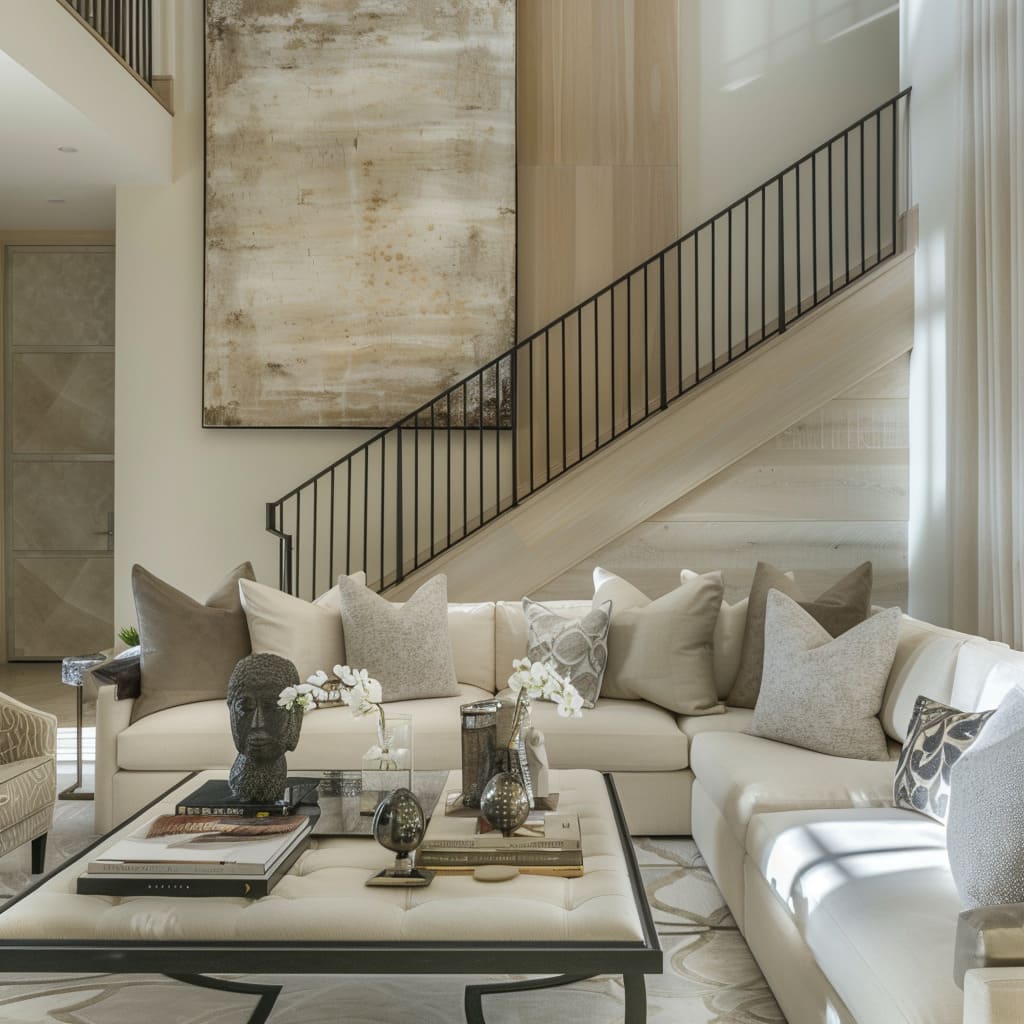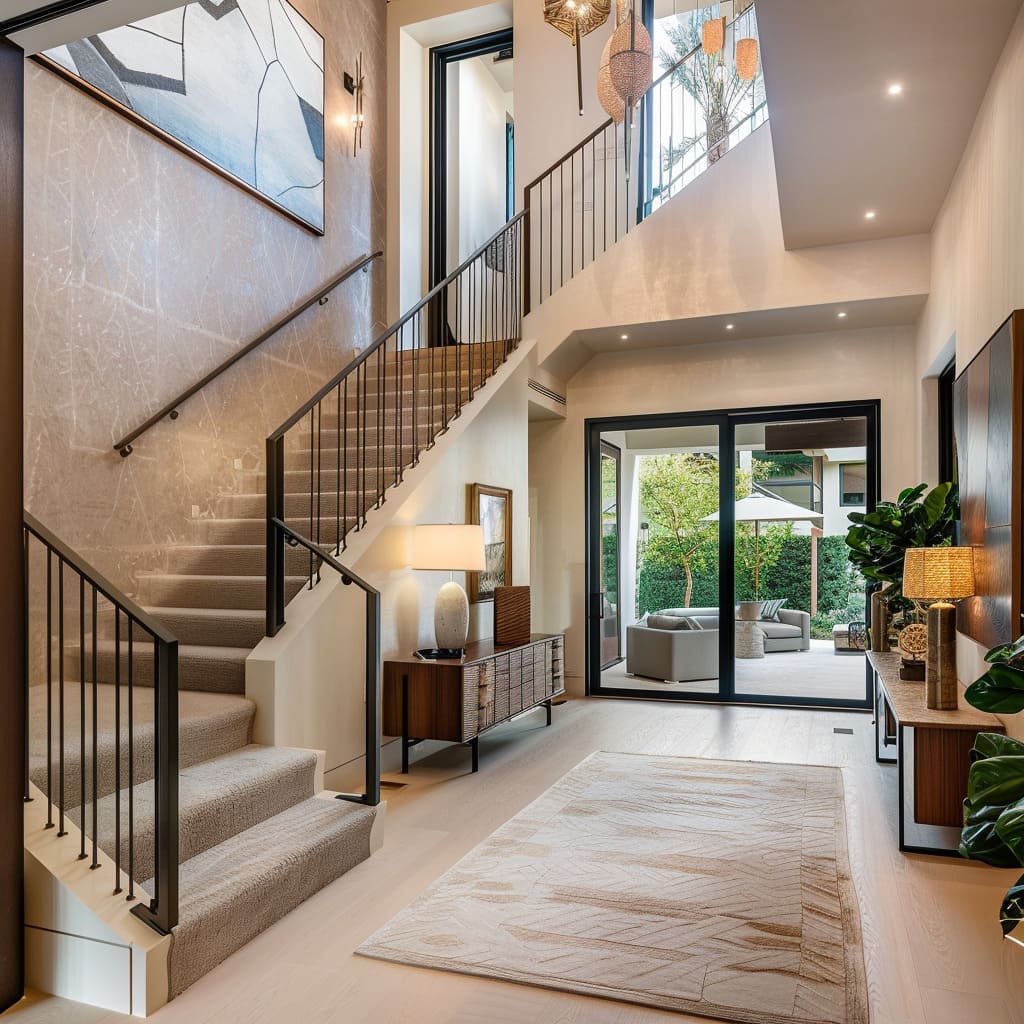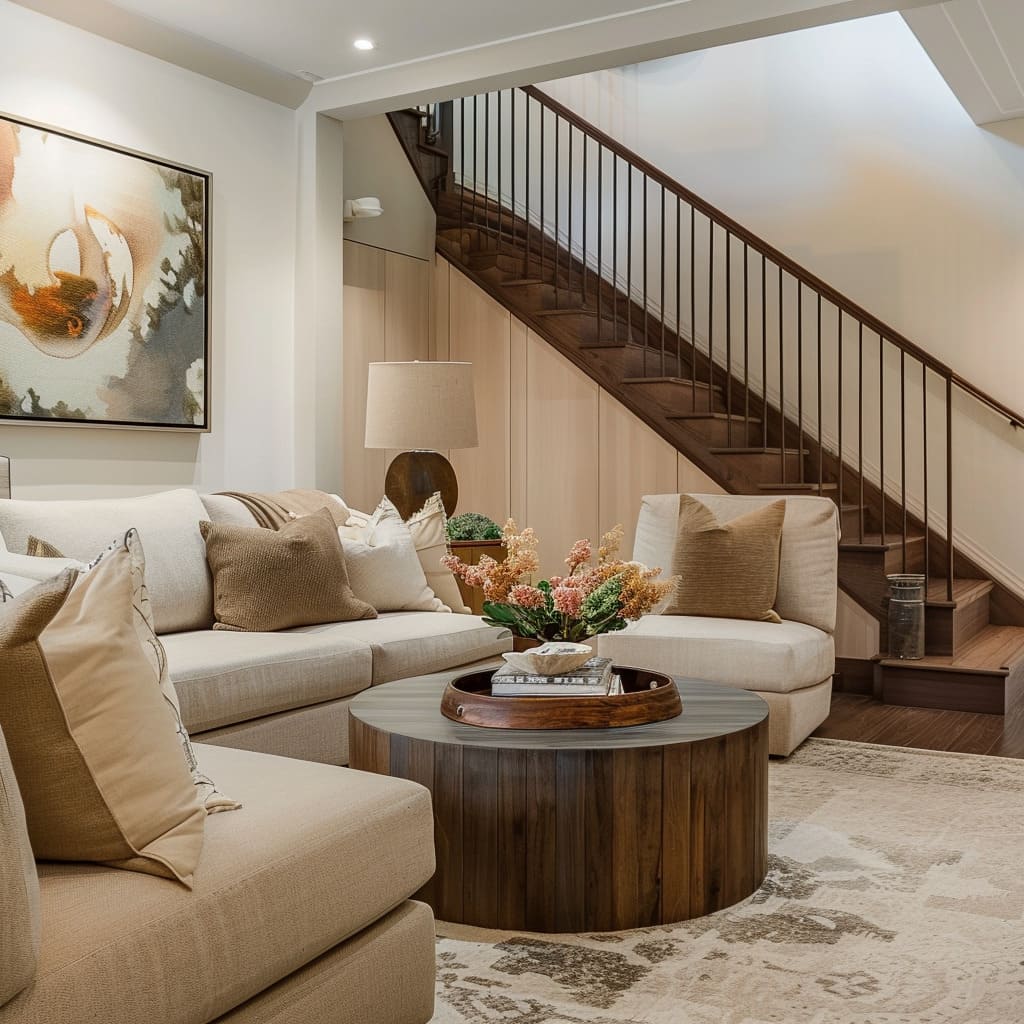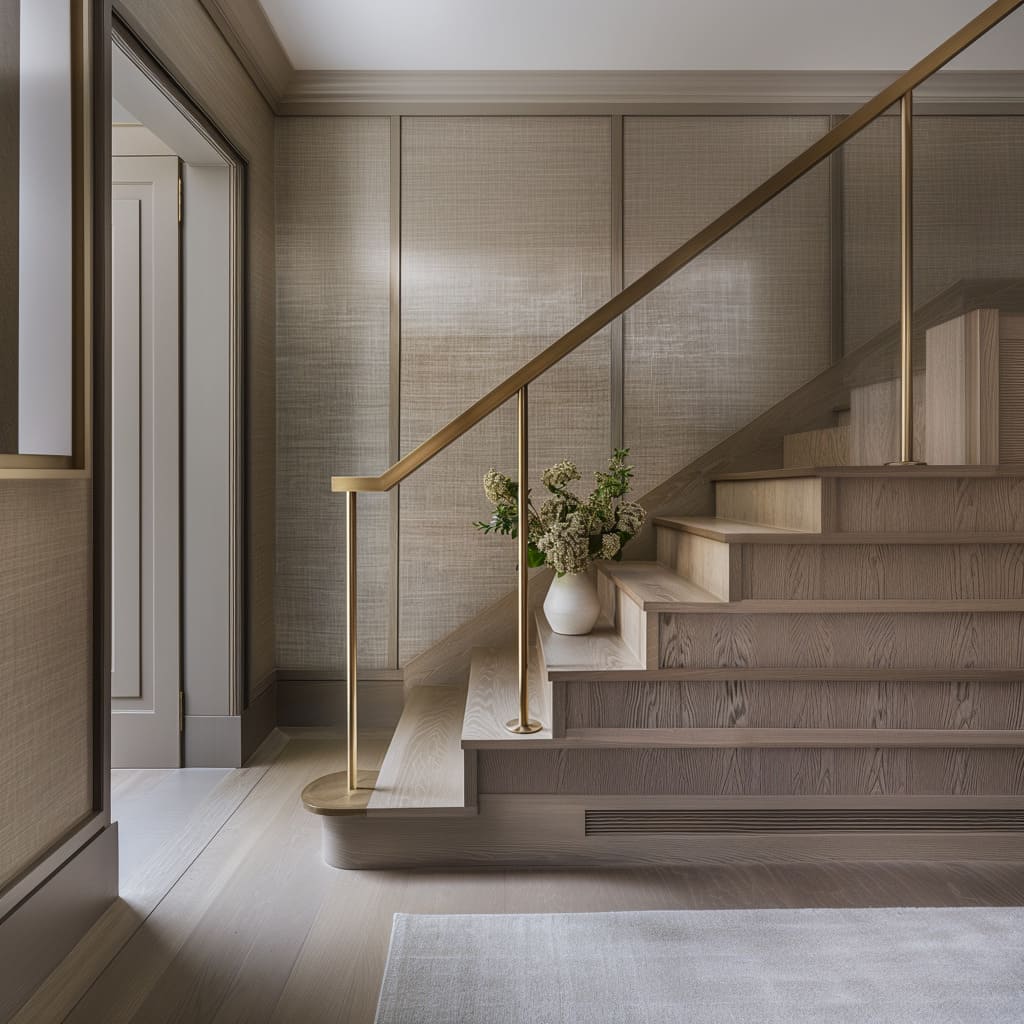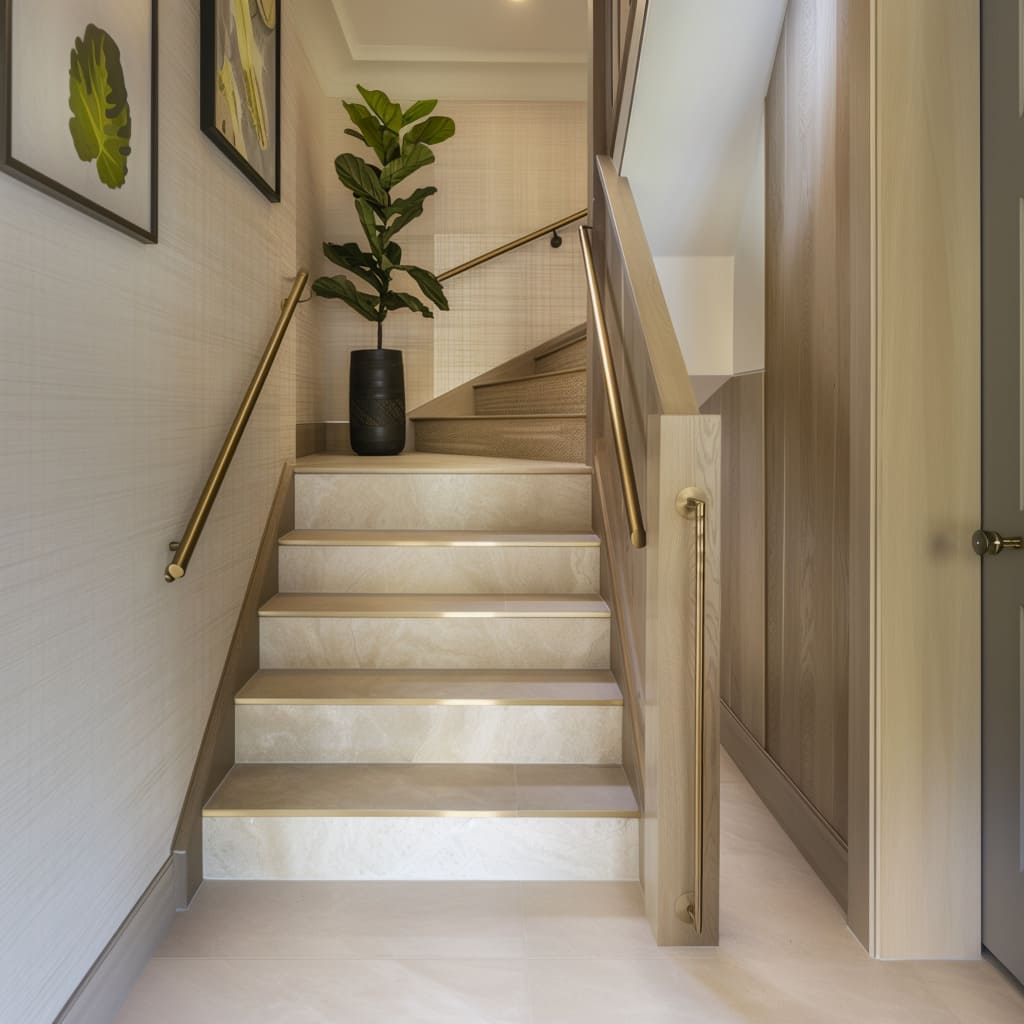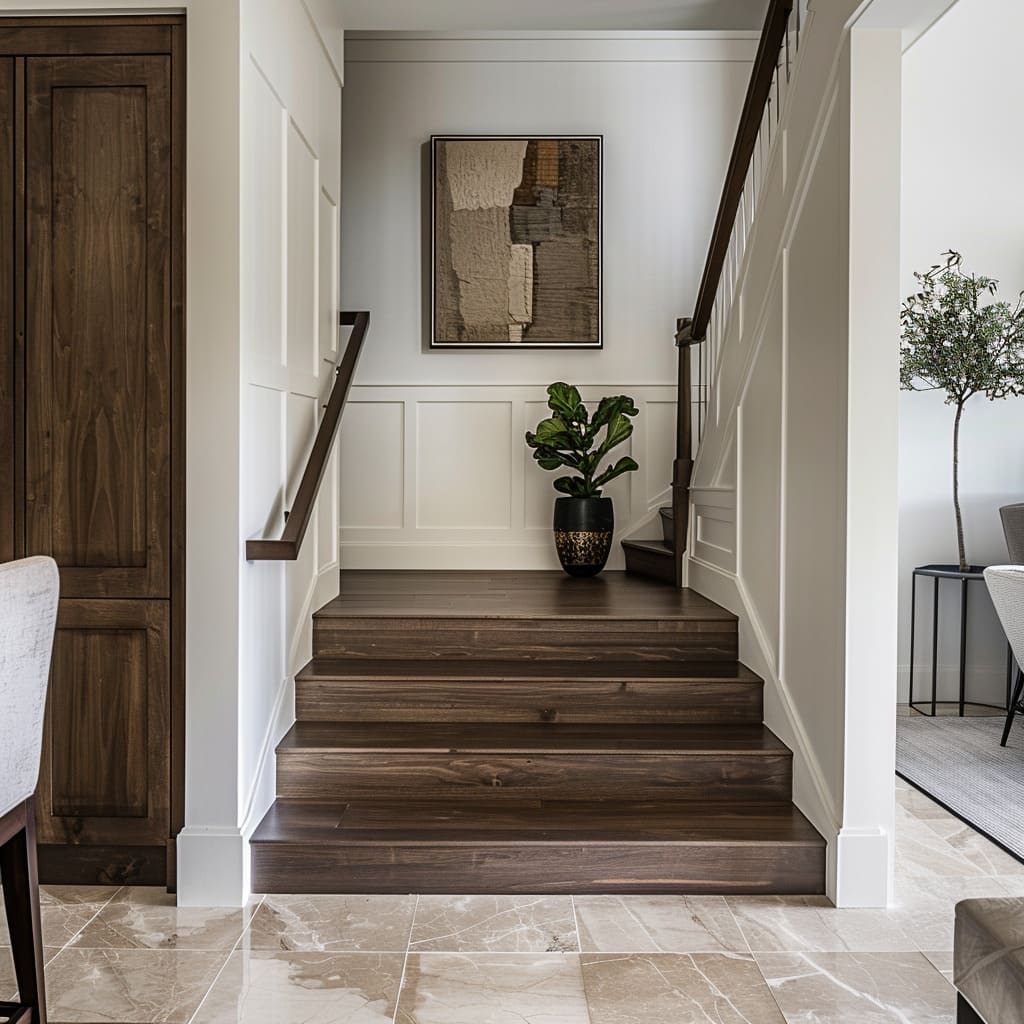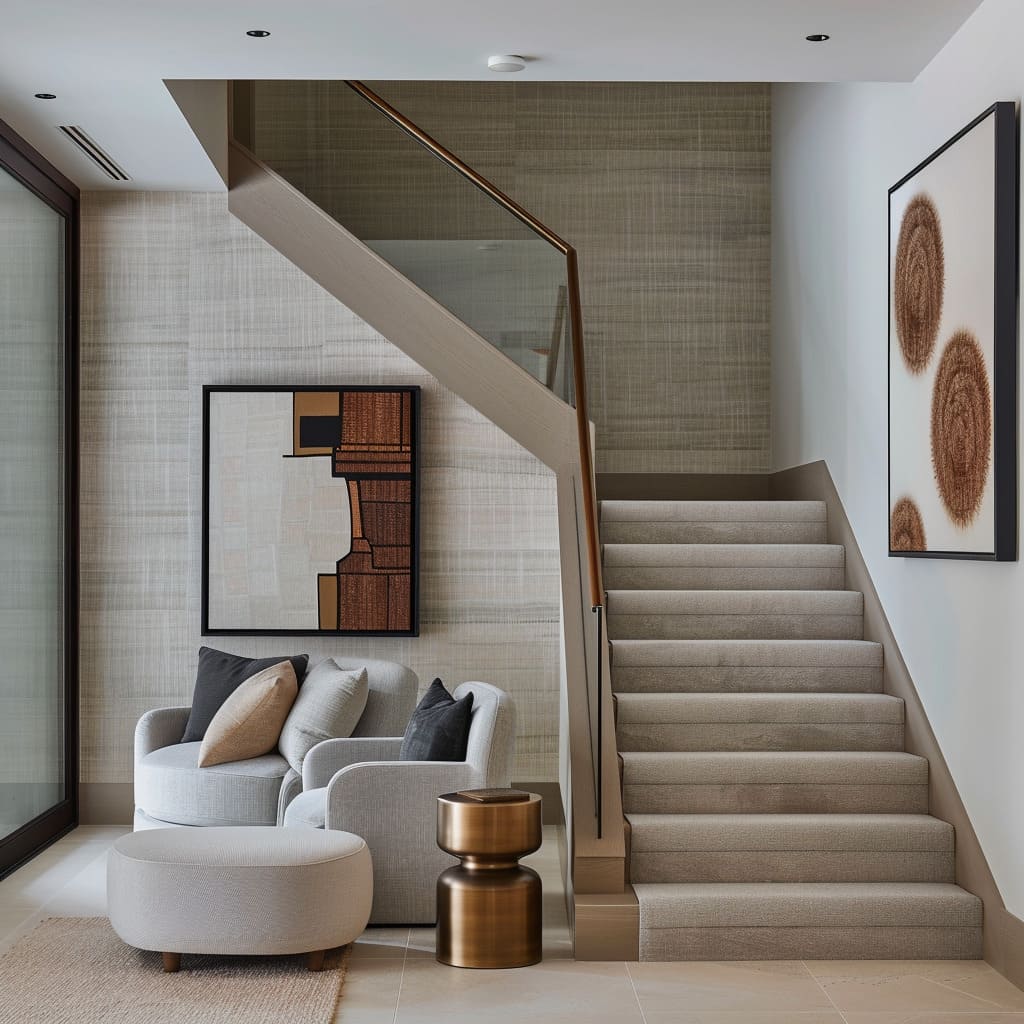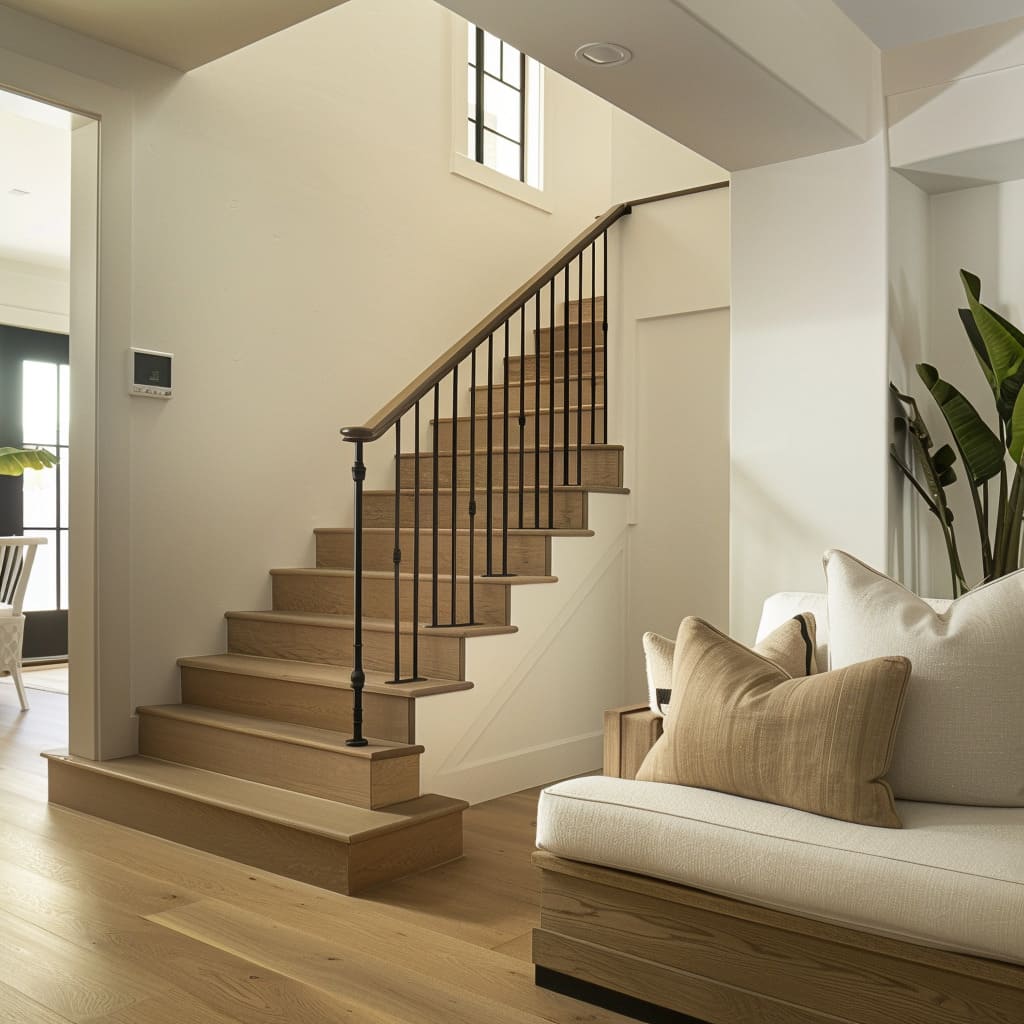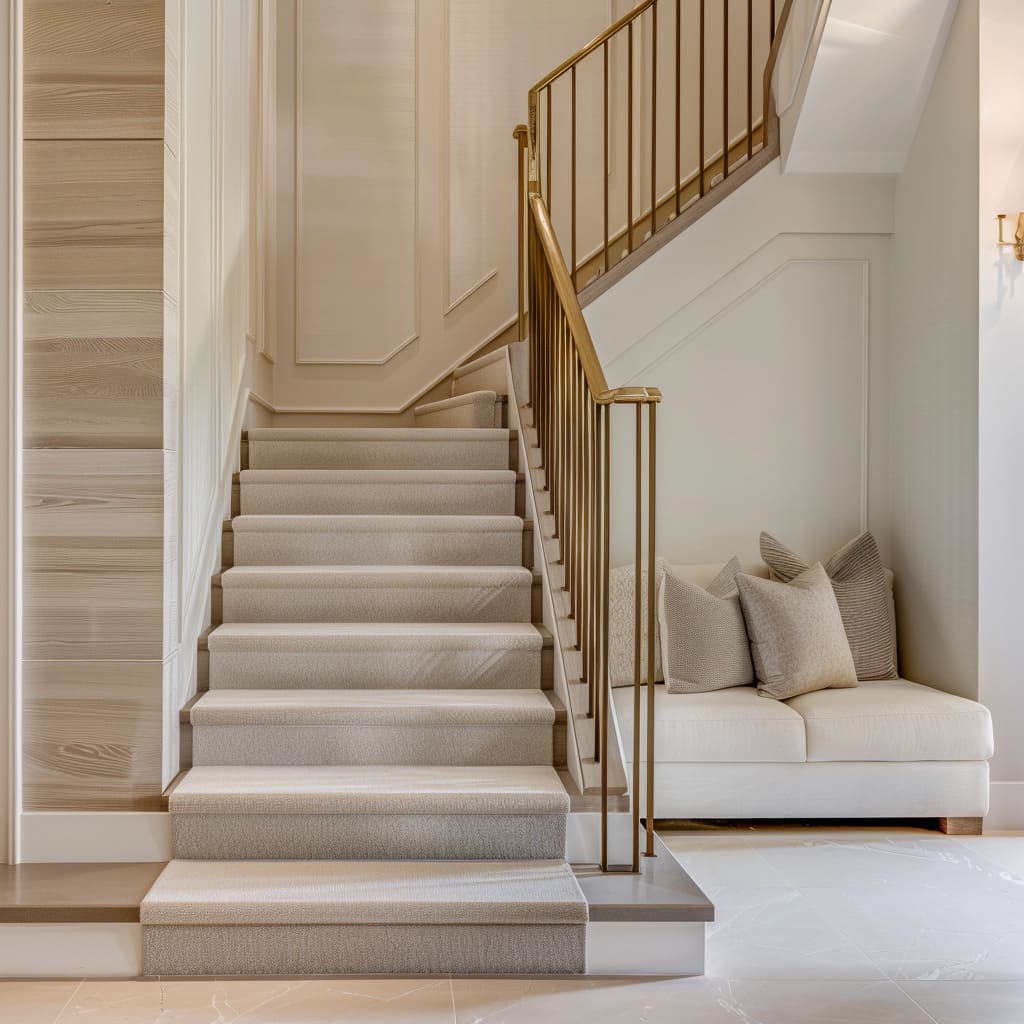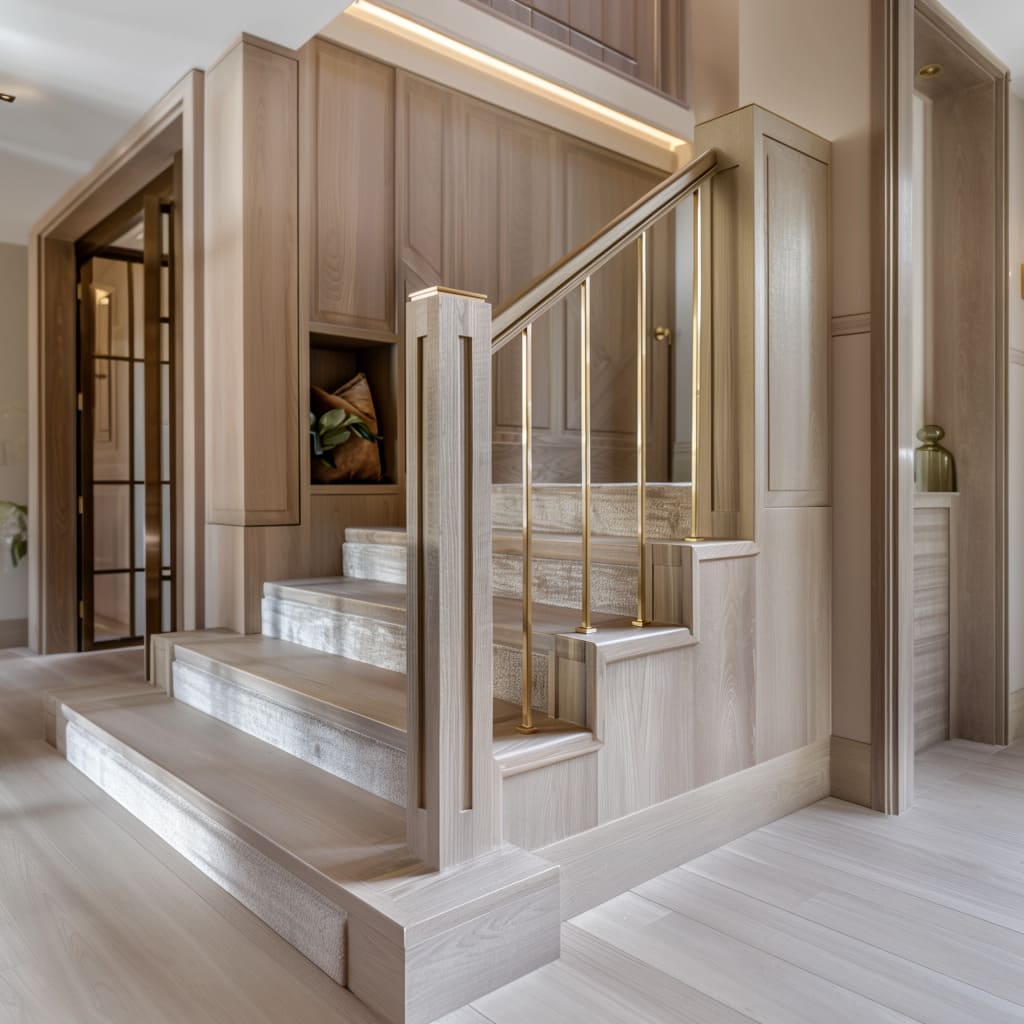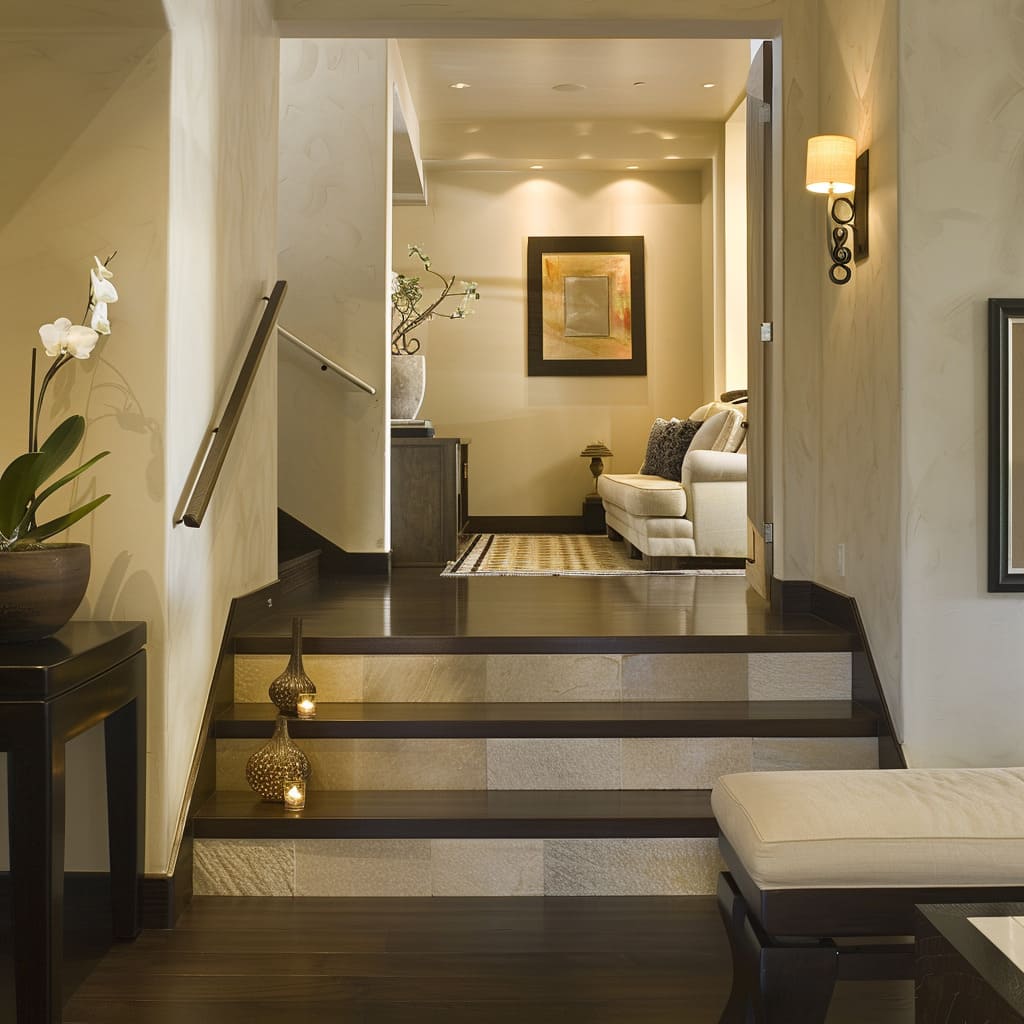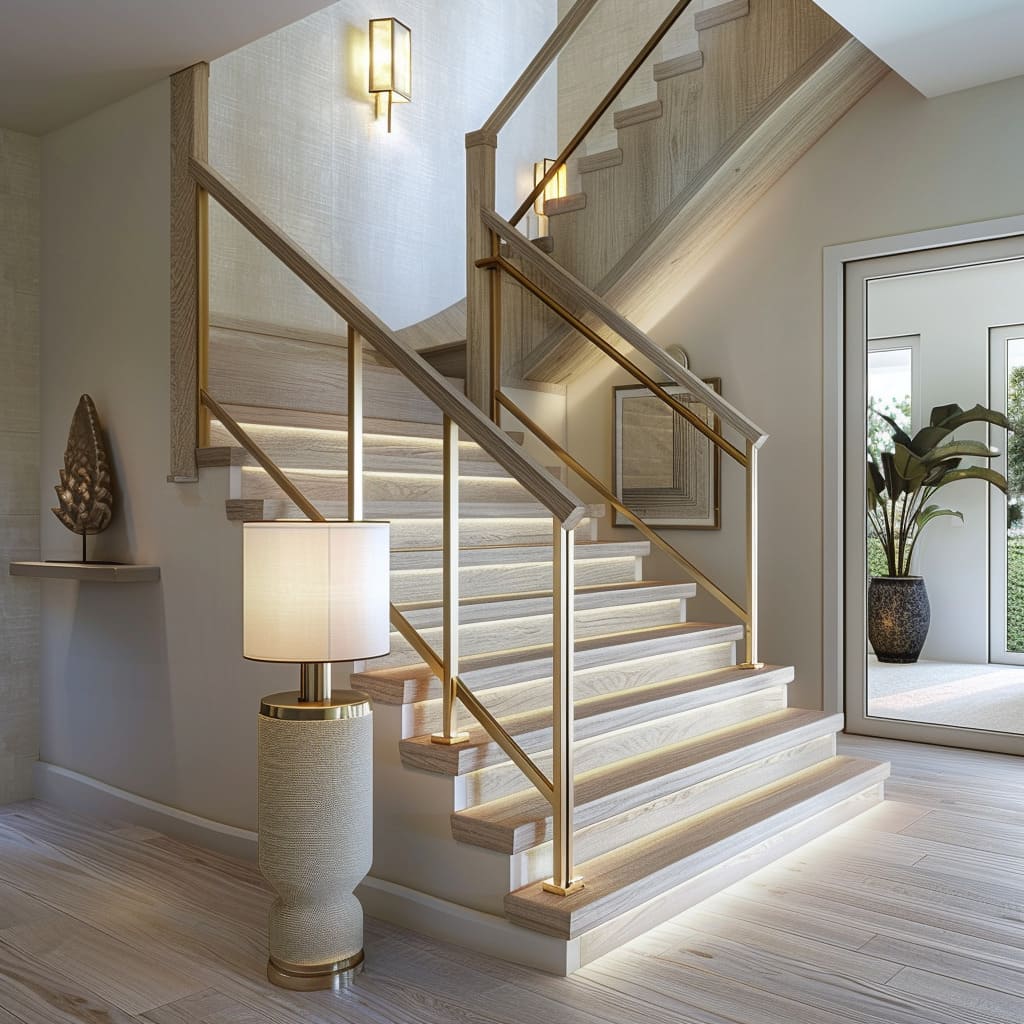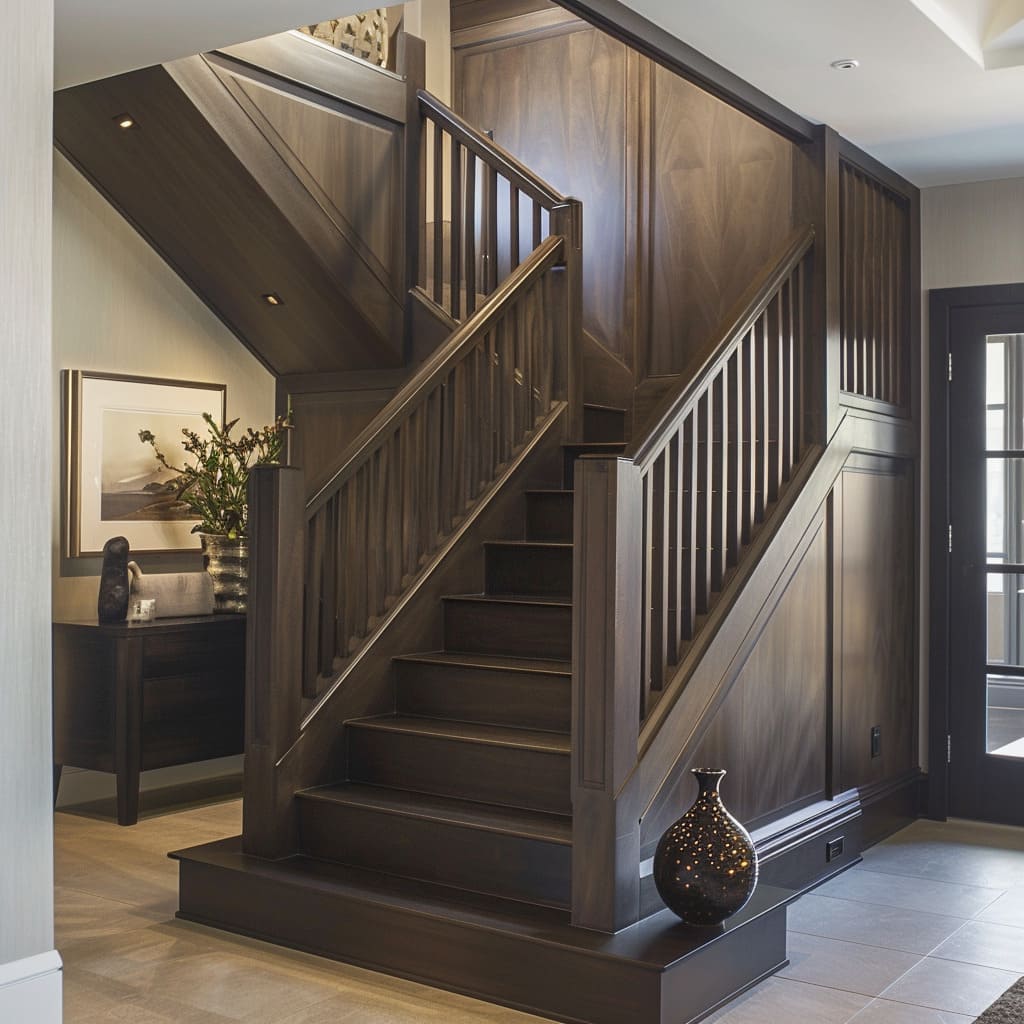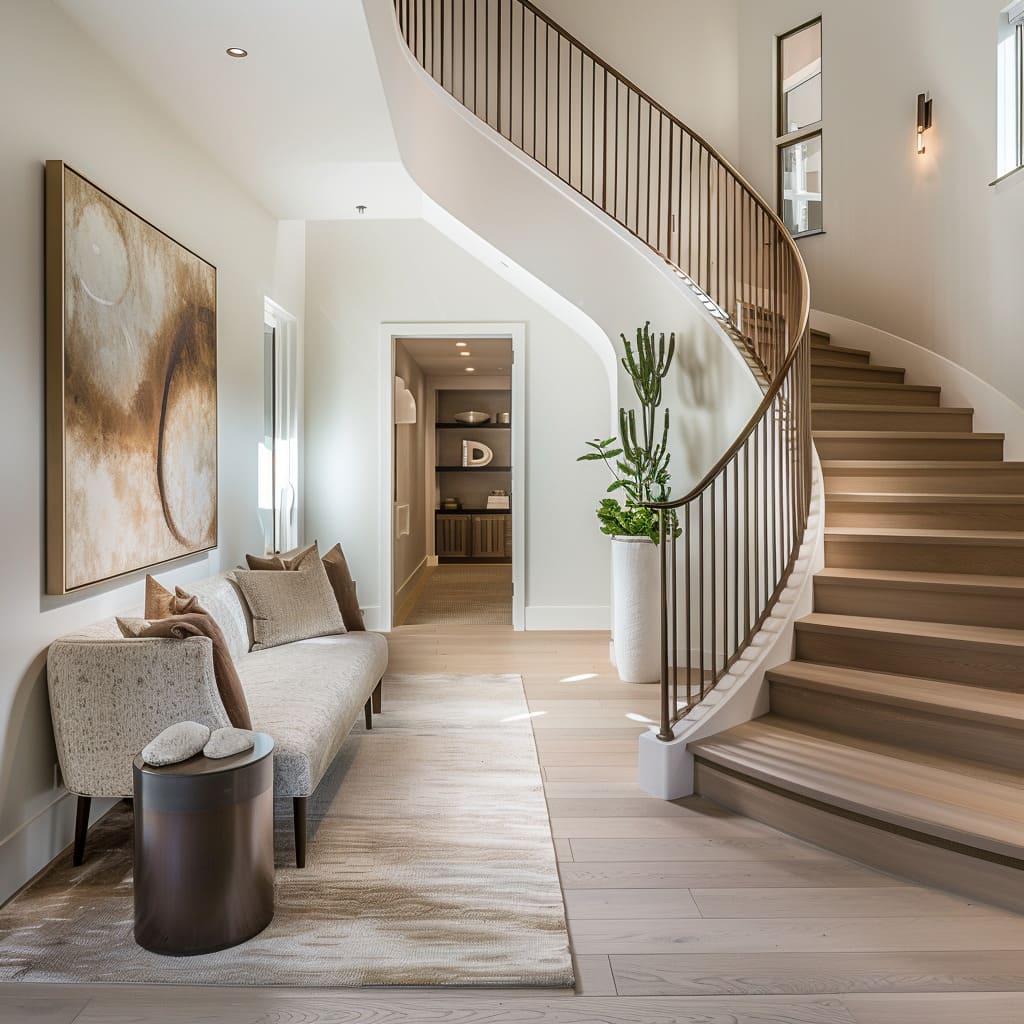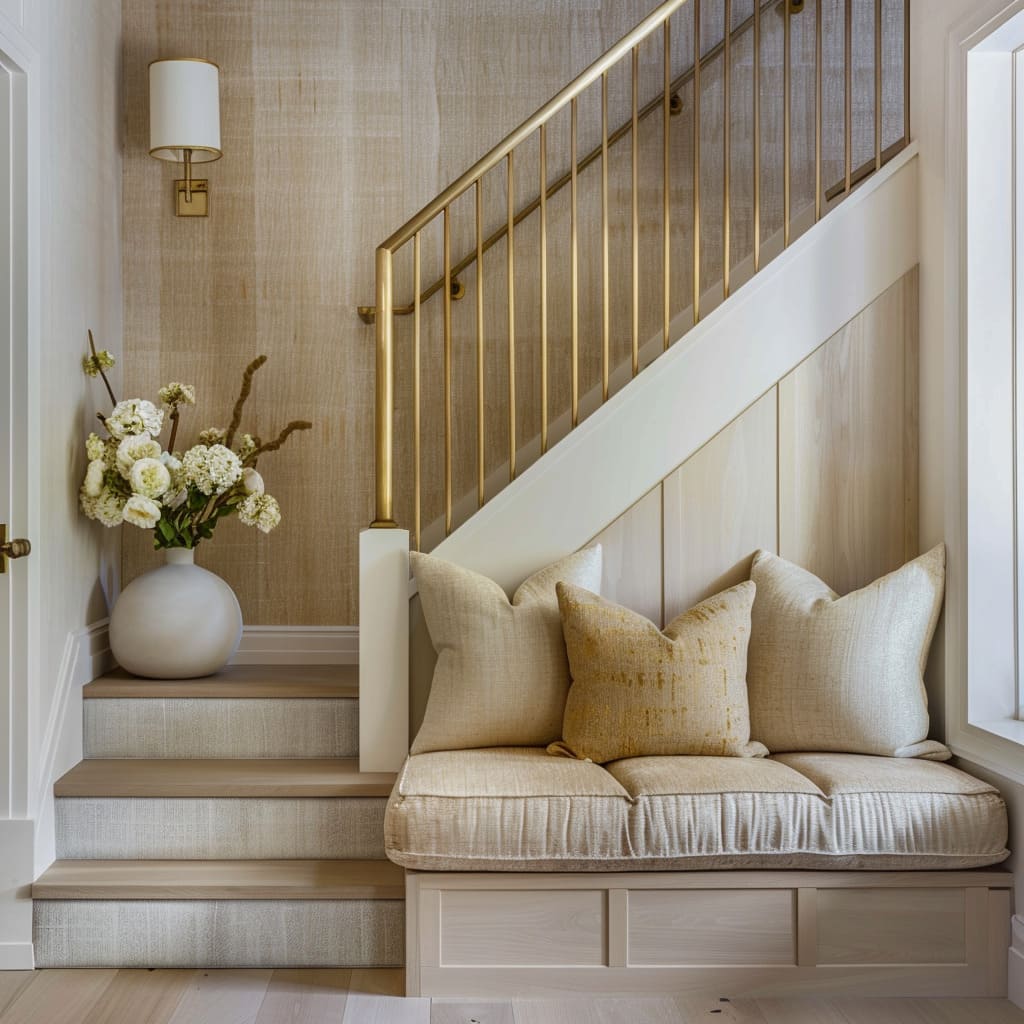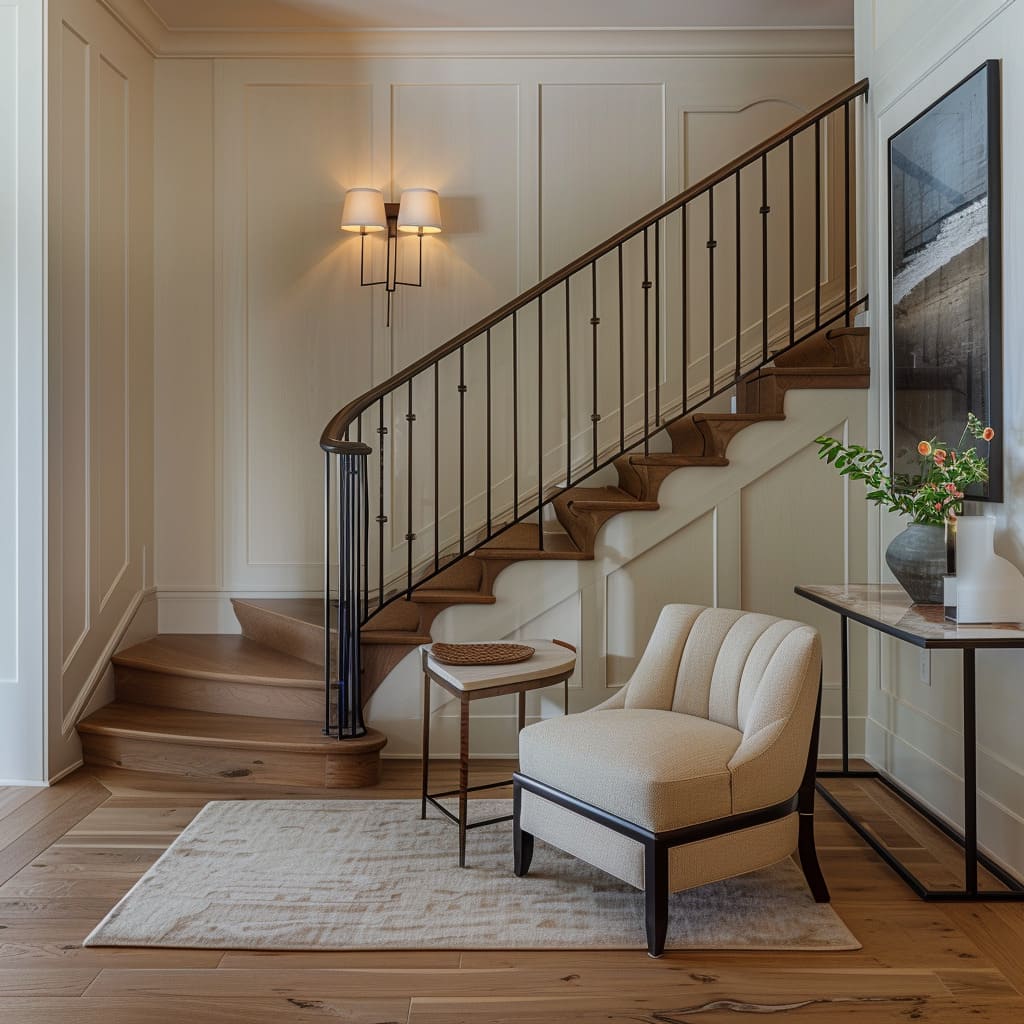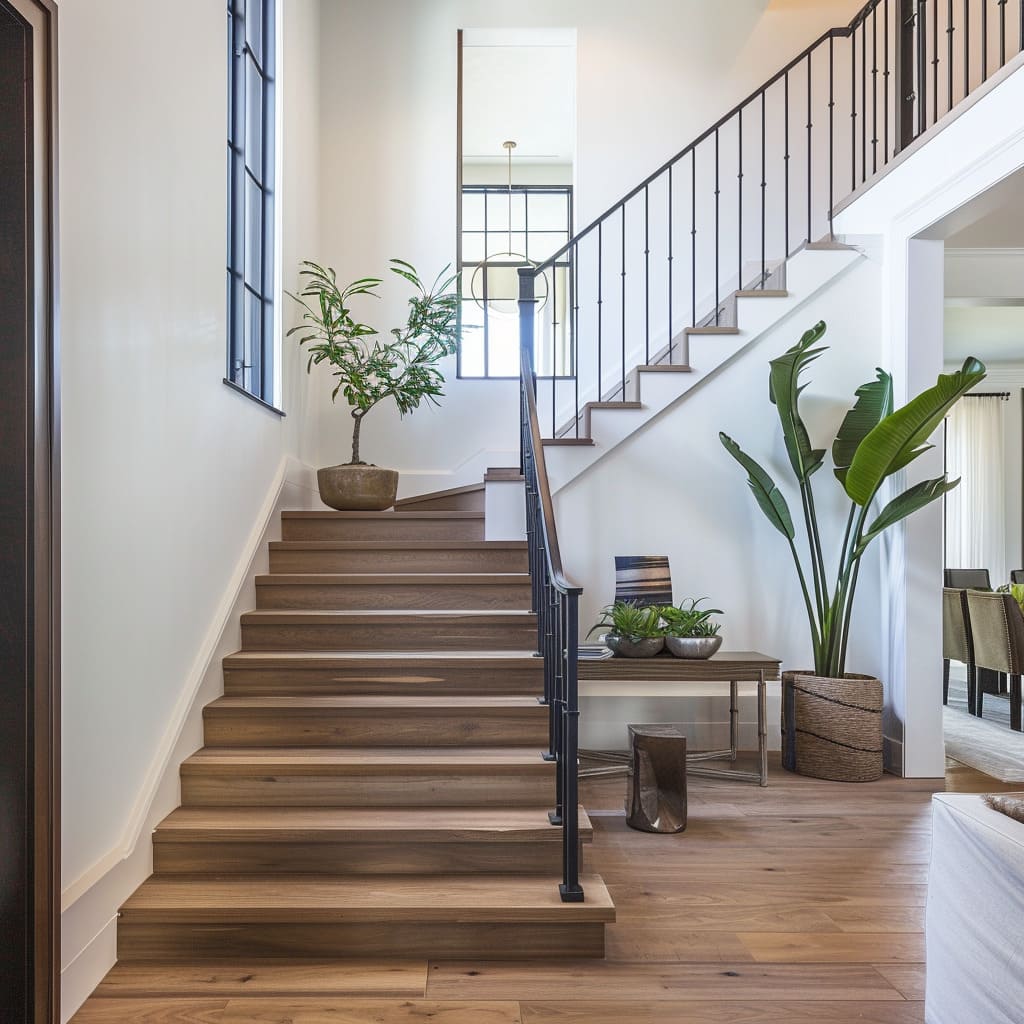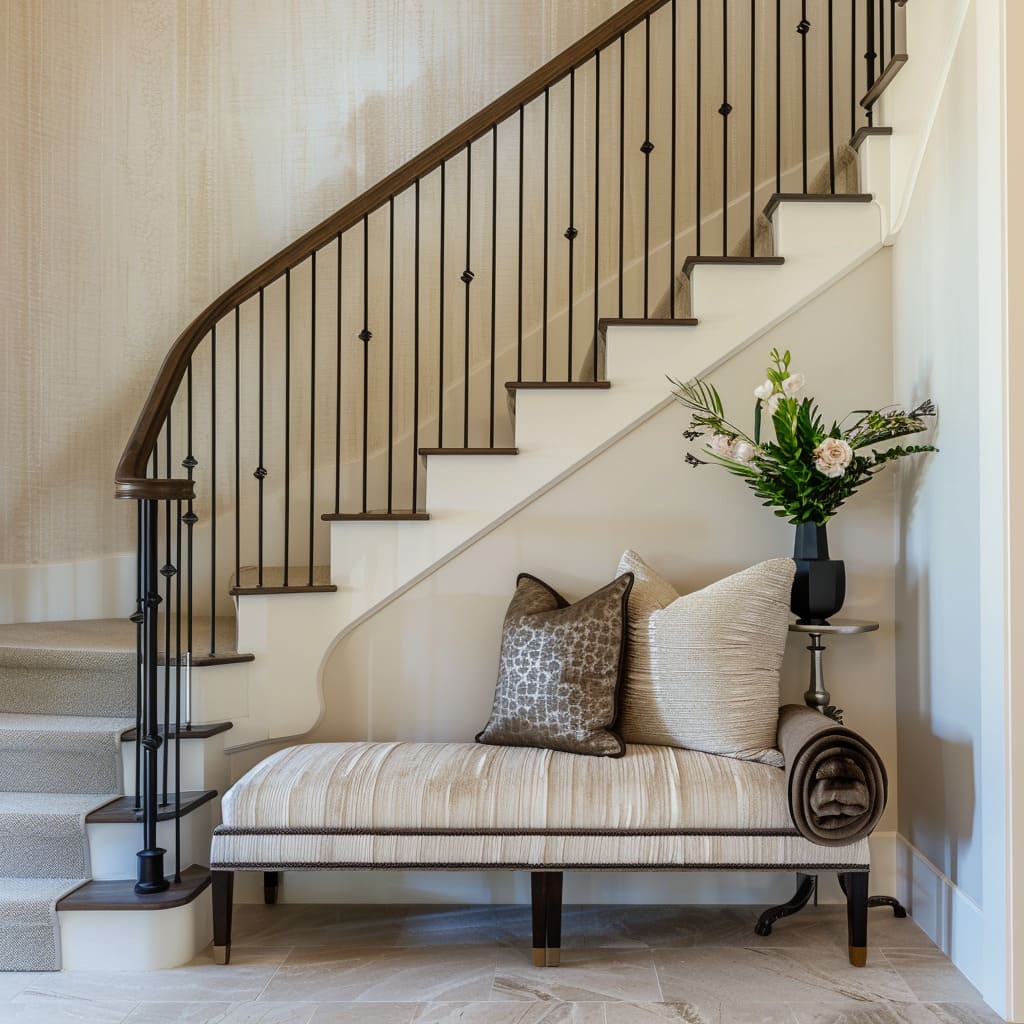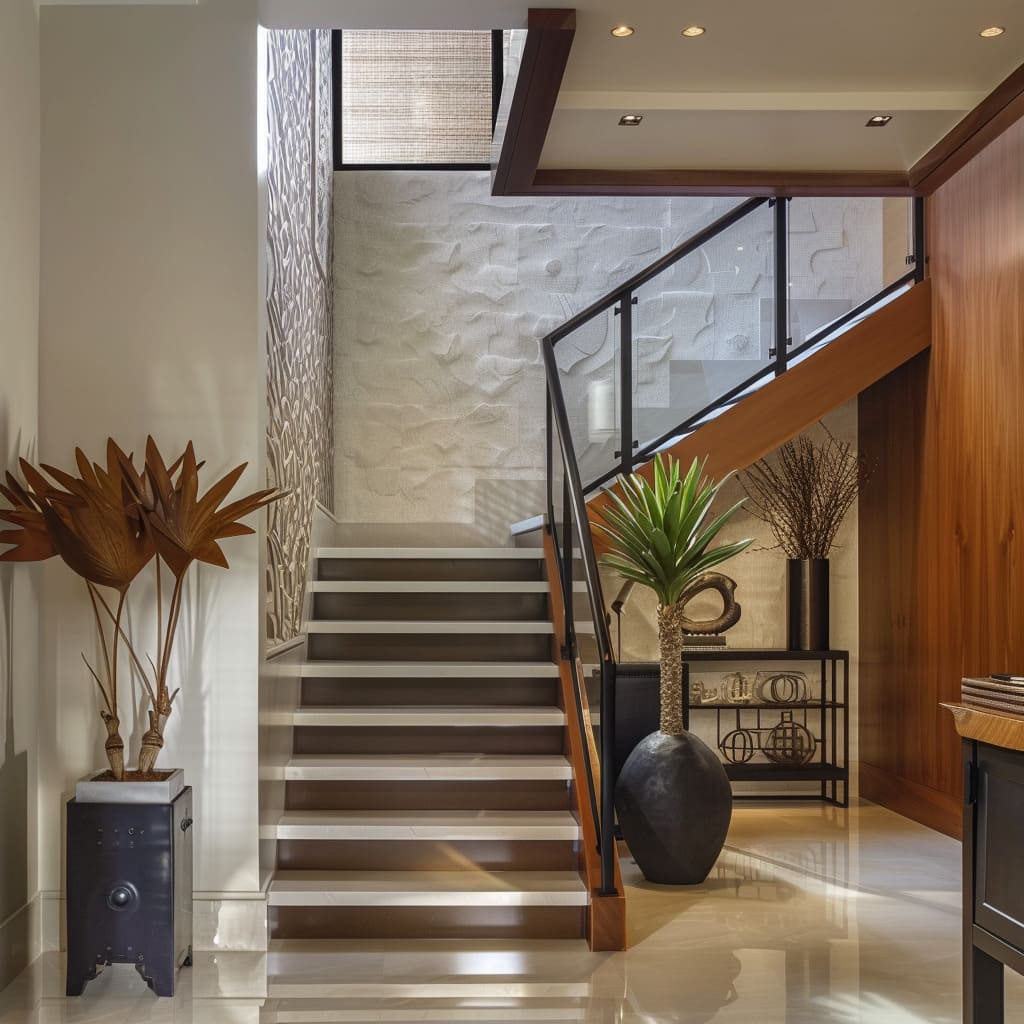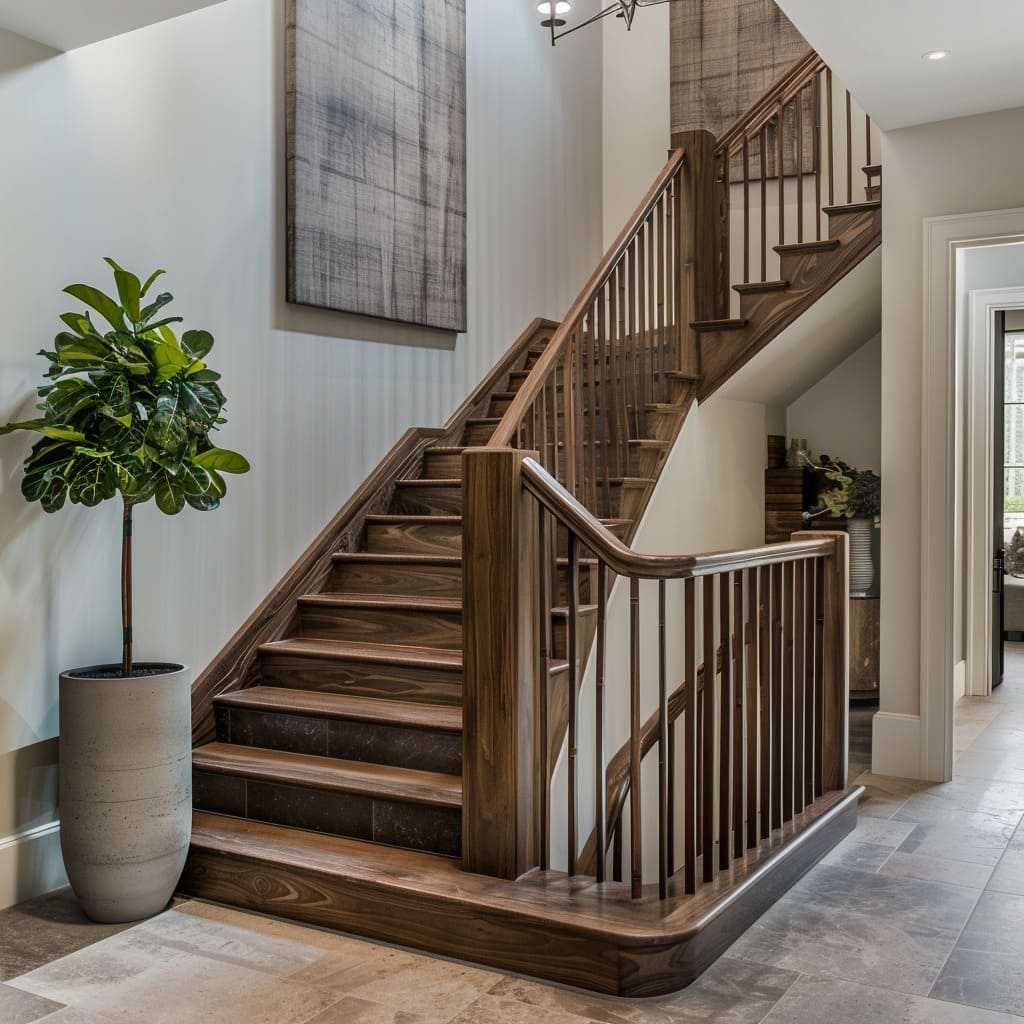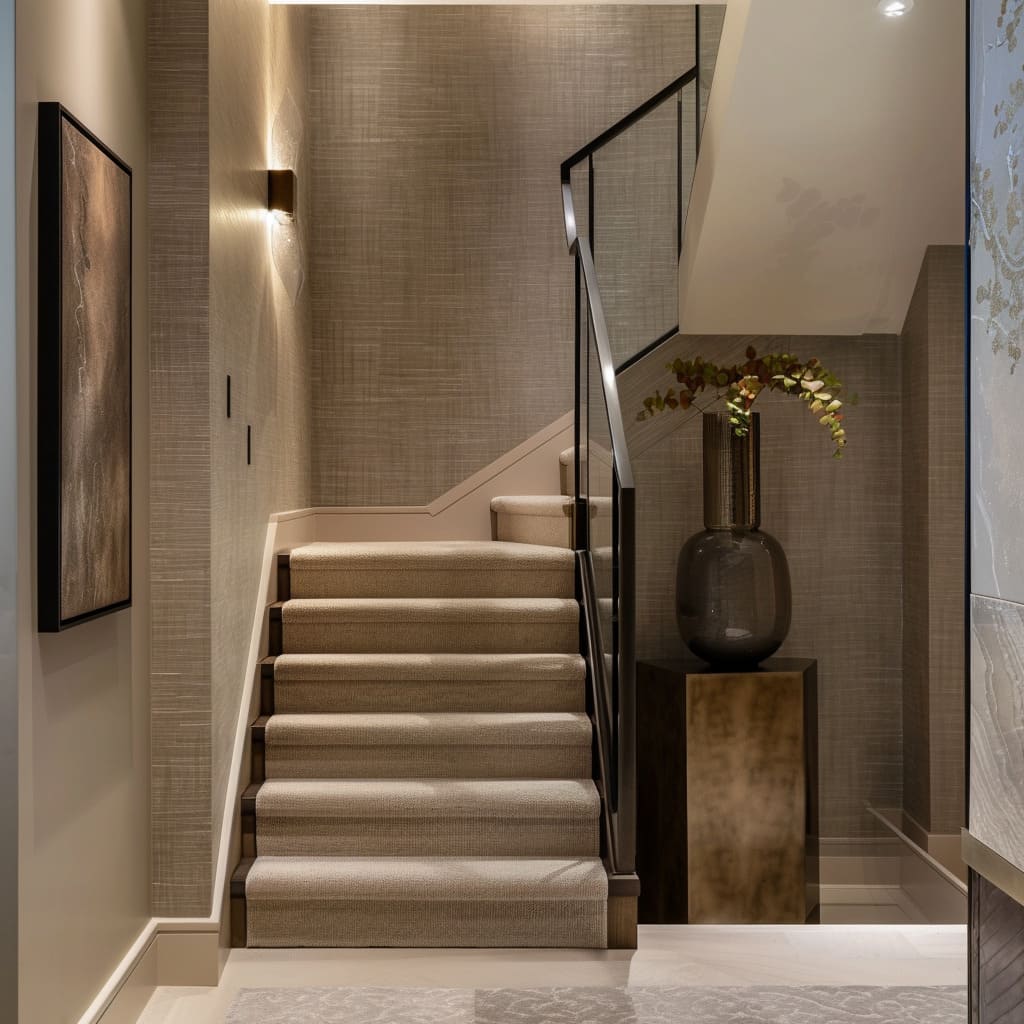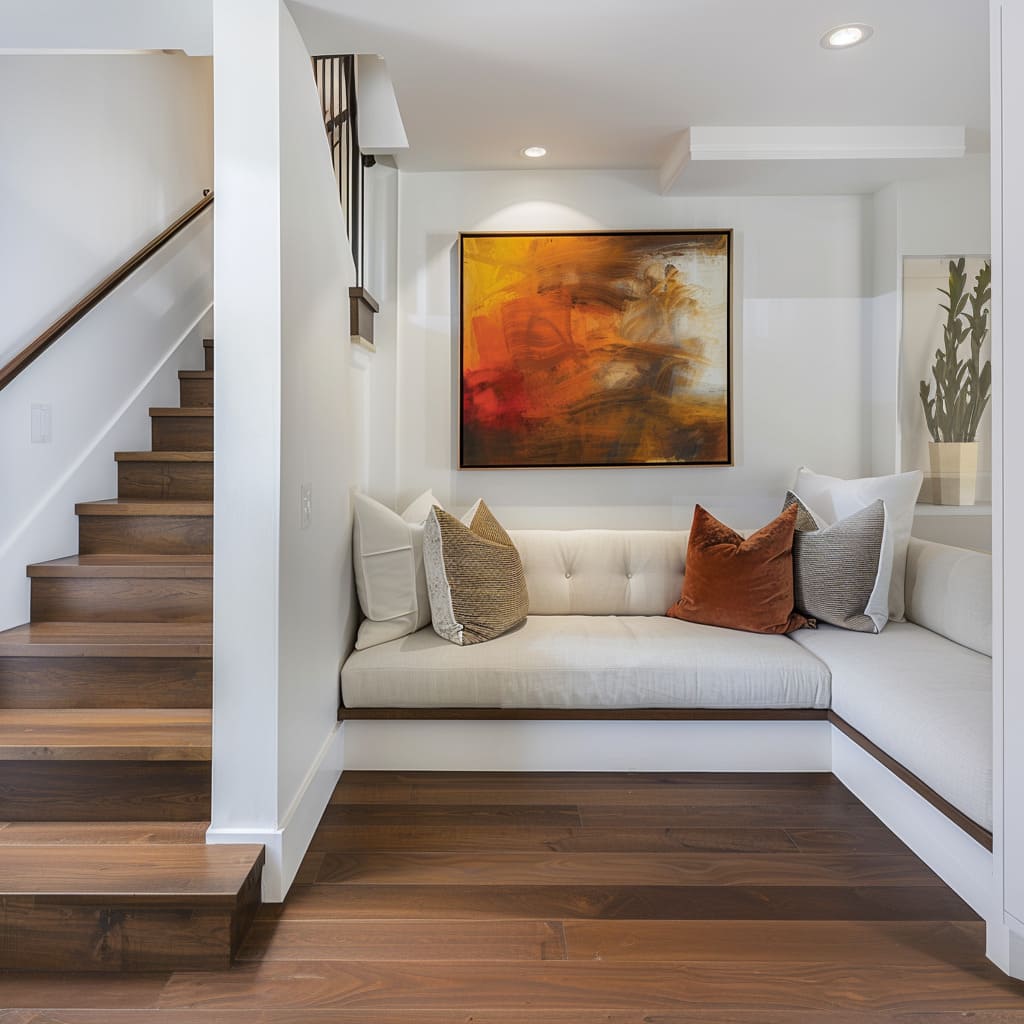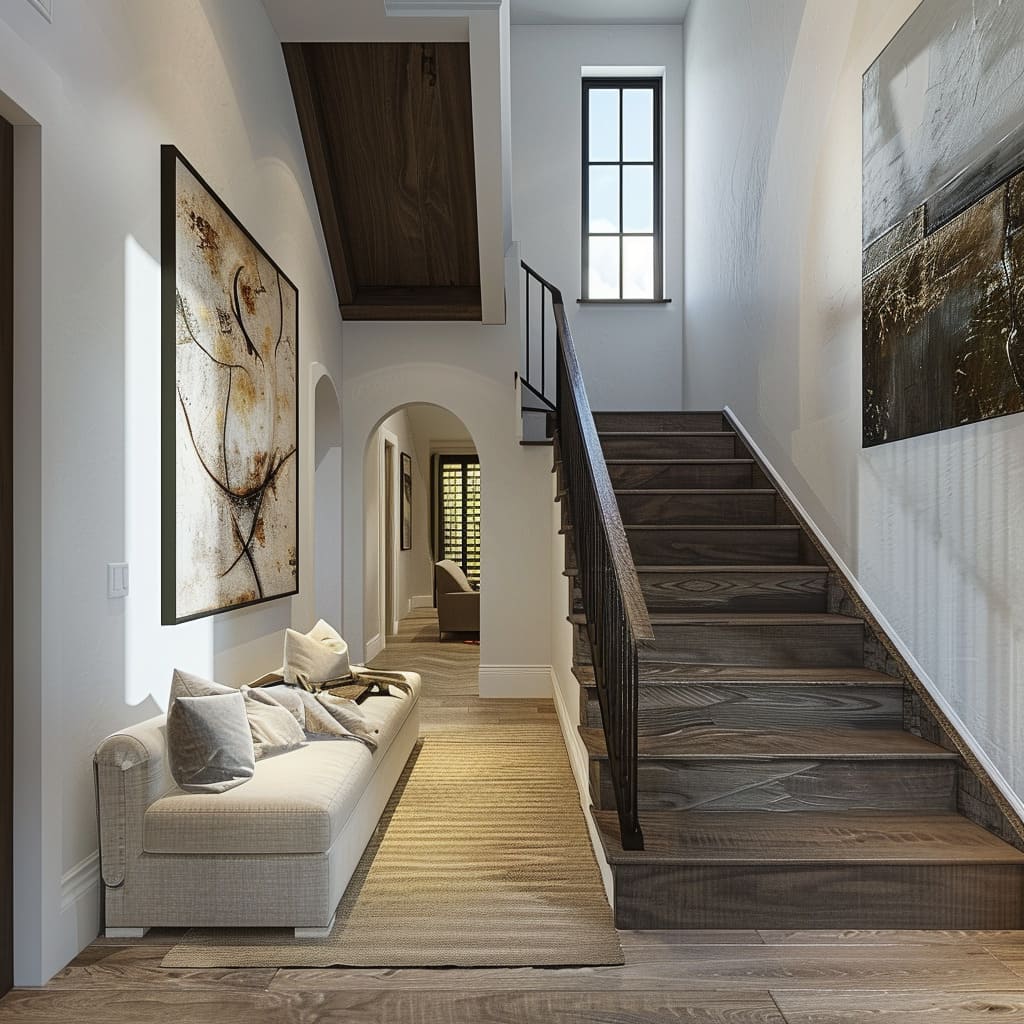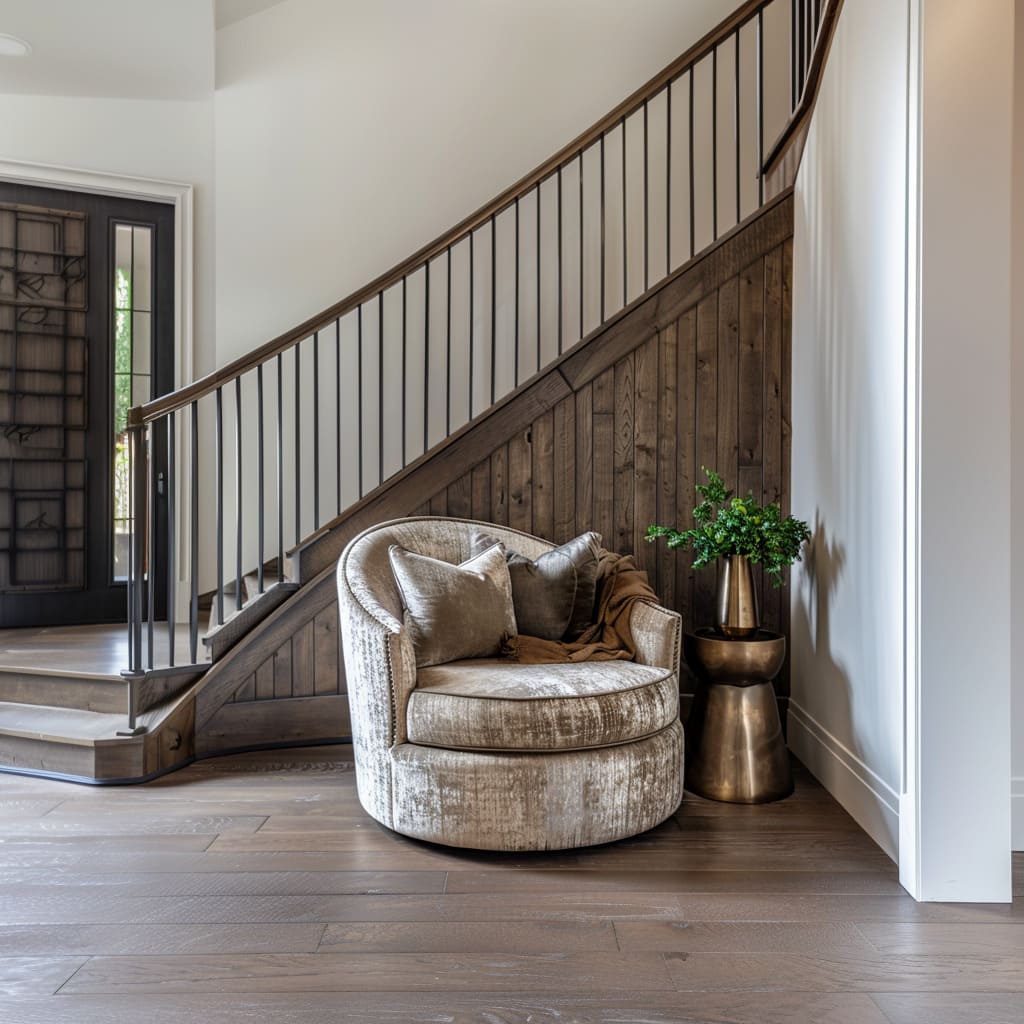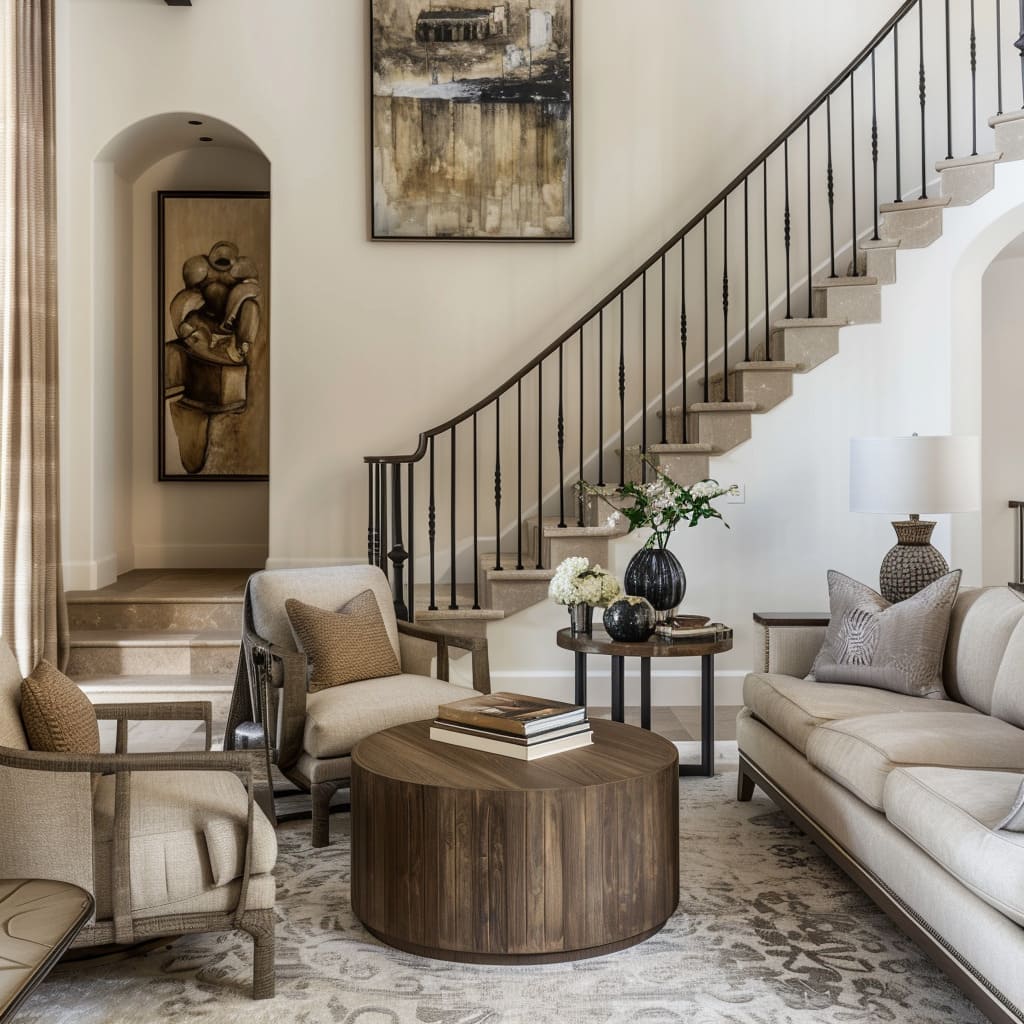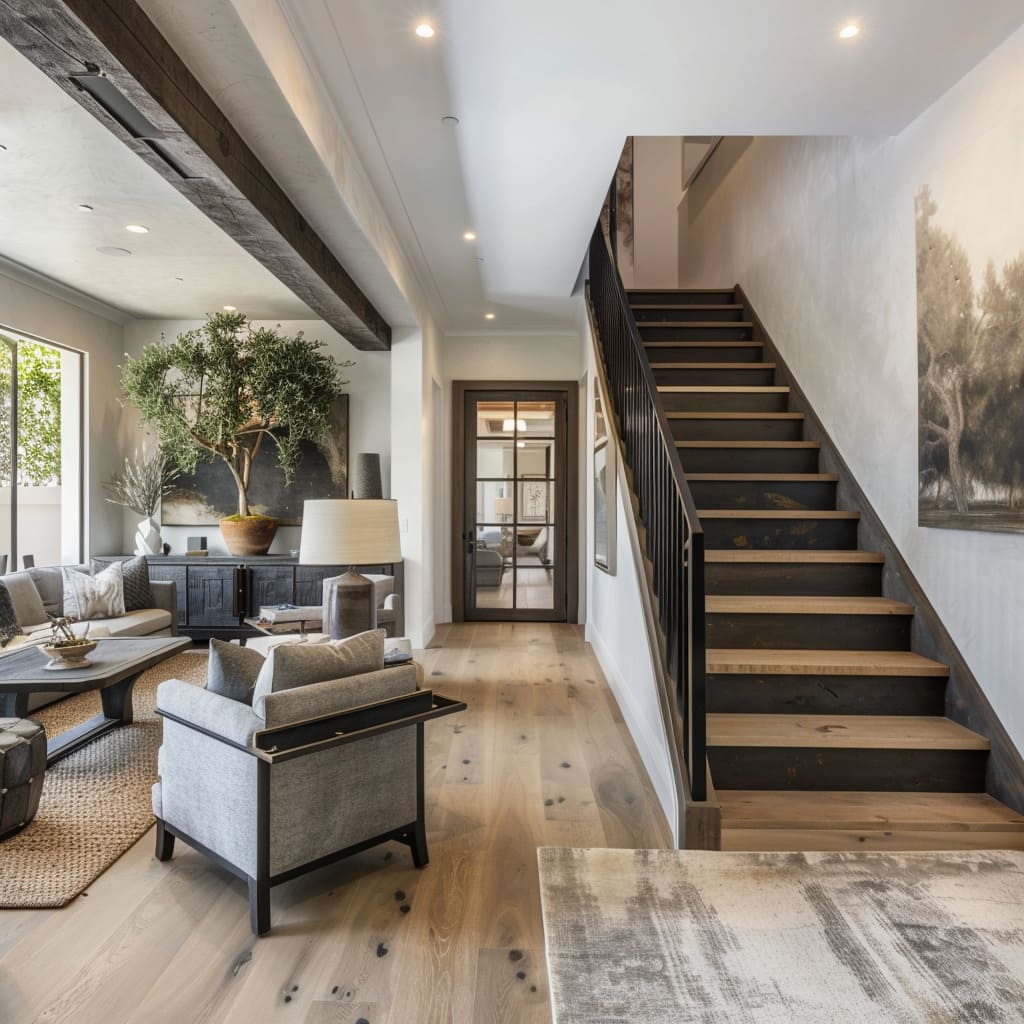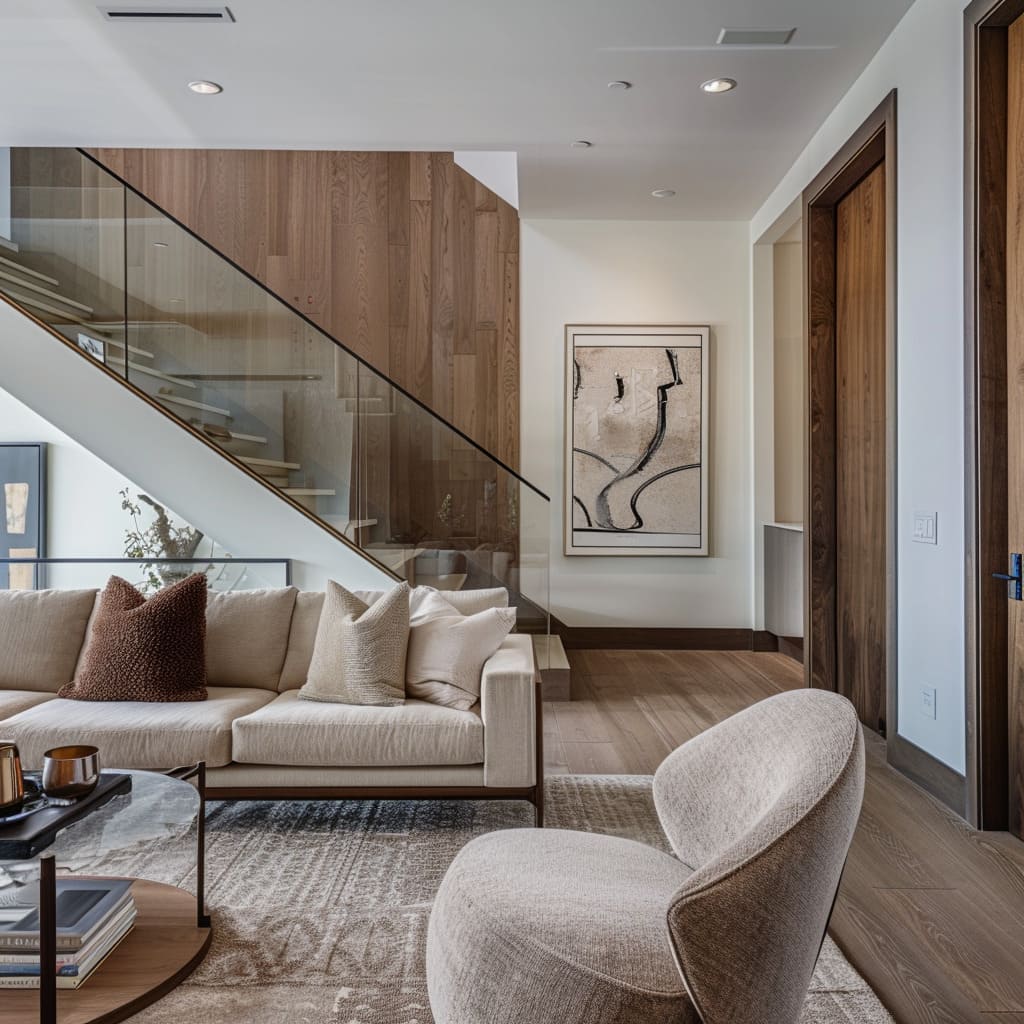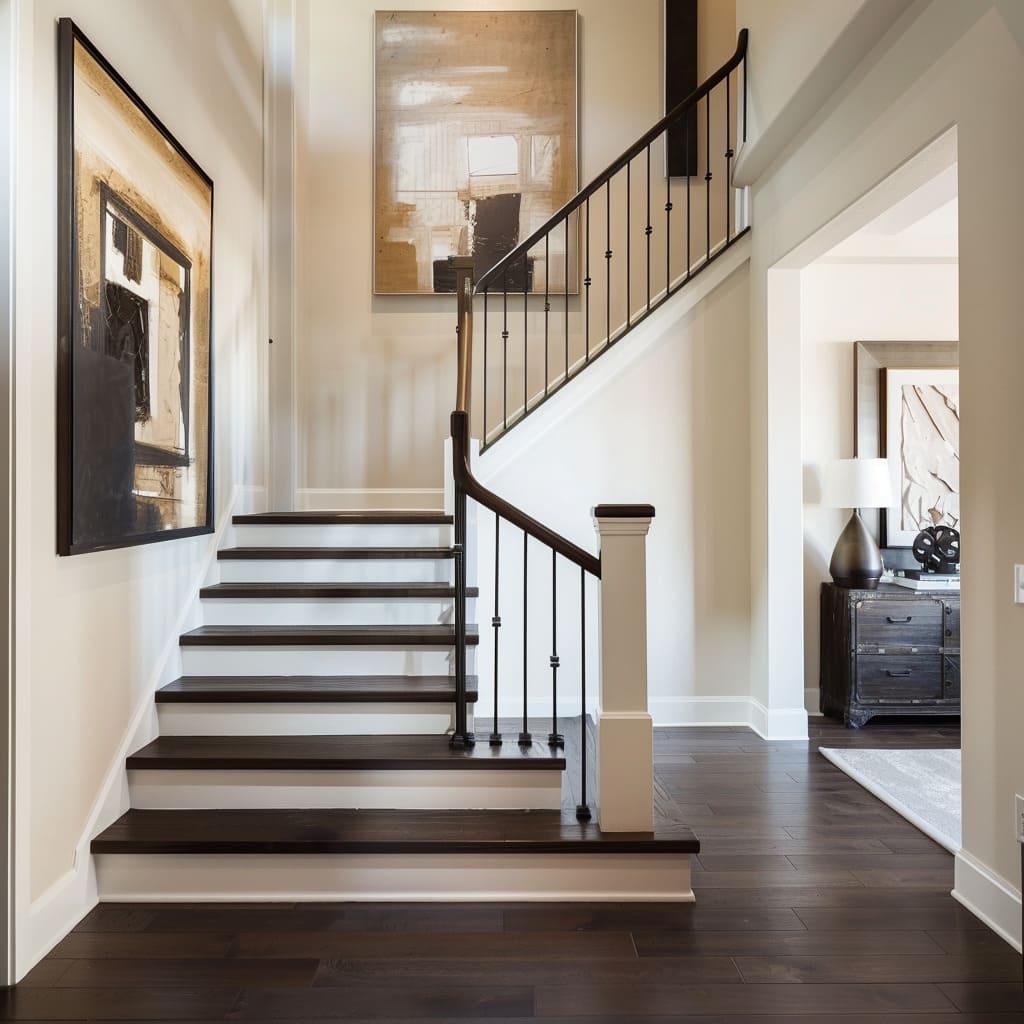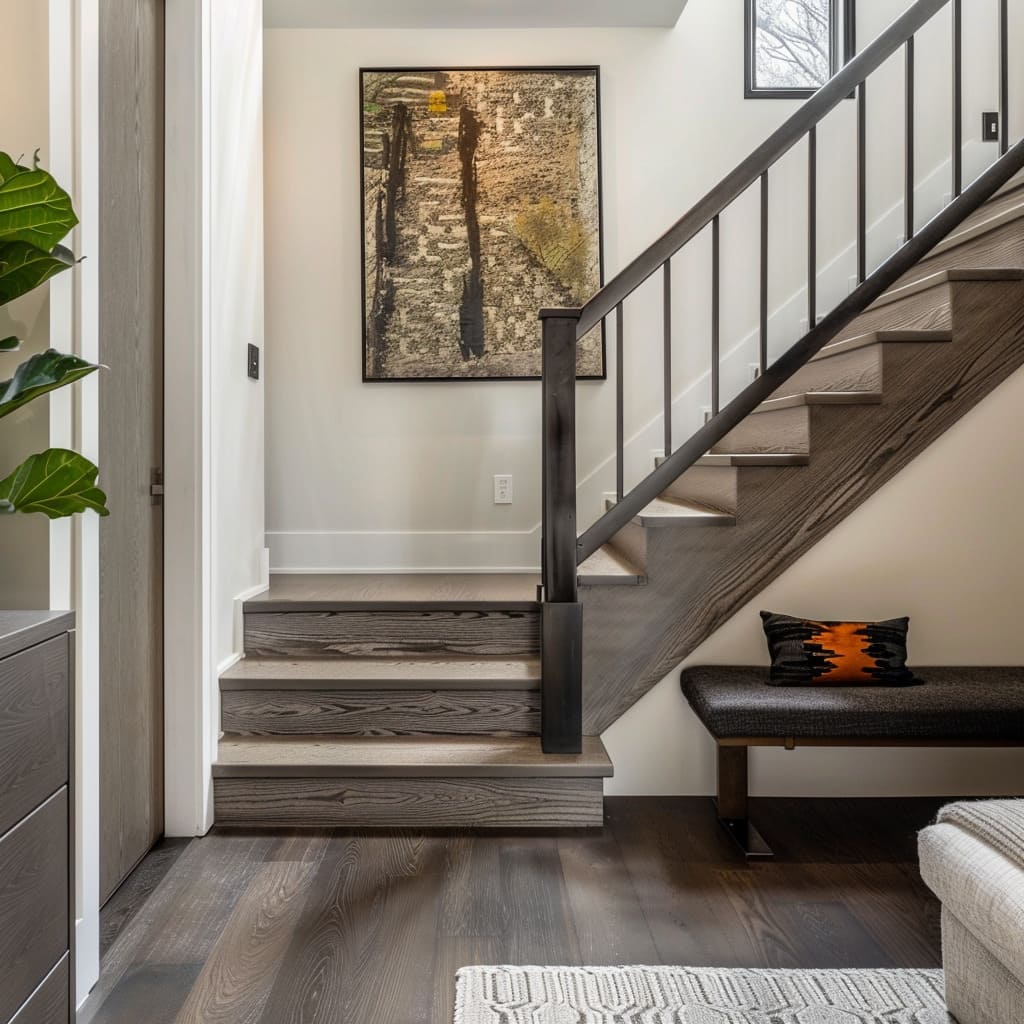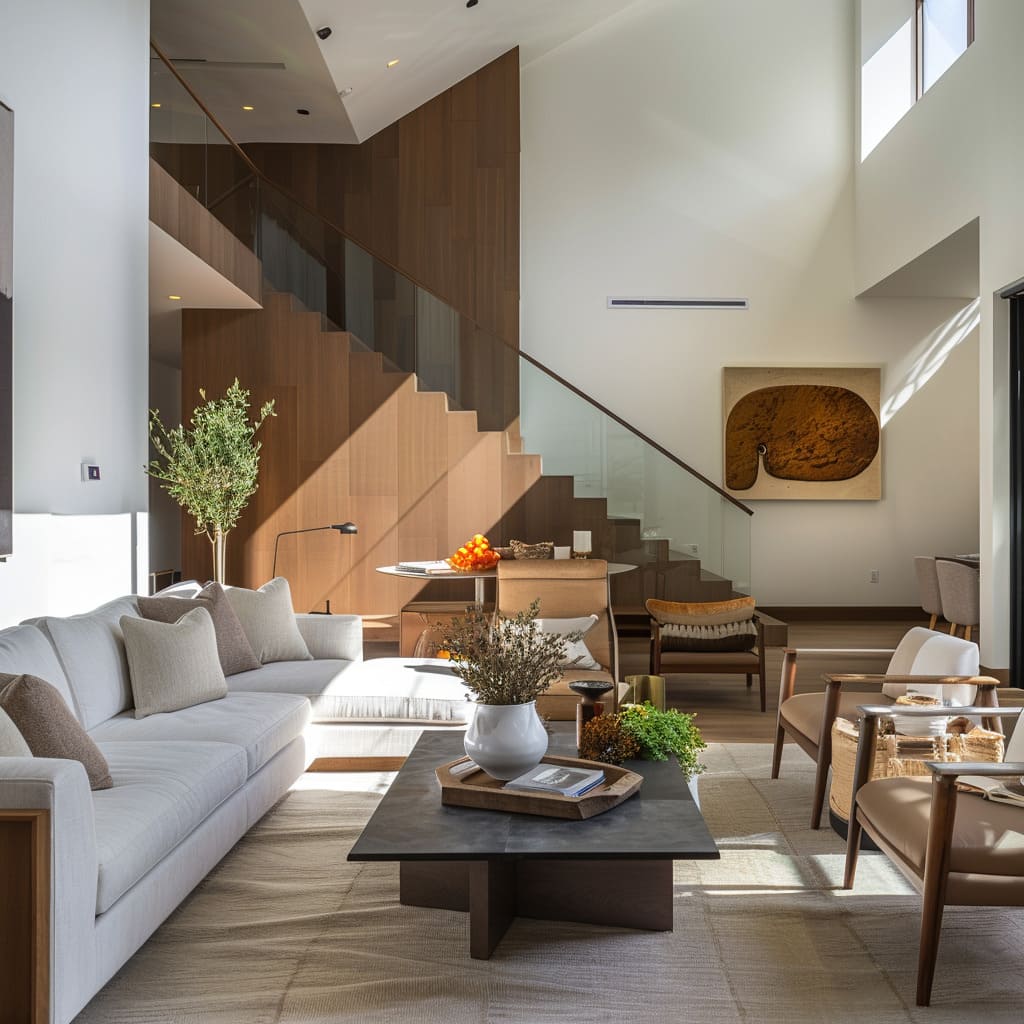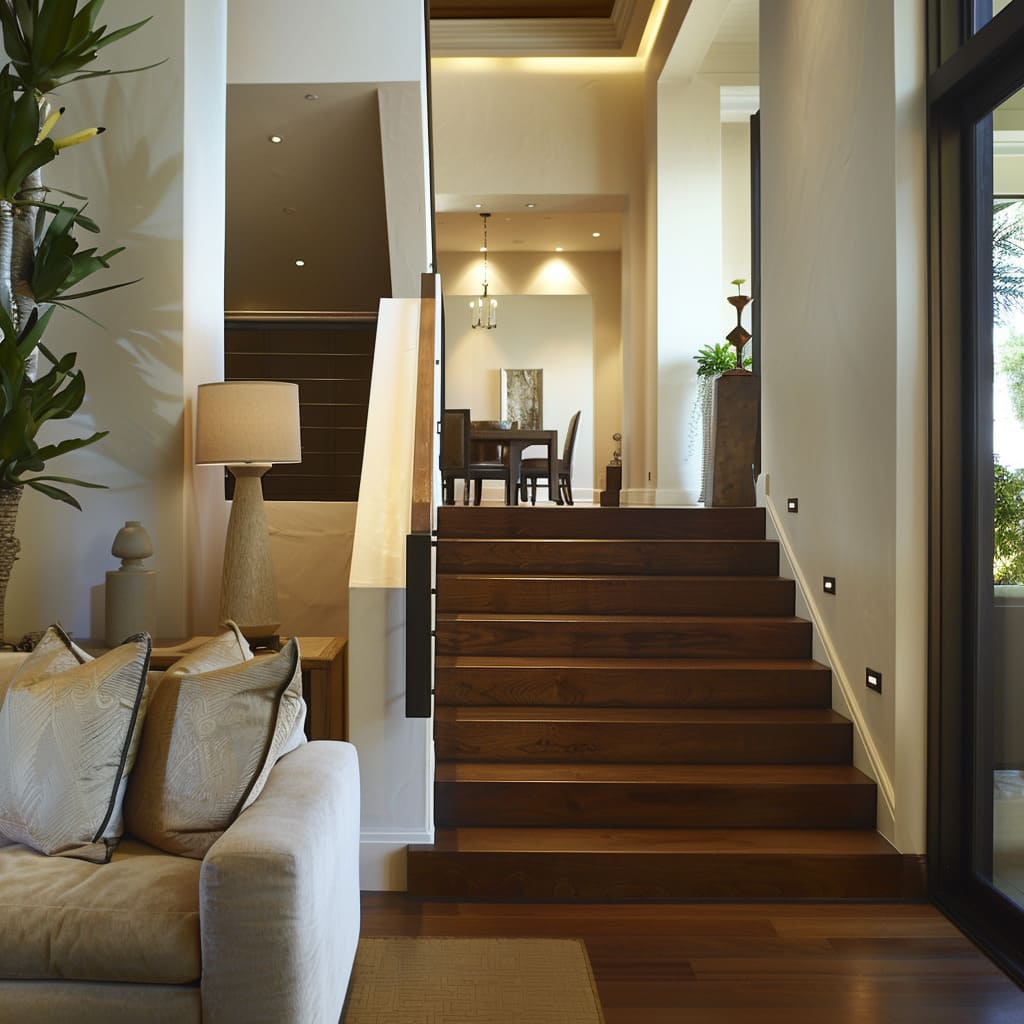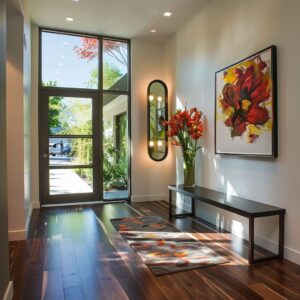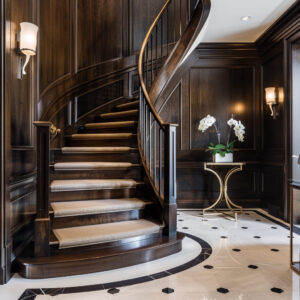Staircase design plays a crucial role in home interiors, influencing both functionality and visual appeal. A well-designed staircase not only facilitates movement between different levels of a house but also acts as a prominent architectural element.
The right staircase can transform an ordinary space into something remarkable, serving as a focal point that draws the eye and enhances the overall aesthetic of a home.
Modern staircases and railings have evolved significantly, embracing new materials, styles, and concepts. These designs often blend contemporary and transitional elements, creating a look that is both stylish and timeless.
The use of clean lines, minimalistic handrails, and a mix of materials such as wood, metal, and glass defines the modern approach to staircase design.
Incorporating modern staircases and railings into a home involves more than just choosing the right materials. It requires careful consideration of the home’s existing decor and architectural style to ensure a harmonious integration.
For example, a staircase with dark wood steps and sleek metal handrails can complement a living room with light wood flooring and neutral-toned furniture. The goal is to create a seamless transition between the staircase and the surrounding spaces, enhancing the overall flow and coherence of the home.
One of the key aspects of modern staircase design is its ability to act as a statement piece. The staircase becomes more than just a functional necessity; it becomes a central feature that adds character and charm to the home.
Whether it’s through the use of bold, abstract artwork on the adjacent walls, or the inclusion of decorative elements like plants and sculptures, modern staircases often reflect the personality and taste of the homeowner.
The best staircase design takes into account both aesthetics and practicality. Safety features such as sturdy handrails, non-slip surfaces, and adequate lighting are essential.
At the same time, the design on stairs should be visually appealing, incorporating elements that align with the overall theme of the home.
In summary, modern staircases and railings represent a blend of innovation and style, transforming ordinary staircases into striking architectural features. By integrating these designs thoughtfully, homeowners can enhance both the function and beauty of their interiors, creating spaces that are not only practical but also visually captivating.
Materials and Finishes
Light Wood Steps
Using light wood for staircase steps brings a sense of warmth and texture to the interior design. The natural grain of light wood provides a subtle yet appealing visual interest that enhances the overall aesthetic of the space.
Light wood steps often feature finishes that highlight the wood’s inherent beauty, making each step a unique element within the staircase.
The benefits of light wood are manifold. Firstly, its warm tones can make a space feel more inviting and cozy.
The texture of the wood adds a tactile element that is both pleasing to the touch and visually attractive. Additionally, light wood is versatile and can complement a wide range of interior styles, from traditional to contemporary.
For instance, light wood steps with a natural grain and subtle finishes can seamlessly integrate into various home designs. This kind of wooden stairs design creates a soft, welcoming atmosphere, especially when paired with other natural materials and neutral color schemes.
The simplicity and elegance of light wood make it a popular choice for homeowners looking to create a harmonious and inviting home environment.
Dark Wood Elements
Incorporating dark wood into staircase design offers a sophisticated and rich aesthetic. Dark wood steps, handrails, and paneling bring a sense of depth and luxury to the space.
The contrast between dark wood and lighter elements in the home creates a dramatic visual effect that can significantly enhance the overall design. Dark wood is often used to create a modern wooden staircase that exudes elegance and refinement.
The deep tones of dark wood can anchor a room, providing a strong visual foundation. When used for steps, handrails, or wall paneling, dark wood adds a touch of timelessness and class.
For example, a contemporary wooden staircase featuring dark wood steps and handrails can make a bold statement. The juxtaposition of dark wood against light-colored walls or flooring highlights the staircase as a focal point.
This use of contrast not only elevates the staircase’s visual appeal but also adds a layer of sophistication to the entire home.
Mixed Materials
Combining different materials such as wood, metal, and glass in staircase design results in a modern and dynamic look. Mixed materials bring together the best of various textures and finishes, creating a staircase that is both functional and visually striking.
The use of mixed materials is particularly effective in modern aesthetics. For instance, pairing dark wood with black metal handrails can create a sleek and contemporary look.
Glass panels can be incorporated to add transparency and lightness, making the staircase appear less bulky and more integrated into the surrounding space.
A simple wood stairs design can be elevated by incorporating metal and glass elements. The combination of dark wood steps with sleek metal railings and glass panels not only enhances the staircase’s aesthetic appeal but also adds to its functionality.
This approach to stairs design for home interiors ensures that the staircase is a standout feature while maintaining a harmonious balance with the rest of the home.
In summary, the use of light wood, dark wood, and mixed materials in staircase design offers a range of possibilities for creating beautiful and functional staircases. Whether opting for the warmth of light wood, the sophistication of dark wood, or the modern appeal of mixed materials, these design choices contribute significantly to the overall aesthetic and atmosphere of a home.
Design and Aesthetic
Clean Lines and Minimalist Design
In modern staircase design, clean lines and a minimalist approach are paramount. These elements help create a streamlined and uncluttered look, which is essential for contemporary homes.
The simplicity of clean lines not only adds to the visual appeal but also contributes to the functionality of the space.
Minimalist design focuses on reducing excess and highlighting essential features. This approach enhances the overall look by creating a sense of order and elegance.
Modern staircase railing designs often incorporate sleek, straight lines, which are visually striking and functional. Thin metal balusters, for instance, are a popular choice for achieving a minimalist look.
They provide the necessary support while maintaining a light and open feel, contributing to the staircase’s modern aesthetic.
Examples highlight the effectiveness of this approach. Sleek, modern handrails and thin metal balusters are frequently mentioned as key features.
These elements work together to create a sophisticated and contemporary look that elevates the entire space. The use of clean lines in staircase design is not just about aesthetics; it also makes maintenance easier and ensures the staircase integrates seamlessly with the rest of the home.
Textured Wall Treatments
Textured walls play a significant role in complementing staircase design. They add depth and interest to what could otherwise be a flat, unremarkable surface.
Different types of textures can be used to achieve various visual effects, enhancing the overall design of the staircase area. One common approach is the use of white, three-dimensional panels.
These panels create a subtle but impactful texture that catches the light and adds visual complexity. Another popular option is wood paneling, which brings warmth and a natural element to the space.
Wood paneling can range from smooth and polished to rough and rustic, each providing a unique look that complements different styles of staircases.
Textured wall treatments are particularly effective in modern staircase design, where they can add a layer of sophistication and detail. For example, a contemporary staircase design might feature smooth wood paneling that contrasts with the sleek metal handrails and balusters.
This combination creates a balanced and harmonious look, where each element enhances the others.
Integration of Artwork and Decor
Incorporating artwork and decor into staircase areas is an excellent way to enhance their visual appeal. Art pieces and decorative items can transform a staircase from a mere functional element into a focal point of the home.
The placement of these items is crucial, as it should complement the staircase design without overwhelming it. Large abstract paintings are a popular choice for modern staircase areas.
Their bold colors and dynamic compositions can add a sense of energy and creativity to the space. Placing a large painting on a wall adjacent to the staircase can create a striking visual impact, drawing attention to the staircase and enhancing its design.
Decorative vases and plants are also effective in adding character to staircase areas. A well-placed vase with fresh flowers or a tall potted plant can introduce natural elements and bring life to the space.
These items work particularly well in modern staircase designs, where their organic shapes and colors provide a pleasing contrast to the clean lines and sleek materials.
The images show how artwork and decor can be thoughtfully integrated into staircase areas. A modern staircase might feature a large, abstract painting on one wall, with a decorative vase on a nearby table and a potted plant in the corner.
These elements add layers of interest and make the staircase a focal point within the home.
In conclusion, the design and aesthetic of modern staircases and railings are greatly enhanced by the use of clean lines, textured walls, and carefully chosen artwork and decor. These elements work together to create a cohesive and visually appealing space that elevates the overall look of the home.
By paying attention to these design details, homeowners can transform their staircases into stunning architectural features.
Functional Elements
Safety and Comfort
When it comes to staircase design, safety and comfort are paramount. A well-designed staircase not only enhances the visual appeal of a home but also ensures the safety and ease of use for all its occupants.
Incorporating essential safety features is critical to achieving the best staircase design. One of the most important safety elements in a staircase is the handrail.
Handrails provide crucial support, helping to prevent falls and ensuring stability while ascending or descending. Contemporary railings for interior stairs often combine aesthetic appeal with functionality.
Sleek, modern handrails made from durable materials such as metal or wood are not only stylish but also sturdy and reliable.
Another key aspect of safety is the use of proper lighting. Integrated LED strip lighting is an excellent choice for modern staircases.
These lights can be installed under each step, providing gentle illumination that enhances visibility without causing glare. This type of lighting is particularly beneficial in creating a safe environment, especially in low-light conditions.
The subtle glow of LED lights also adds a touch of elegance to the staircase, contributing to its overall aesthetic.
Comfort is another crucial consideration in staircase design. Carpeting is one way to add comfort to stairs.
A light beige carpet, for example, not only softens each step but also adds warmth and texture to the space. This type of carpeting provides a non-slip surface, reducing the risk of falls and making the staircase more comfortable to use, especially for barefoot or socked feet.
These elements of safety and comfort are exemplified in various contemporary staircase designs. Light beige carpets and integrated LED strip lighting are commonly featured, demonstrating how functionality and aesthetics can be seamlessly combined to create staircases that are both beautiful and practical.
Storage Solutions
In small homes, maximizing space is essential. Staircases offer unique opportunities for incorporating storage solutions, helping to keep the home organized and clutter-free.
Small space stairs design often includes innovative storage options that make use of the space under and around the staircase. One popular method is the incorporation of hidden storage within the staircase structure itself.
Built-in storage in wood paneling can transform an otherwise unused area into a functional space. Drawers, cabinets, and shelves can be seamlessly integrated into the staircase, providing ample storage without compromising the design.
For example, the area under the stairs can be fitted with pull-out drawers or cabinets, offering a discreet place to store items such as shoes, books, or household supplies. This approach not only utilizes the space efficiently but also maintains a clean and uncluttered look.
Another innovative solution is the use of the staircase risers as storage compartments. In some designs, each riser can be transformed into a drawer, offering additional hidden storage.
This clever use of space is ideal for storing smaller items that need to be easily accessible yet out of sight.
Incorporating storage into staircase design is particularly useful in homes with limited space. By making use of every available inch, homeowners can keep their living areas tidy and organized.
The best staircase design combines aesthetics with practicality, ensuring that every aspect of the staircase serves a functional purpose.
In summary, the functional elements of modern staircases are integral to their overall design. Safety features such as sturdy handrails and proper lighting, along with comfort elements like carpeting, are essential for creating a staircase that is both beautiful and safe.
Additionally, innovative storage solutions help maximize space, making the most of the staircase’s structure. These considerations are key to achieving a contemporary staircase that enhances both the function and style of a home.
Lighting and Ambiance
Natural Lighting
Natural light plays a crucial role in enhancing the appeal of staircase areas. A well-lit staircase not only looks more inviting but also feels more spacious and connected to the rest of the home.
The strategic use of natural light can highlight the architectural details and materials used in the staircase, such as the grain of the wood or the sleekness of a modern staircase handrail design. To maximize natural light in staircase areas, several design considerations should be taken into account.
Placing windows adjacent to staircases is one effective strategy. These windows can flood the staircase with daylight, making the space feel brighter and more open.
Additionally, the use of light-colored walls around the staircase can reflect natural light, further enhancing the luminosity of the area.
For instance, a staircase design featuring large windows nearby can create an airy and open atmosphere. The natural light pouring in can accentuate the clean lines and materials of the staircase, whether it is an open stairs design or a more enclosed structure.
Light-colored walls not only complement the natural light but also provide a neutral backdrop that allows the staircase’s design elements to stand out. The placement and size of windows are crucial for optimizing natural light.
In some designs, windows might be positioned at different heights along the staircase to ensure even distribution of light throughout the day. This approach can create a dynamic lighting effect that changes with the time of day, adding depth and interest to the staircase area.
Artificial Lighting
Artificial lighting is another essential element in staircase design, providing illumination when natural light is insufficient and enhancing the overall ambiance of the space. Different types of artificial lighting can be used to achieve various effects, from task lighting to ambient lighting, each contributing to the staircase’s functionality and aesthetic appeal.
Recessed lighting is a popular choice for modern staircase designs. These lights are installed into the ceiling or walls, providing a clean and unobtrusive source of illumination.
Recessed ceiling lights can highlight the staircase’s structure and materials, creating a subtle glow that enhances the space without overpowering it. This type of lighting is particularly effective in showcasing the fine details of a simple stairs design, where the emphasis is on the materials and craftsmanship.
Ambient lighting, such as floor lamps or wall sconces, can add warmth and depth to the staircase area. A well-placed floor lamp at the base of the stairs can provide a welcoming glow, while wall sconces along the staircase can create a rhythmic lighting pattern that guides the way.
These lighting fixtures not only improve visibility but also contribute to the overall aesthetic, complementing the modern staircase handrail design and other elements.
For example, recessed ceiling lights combined with a stylish floor lamp can create a balanced lighting scheme that highlights both the functional and decorative aspects of the staircase. The ambient light from the floor lamp can soften the space, making it feel more inviting, while the focused light from the recessed fixtures can accentuate the clean lines and materials used in the staircase and handrail.
Moreover, the use of integrated LED strip lighting under each step is a modern approach that provides both safety and style. This type of lighting can illuminate each step, reducing the risk of trips and falls while adding a sleek, contemporary touch to the staircase.
The gentle glow from LED strips can highlight the texture of the steps and create a floating effect, especially in open stairs design.
The thoughtful integration of natural and artificial lighting is crucial for enhancing the ambiance and functionality of staircase areas. By maximizing natural light with well-placed windows and light-colored walls, and complementing it with recessed lighting, floor lamps, and LED strips, homeowners can create a staircase that is both safe and visually appealing.
These lighting strategies ensure that the staircase not only serves its practical purpose but also becomes a striking feature within the home.
Natural light plays a crucial role in enhancing the appeal and functionality of staircase areas. Well-placed natural lighting can transform a staircase from a purely functional element to a central feature of the home.
The infusion of natural light can highlight the architectural details, materials, and craftsmanship involved in the staircase design, adding depth and warmth to the space.
To maximize natural light in staircase areas, strategic design considerations are essential. Placing windows adjacent to staircases is a highly effective strategy.
Windows allow daylight to flood the staircase, making it feel more open and inviting. Additionally, the use of light-colored walls around the staircase can reflect natural light, further enhancing the brightness and creating a sense of spaciousness.
The placement and size of windows are crucial for optimizing natural light. Windows positioned at different heights along the staircase can ensure even distribution of light throughout the day.
This approach creates a dynamic lighting effect that changes with the time of day, adding depth and interest to the staircase area. Additionally, skylights can be used to bring in natural light from above, illuminating the staircase and the surrounding area from a unique angle.
Integration with Living Areas
Seamless Transitions
Creating seamless transitions between staircases and living spaces is crucial for maintaining a cohesive and fluid home design. The goal is to ensure that the staircase feels like a natural extension of the living area, rather than an isolated or disjointed element.
This can be achieved through thoughtful choices in flooring, colors, and materials. One effective strategy is to use the same flooring material in both the staircase and the adjacent living areas.
For example, extending light wood flooring from the living room into the staircase area creates a unified look. This continuity in flooring helps to visually connect the two spaces, making the transition smooth and natural.
Light wood flooring also adds warmth and brightness, complementing both modern and traditional interiors.
In addition to continuous flooring, area rugs can be used to define different zones within an open-plan space while still maintaining a cohesive design. An area rug placed at the base of the staircase can anchor the seating area, providing a soft, inviting surface that contrasts with the hard wood flooring.
The rug’s color and pattern should complement the overall color scheme of the room, ensuring a harmonious blend between the staircase and living area.
The choice of handrail design for staircase also plays a significant role in creating seamless transitions. A modern staircase handrail design that echoes the materials and colors used in the living room furniture can help tie the spaces together.
For instance, a sleek, dark metal handrail that matches the metal accents on a coffee table or the frames of artwork creates a sense of design continuity.
Complementary Furniture and Decor
Selecting furniture and decor that complement the staircase design is essential for achieving a cohesive and visually appealing interior. The key is to ensure that the furnishings enhance the staircase’s design without overwhelming it, creating a balanced and harmonious look.
Start by choosing furniture pieces that reflect the same design principles as the staircase. For example, if the staircase features clean lines and modern materials, opt for furniture with similar characteristics.
Plush sofas with sleek silhouettes, modern coffee tables with metal or wood finishes, and minimalist side tables can all contribute to a cohesive look.
Decorative pillows and throws in colors that complement the staircase’s materials can add texture and warmth to the seating area. For instance, if the designed stairs feature light wood and neutral tones, pillows in shades of beige, cream, or soft gray can tie the room together.
Similarly, decorative items such as vases, sculptures, and artwork should be chosen to reflect the staircase’s style and color palette.
Plants and greenery can also play a significant role in connecting the staircase to the living area. Placing a large potted plant near the base of the staircase can add a touch of nature and vibrancy, enhancing the overall aesthetic.
The greenery can soften the hard lines of the staircase and add a sense of freshness to the space. Lighting fixtures are another important element in achieving a cohesive design.
Modern floor lamps or table lamps with finishes that match the staircase’s materials can provide additional illumination and enhance the overall ambiance. For instance, a floor lamp with a dark metal base that matches the modern staircase handrail design can create a unified look.
Artwork should be strategically placed to complement both the staircase and the living area. Large abstract paintings or framed prints that reflect the color scheme and style of the staircase can create visual interest and tie the spaces together.
The placement of these art pieces should consider sightlines from both the staircase and the living area, ensuring that they enhance the overall design from multiple perspectives.
In summary, integrating staircases designs with living areas involves careful consideration of flooring, furniture, decor, and lighting. By selecting complementary materials, colors, and design elements, homeowners can create a seamless transition between these spaces, enhancing both the functionality and aesthetic appeal of their home.
This holistic approach ensures that the staircase is not just a functional necessity but a central feature that contributes to the home’s overall design.
Conclusion
Modern staircase and railing design can significantly enhance the overall aesthetic and functionality of home interiors. By carefully selecting materials, such as light and dark woods, and integrating mixed materials like metal and glass, homeowners can create beautiful staircases that serve as both a functional necessity and a striking visual feature.
Clean lines and minimalist designs play a crucial role in modern staircase aesthetics. Incorporating sleek handrails, thin metal balusters, and well-chosen textures like three-dimensional wall panels or wood paneling contributes to a cohesive and contemporary look.
Additionally, the integration of artwork and decor, such as large abstract paintings or decorative vases, further elevates the staircase area, making it a central element of interior design.
Functional elements such as safety features, comfort, and storage solutions are essential components of staircase design. Ensuring proper lighting, using light beige carpeting for comfort, and integrating hidden storage within the staircase structure maximize both the practicality and appeal of the staircase.
These elements are particularly important in small space stairs design, where every inch of space needs to be utilized efficiently.
Lighting and ambiance also play a significant role in enhancing the staircase area. Maximizing natural light through strategically placed windows and light-colored walls creates an inviting and open atmosphere.
Complementing this with artificial lighting, such as recessed ceiling lights and floor lamps, ensures that the staircase is well-lit and visually appealing at all times. Integrated LED strip lighting under each step adds both safety and a modern touch to the design.
Creating seamless transitions between staircases and living spaces is crucial for maintaining a cohesive home design. Using consistent flooring materials and strategically placing area rugs can visually connect these areas.
Selecting complementary furniture and decor that reflect the staircase’s design elements helps achieve a unified look, ensuring that the staircase integrates smoothly with the rest of the home.
Stair decorations and modern stair railing designs are pivotal in creating a cohesive and stylish look. Thoughtful placement of plants, artwork, and decorative items can enhance the staircase area, making it not just functional but also an attractive focal point.
In summary, a well-designed staircase can transform a home’s interior, blending aesthetics and functionality seamlessly. By paying attention to materials, lighting, safety, and decor, homeowners can create staircases that are not only practical but also beautiful and inviting.
Modern staircase handrail designs, combined with thoughtful stair decorations and cohesive design choices, ensure that staircases serve as a central, enhancing feature in home interiors.

